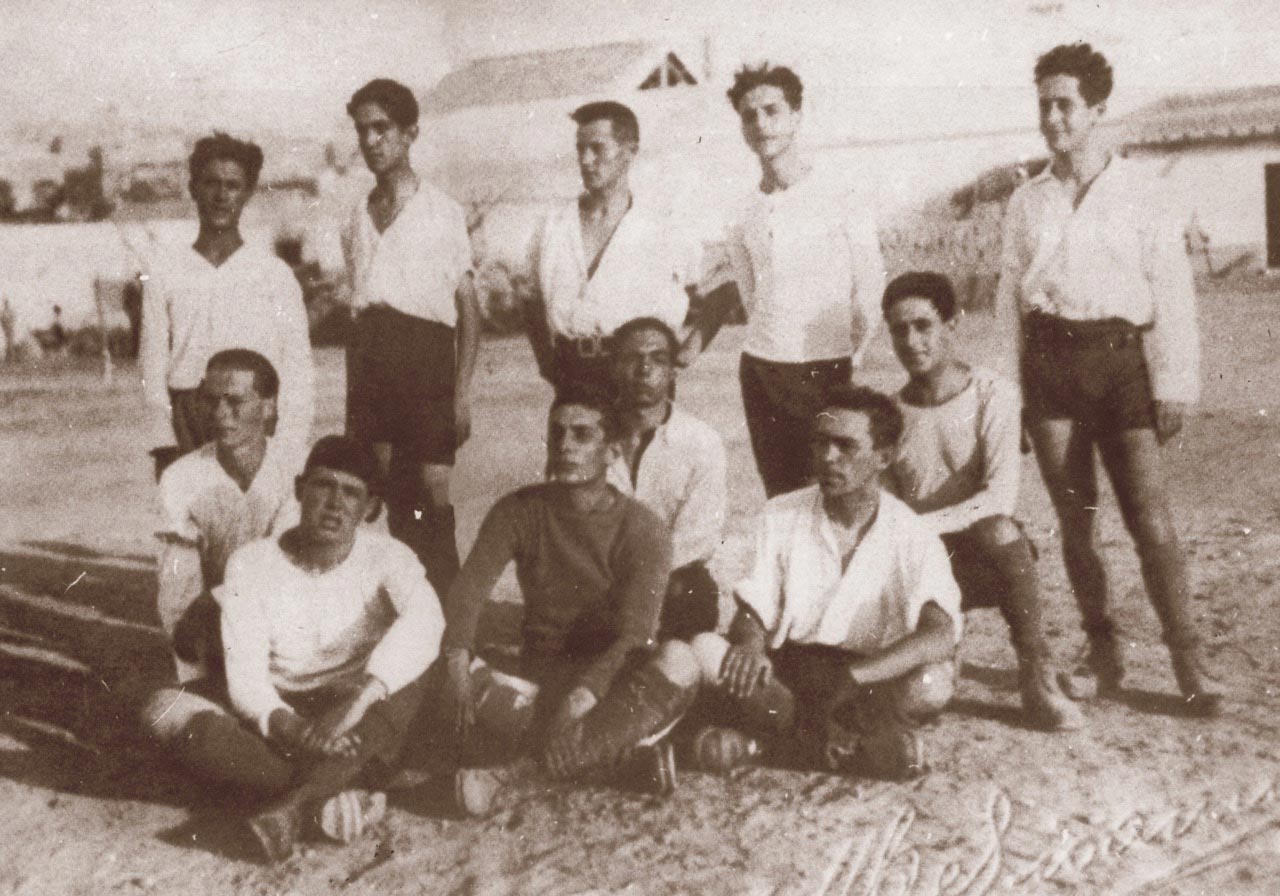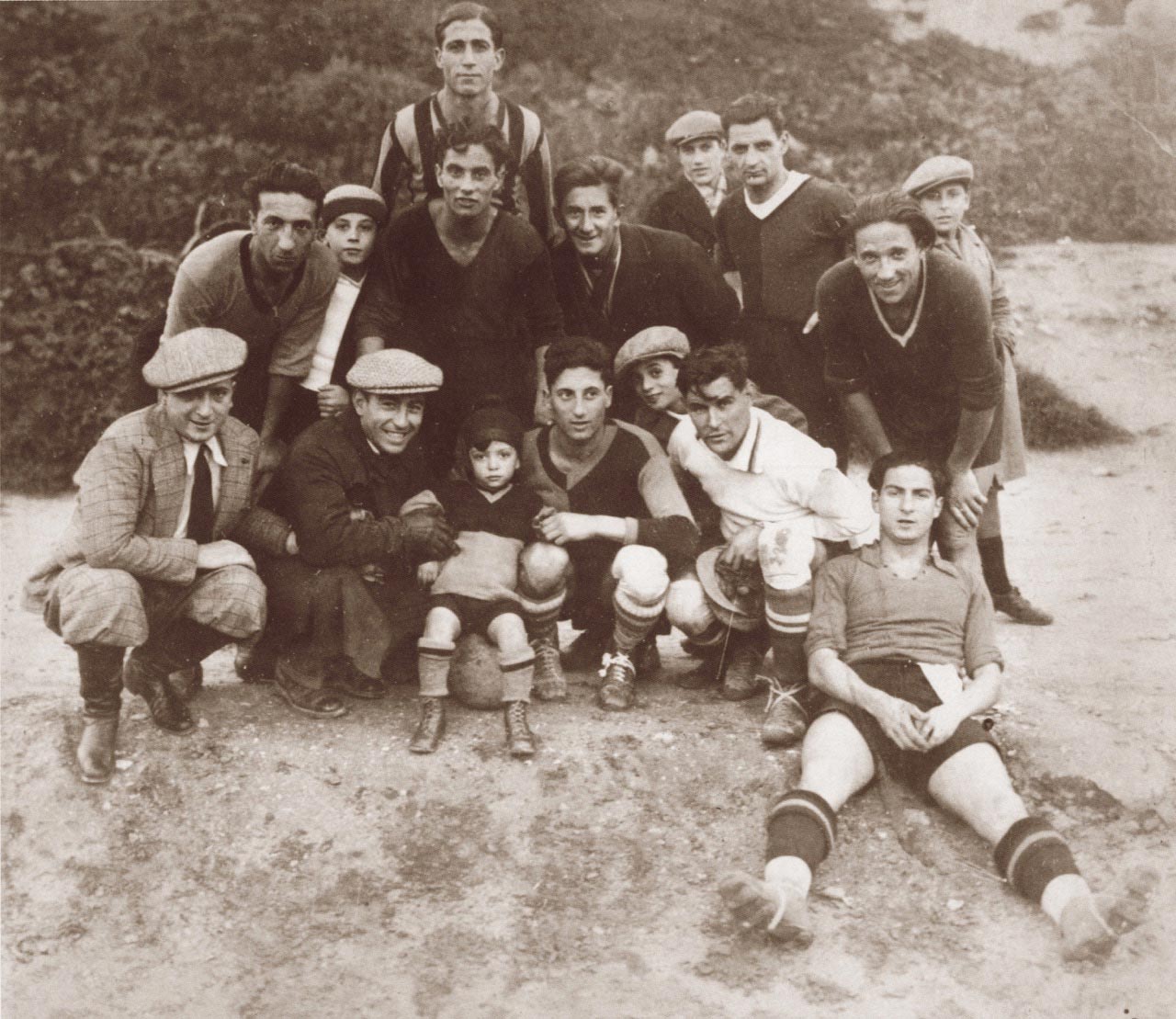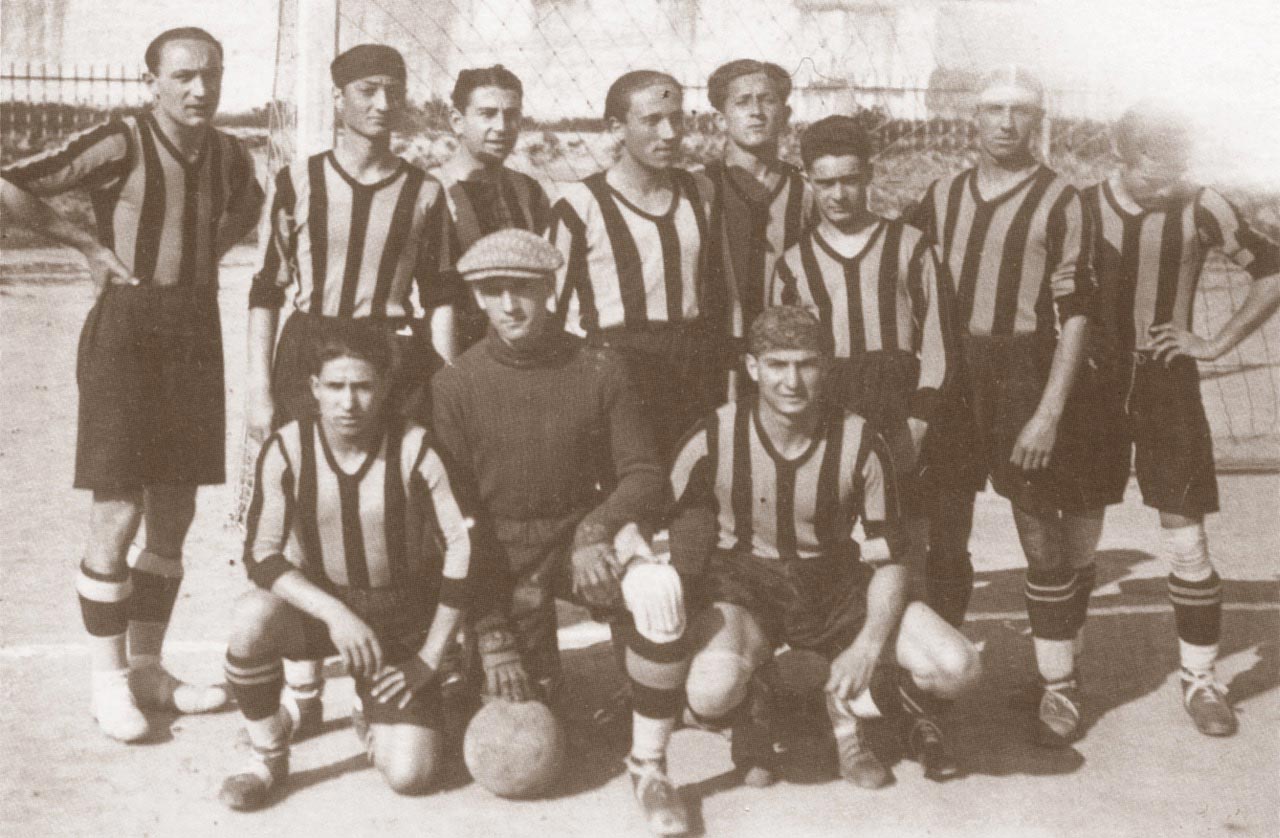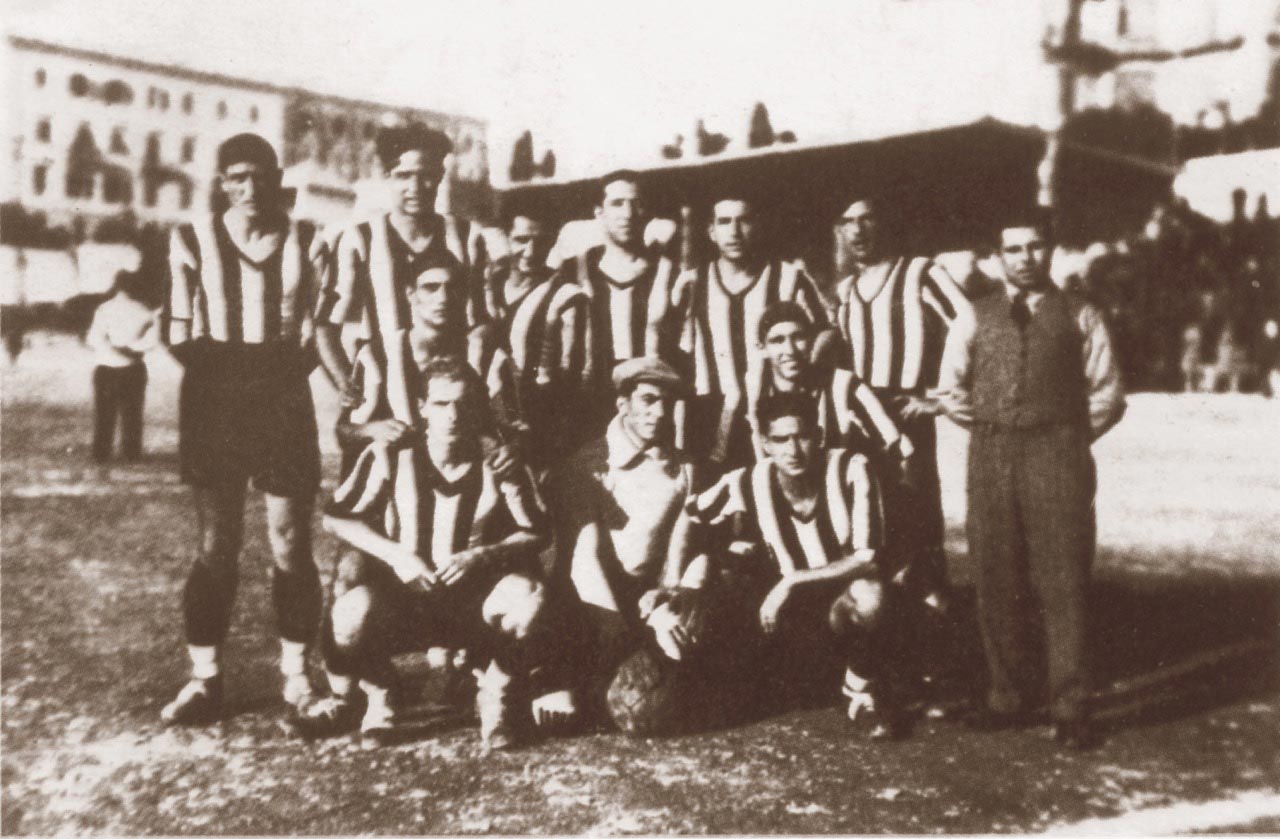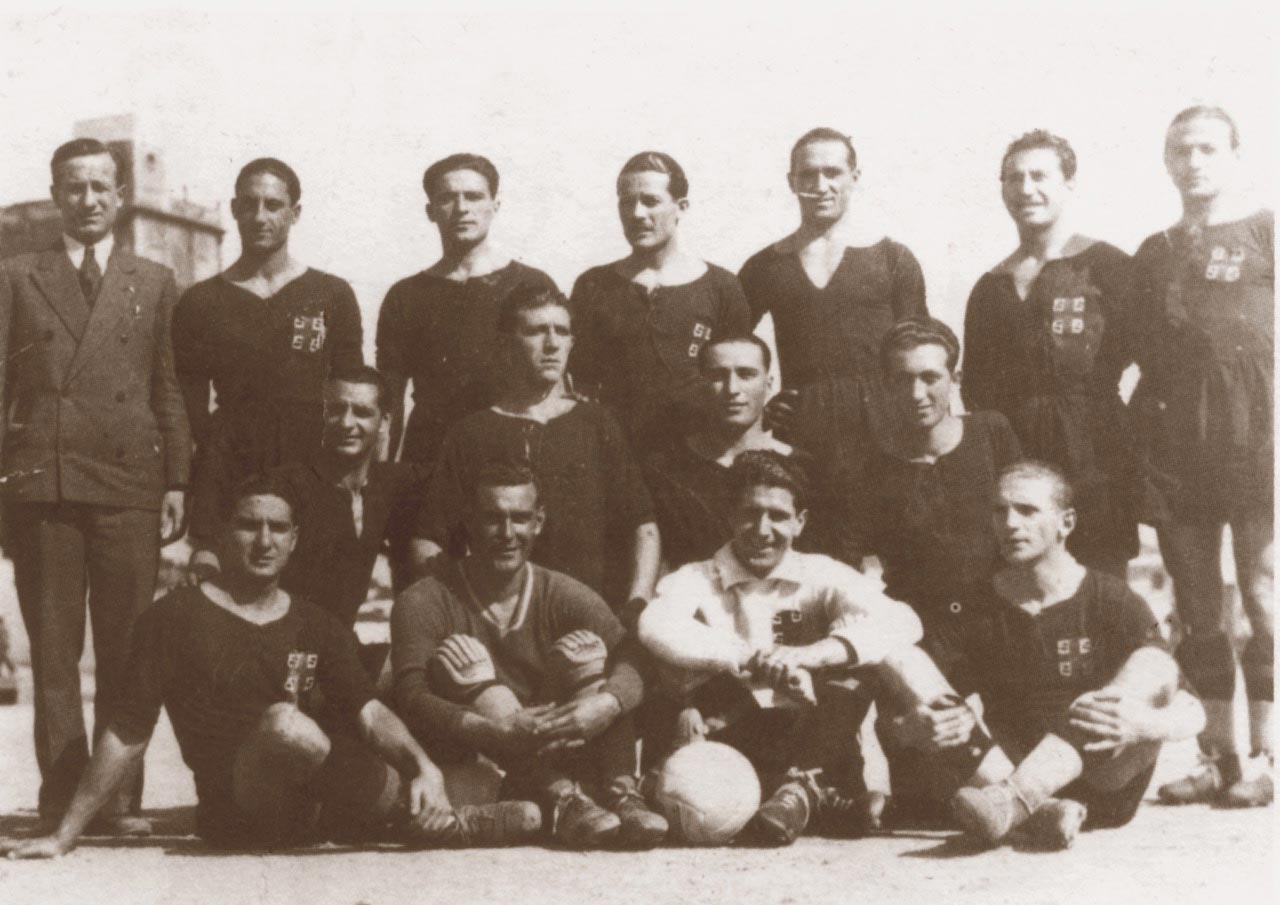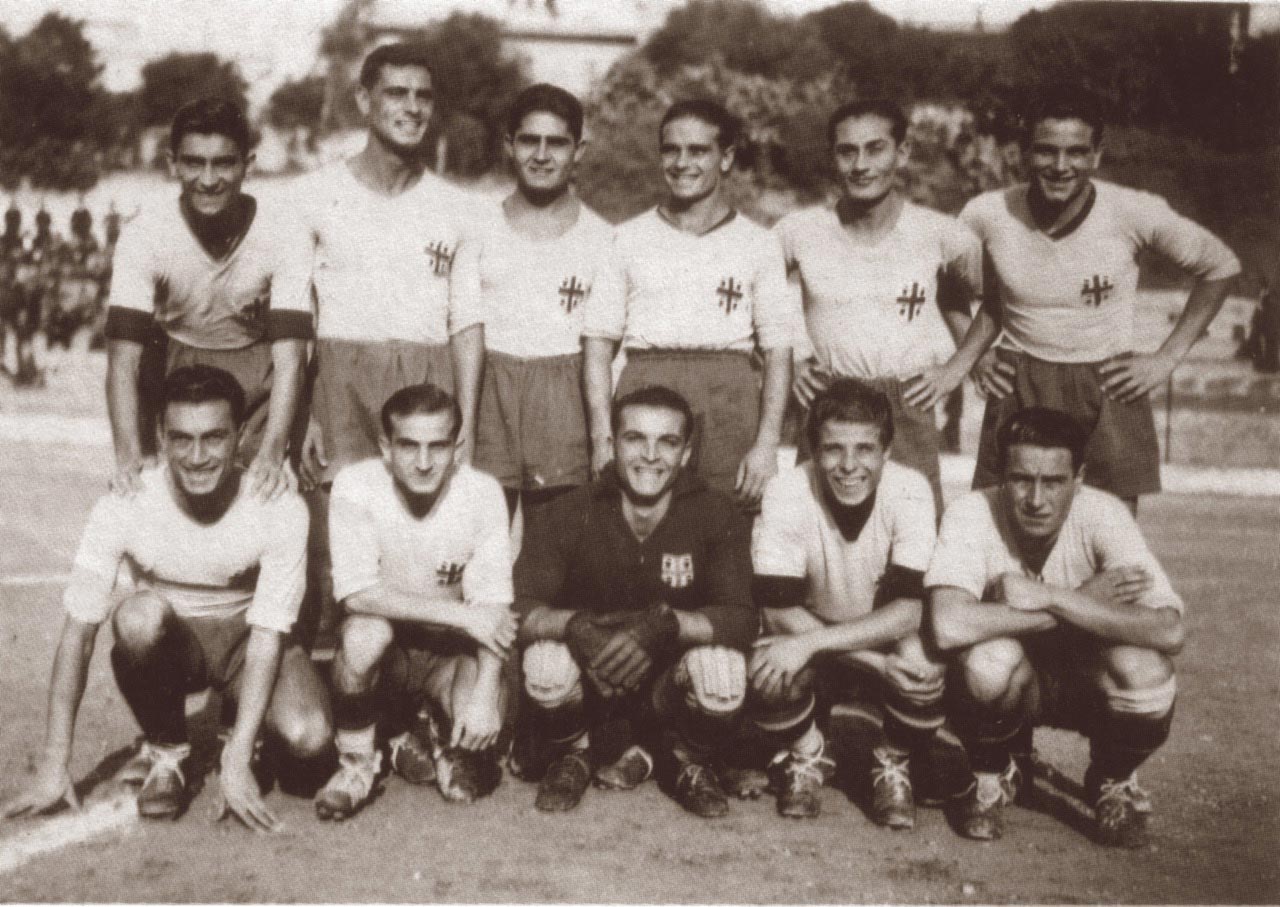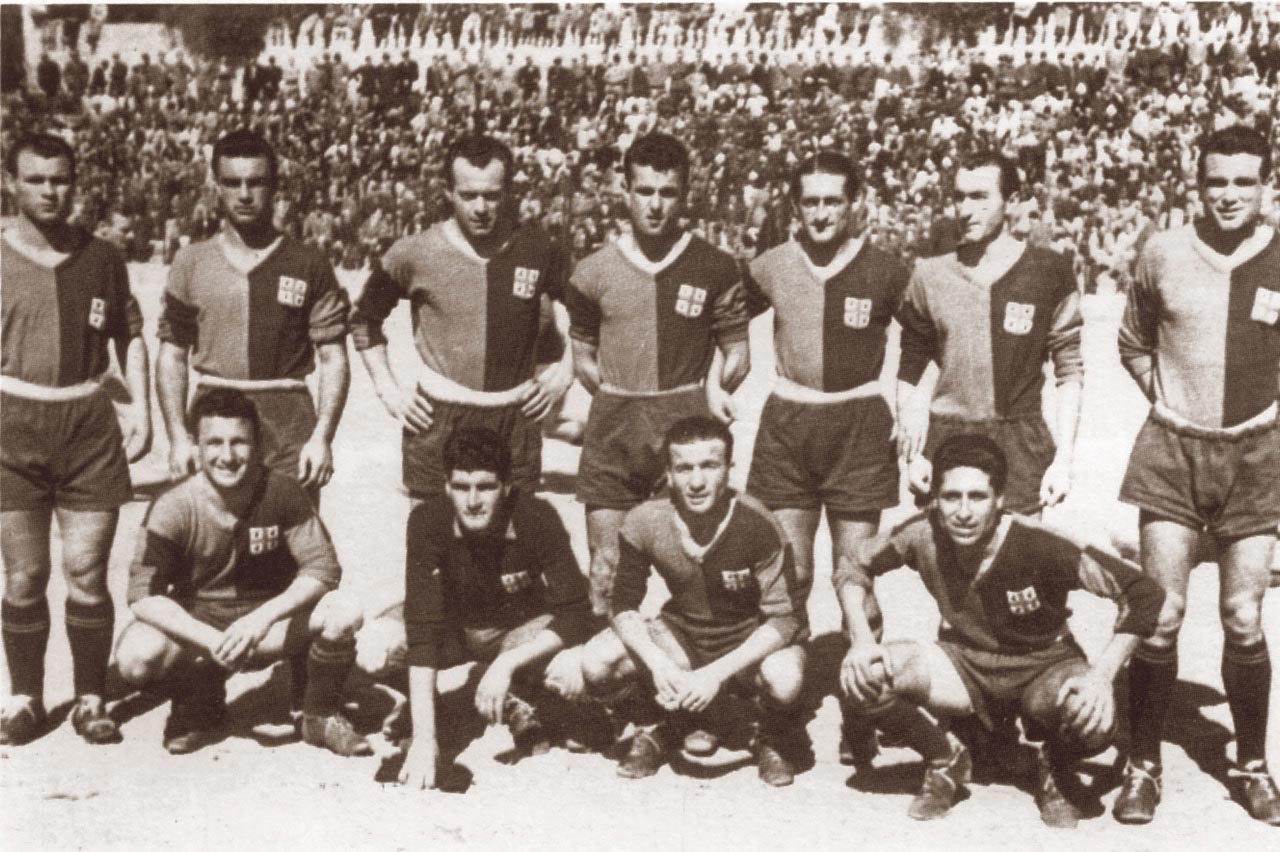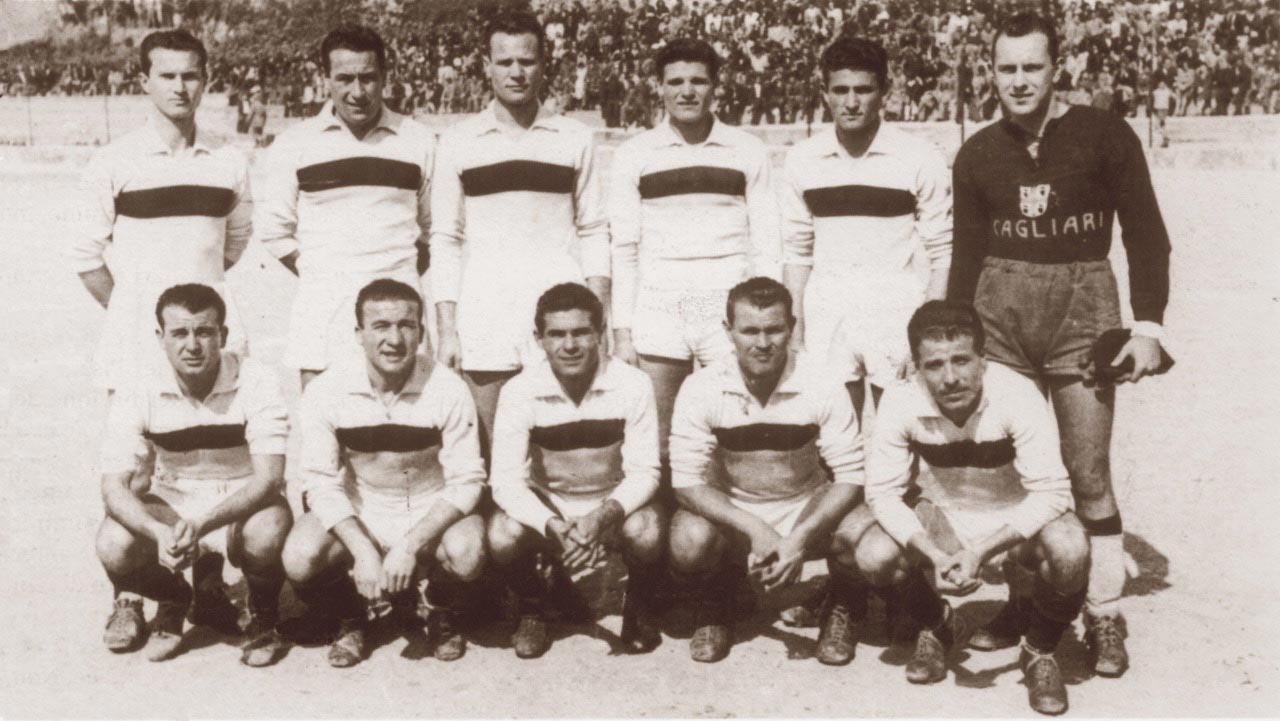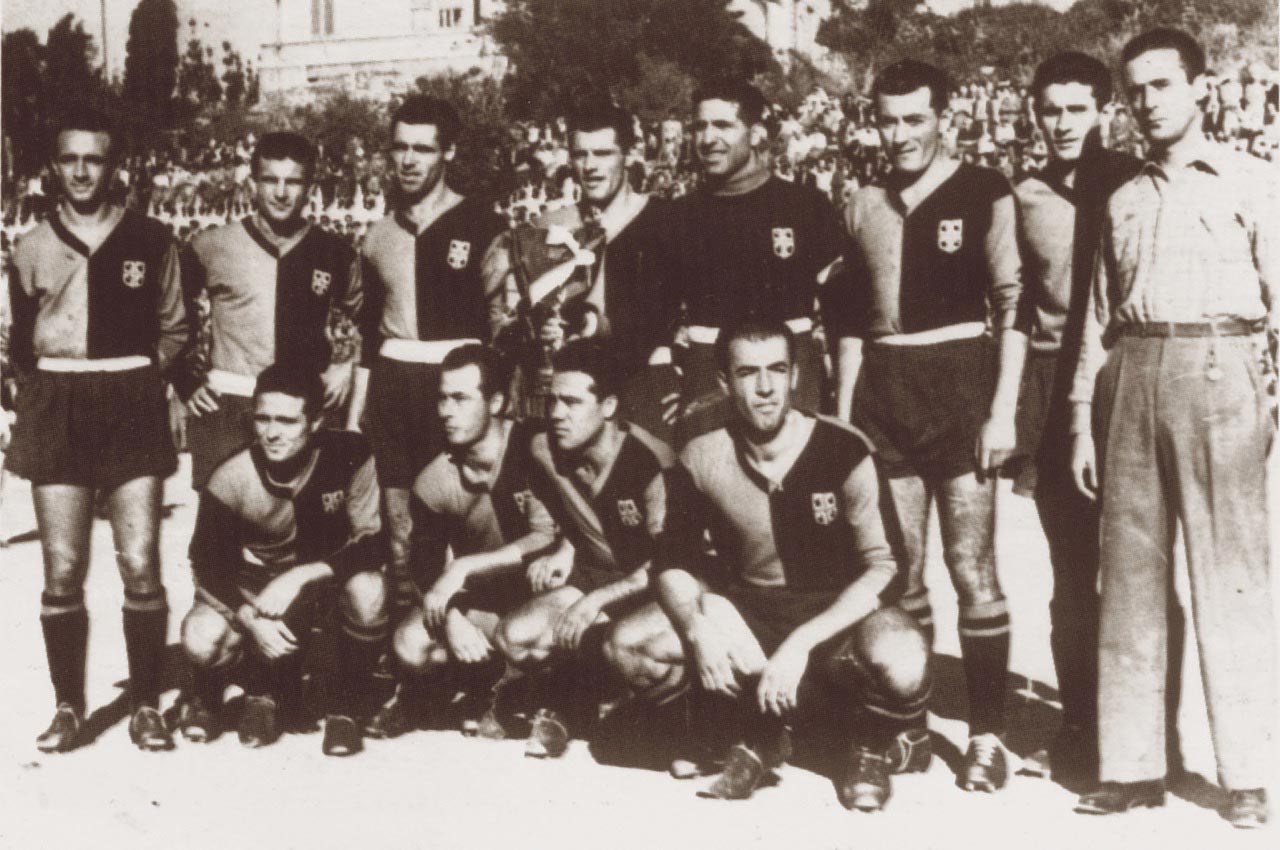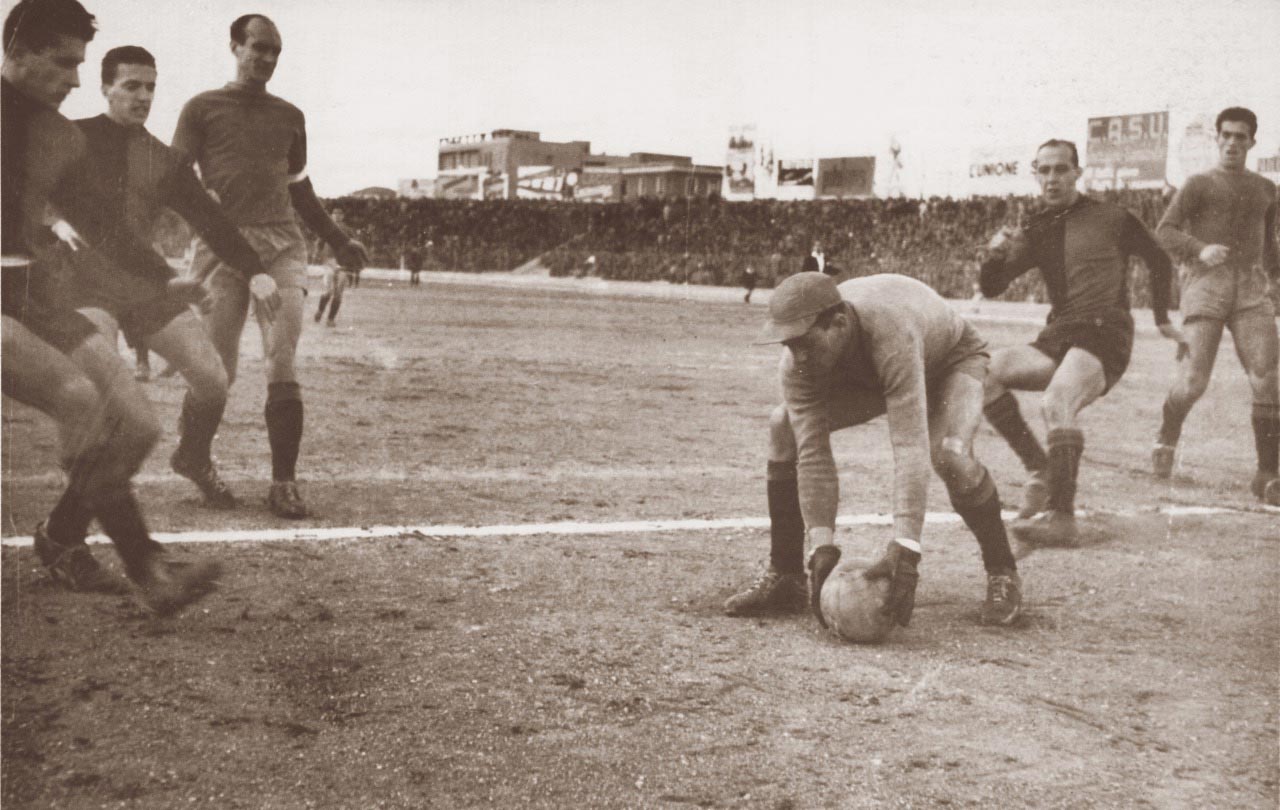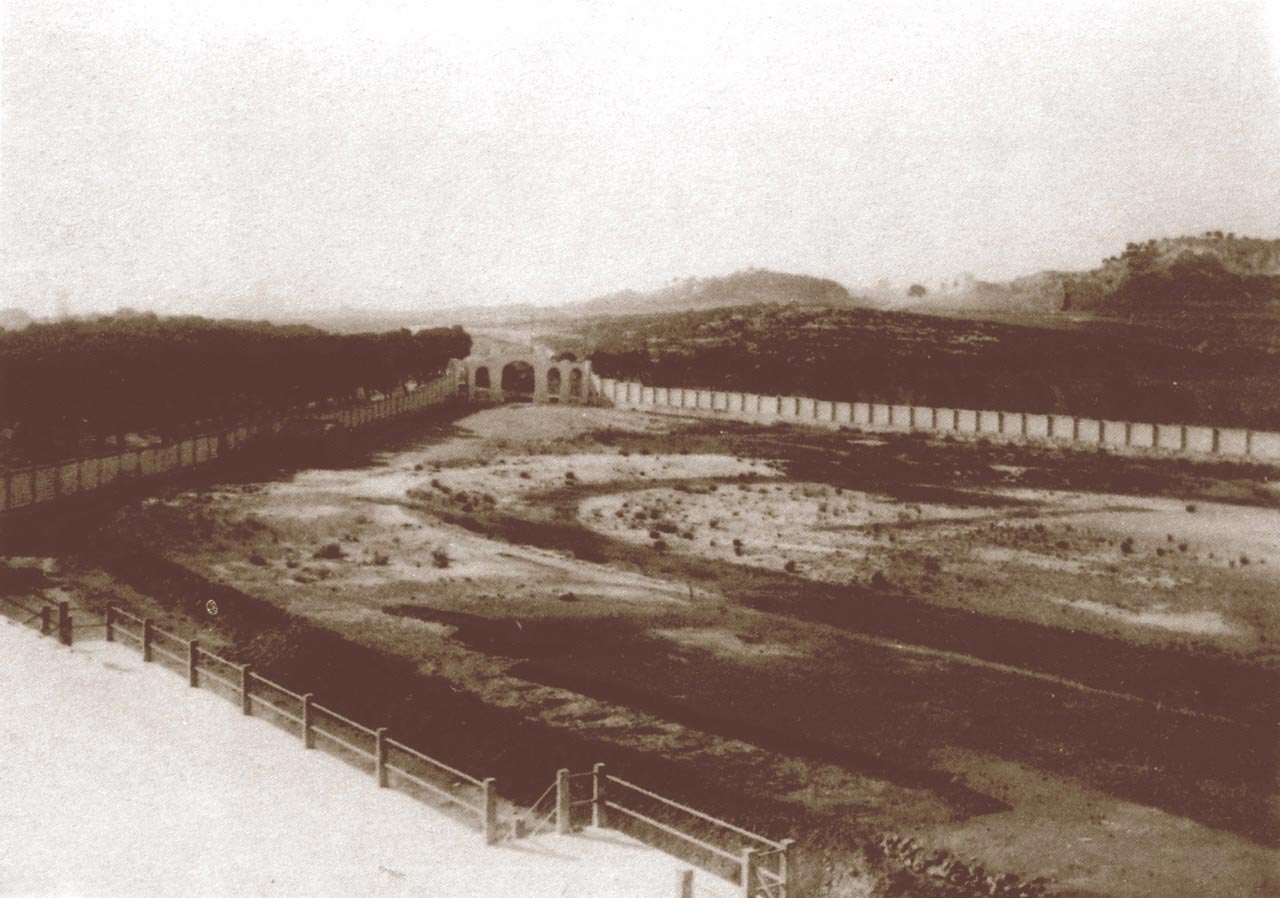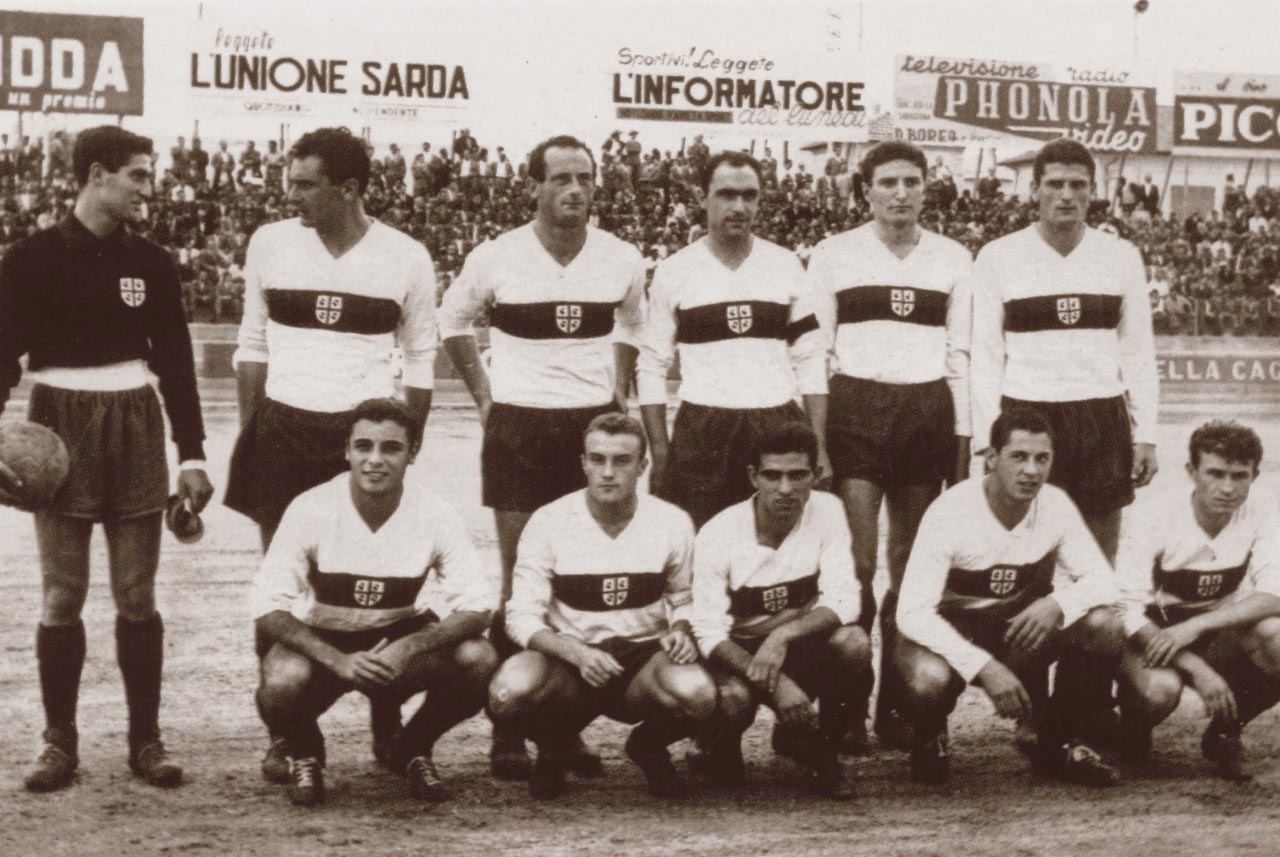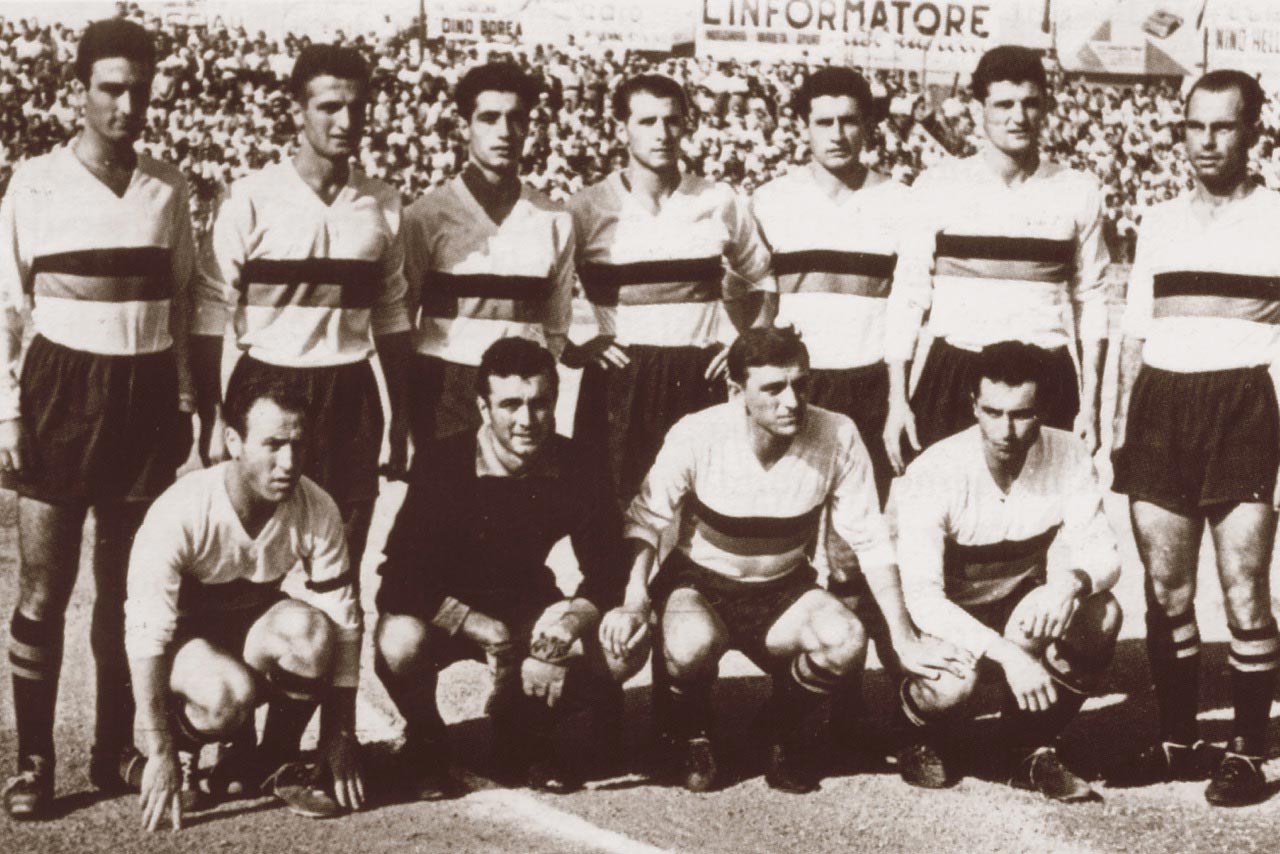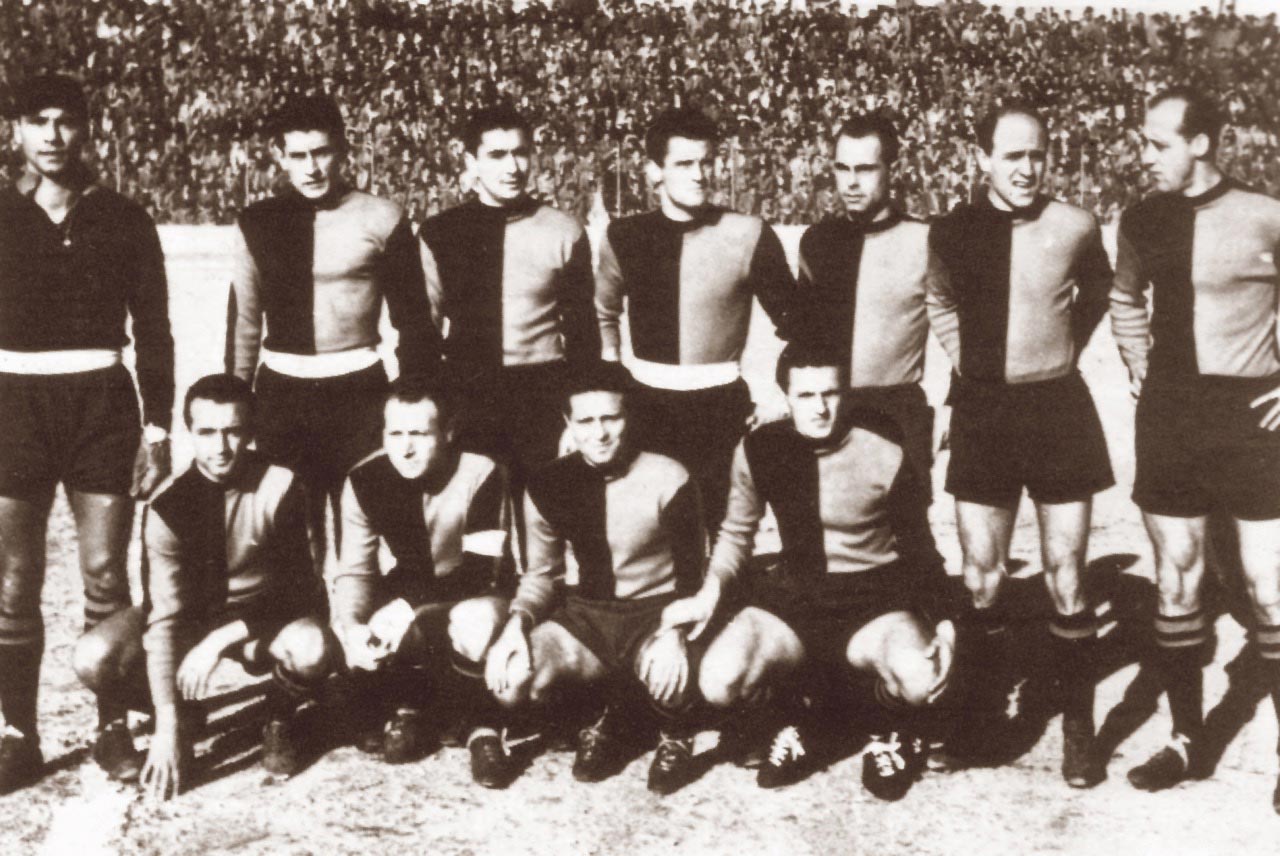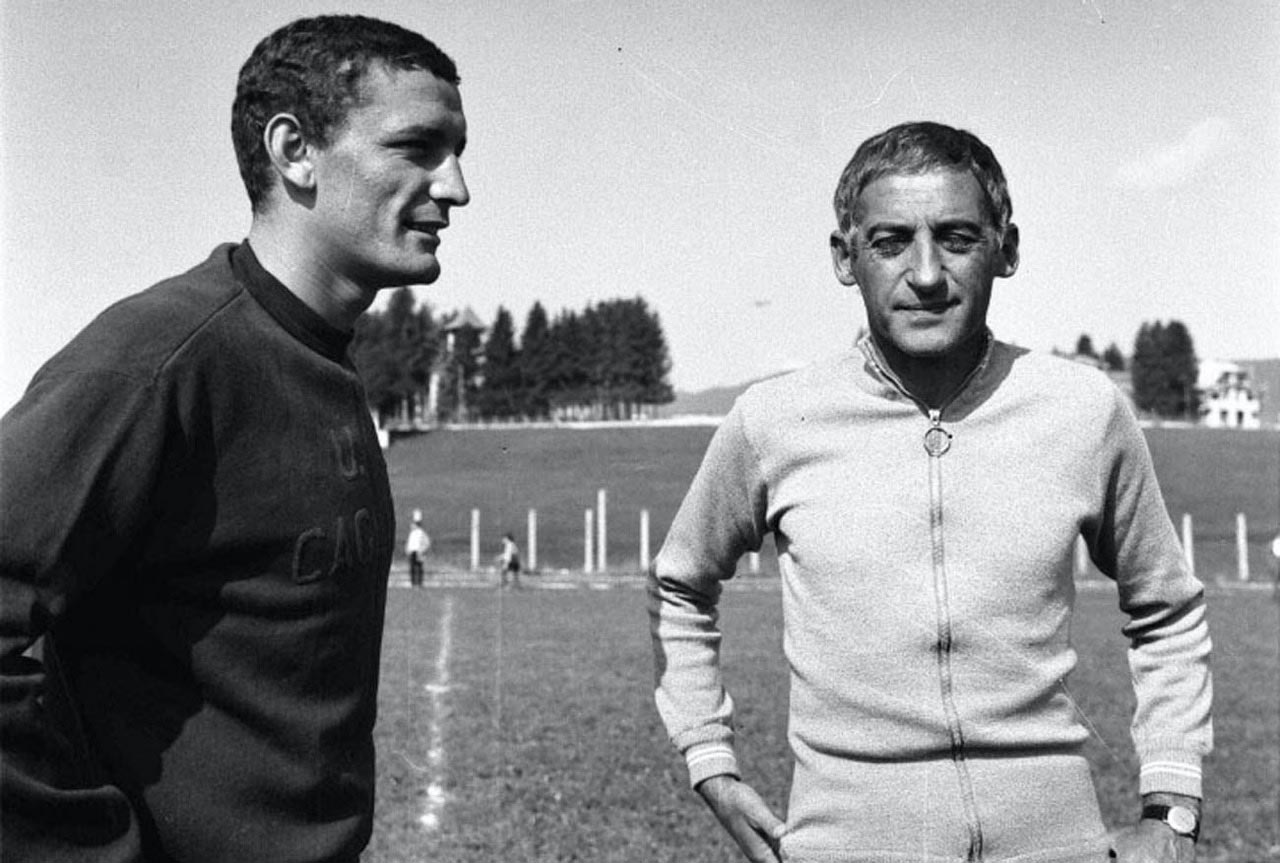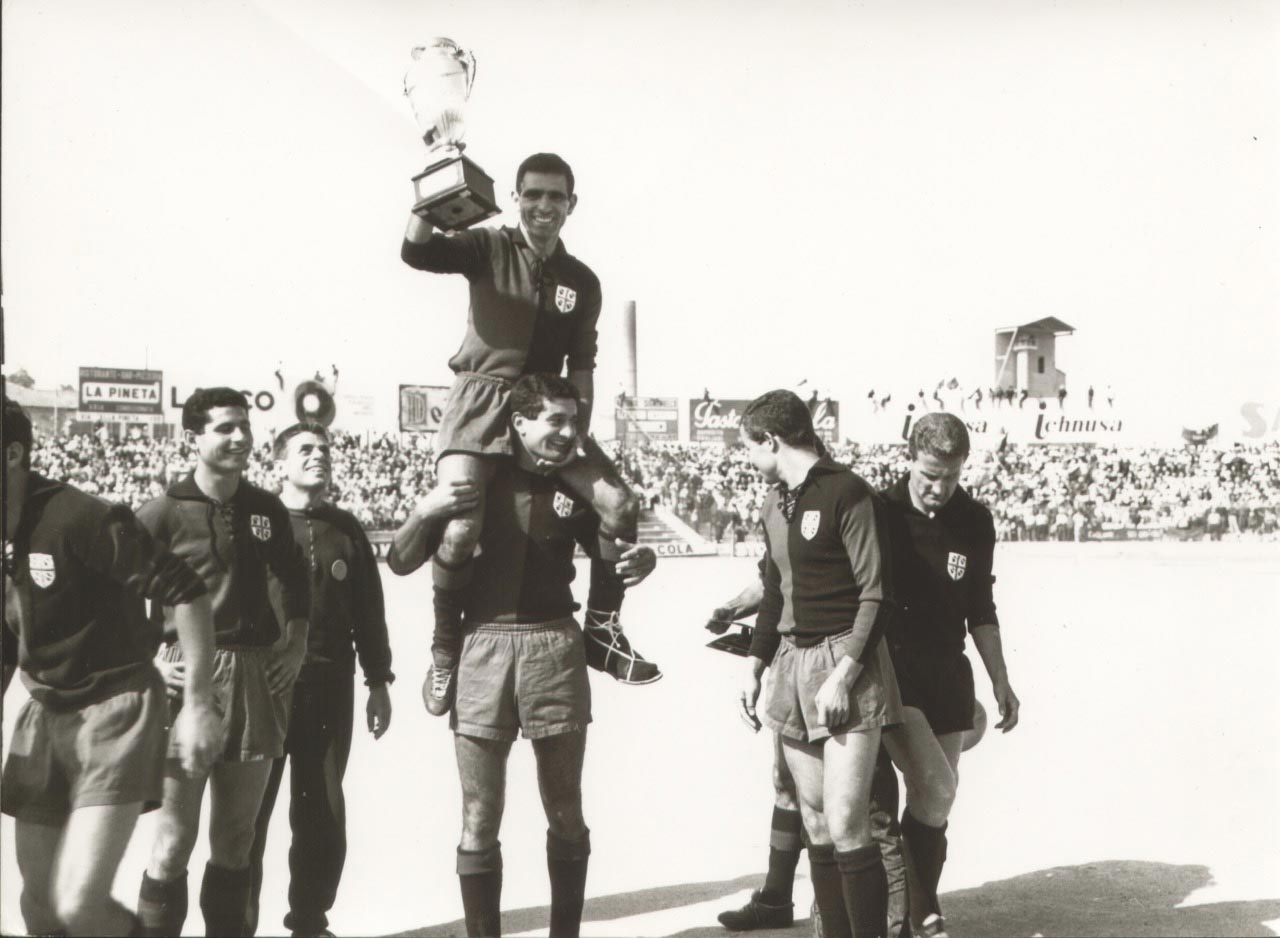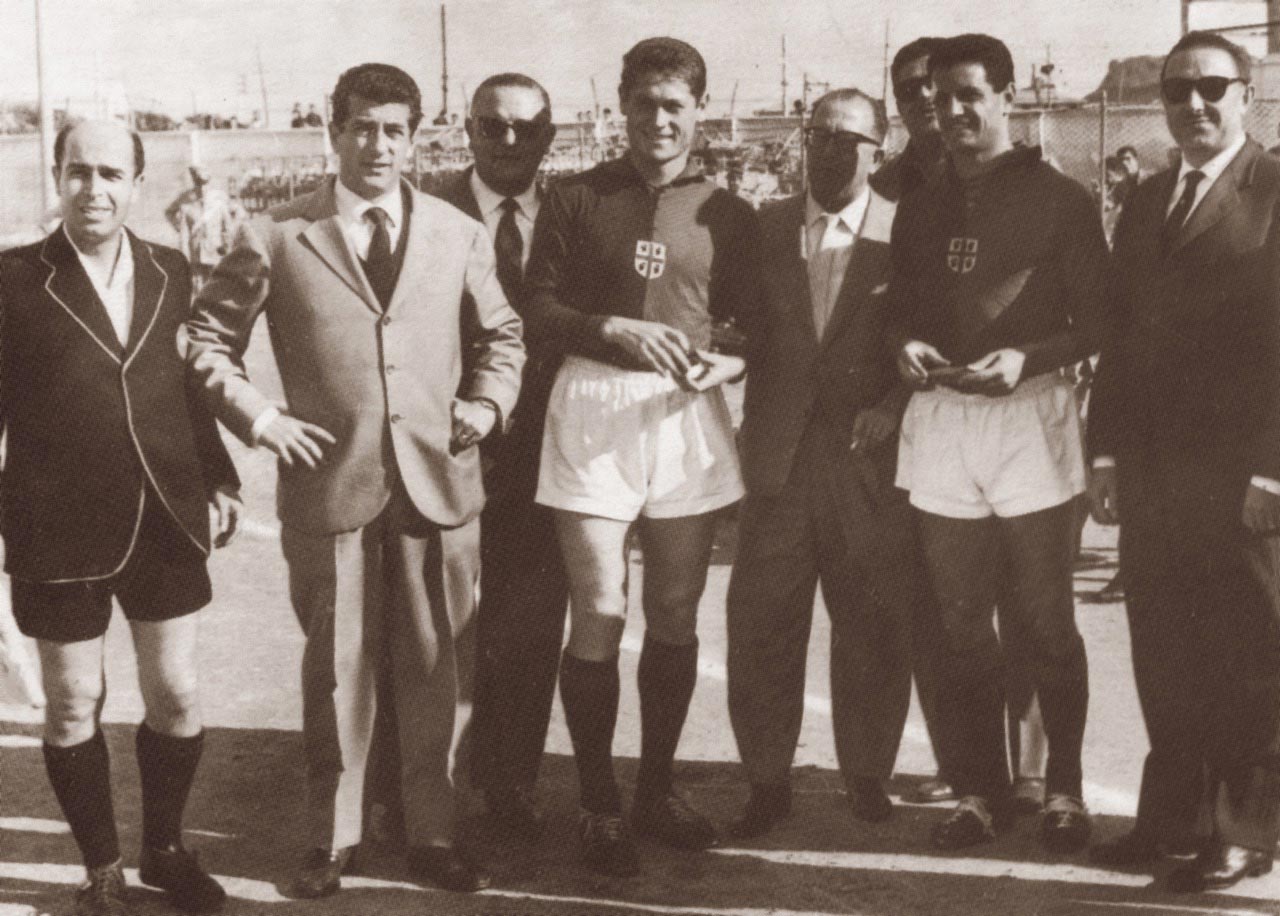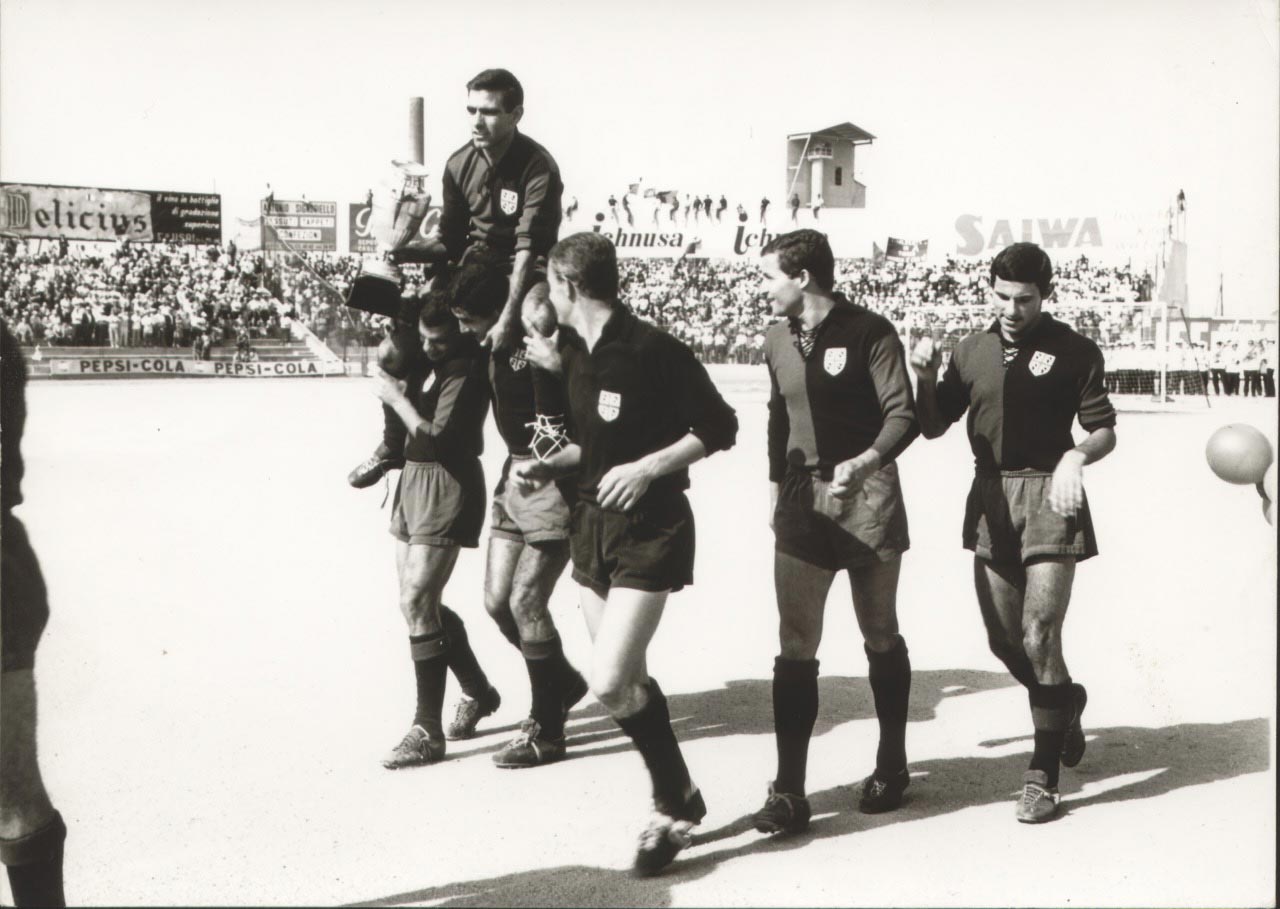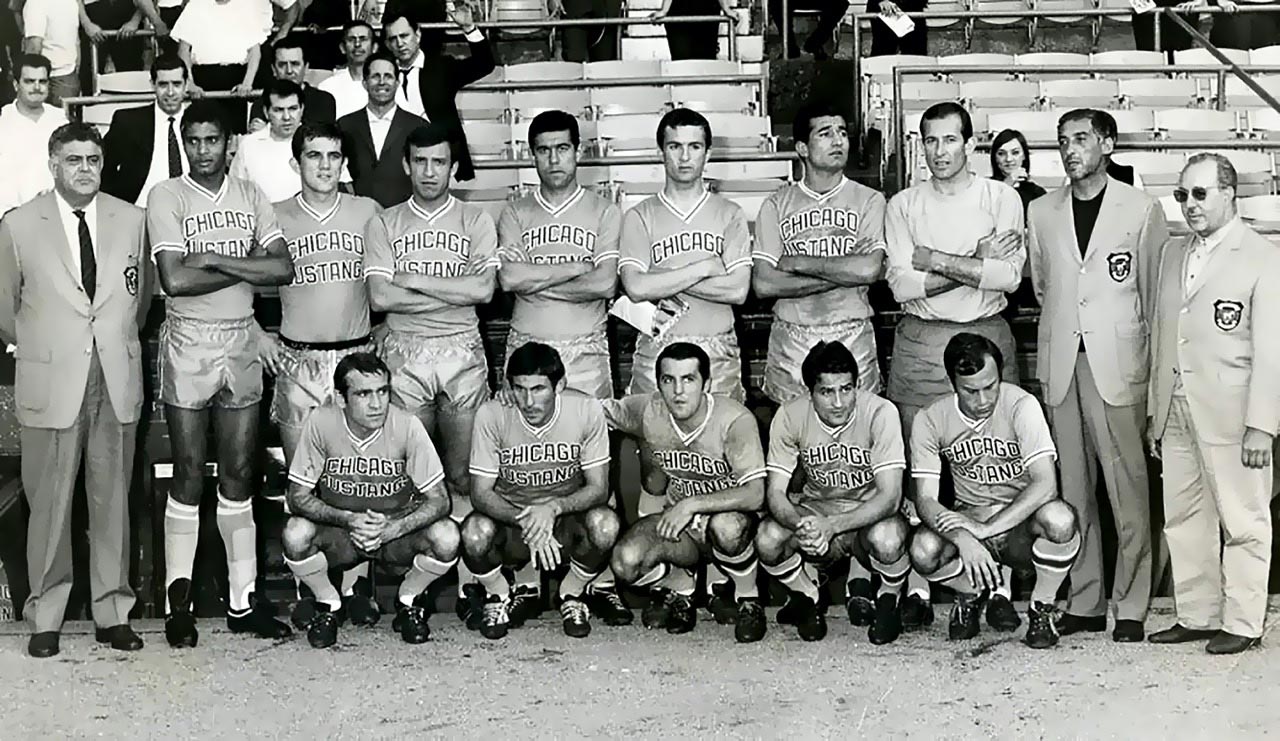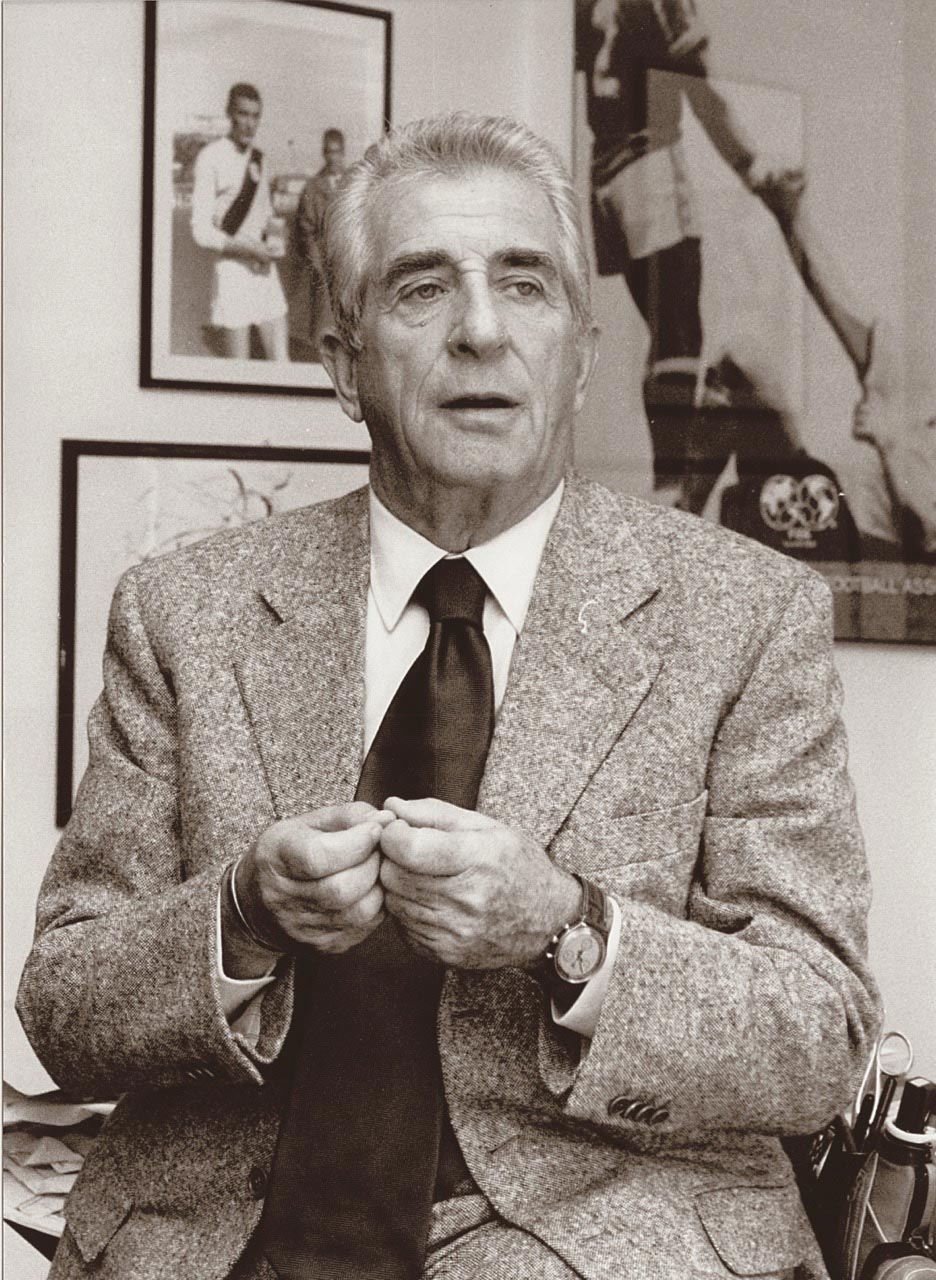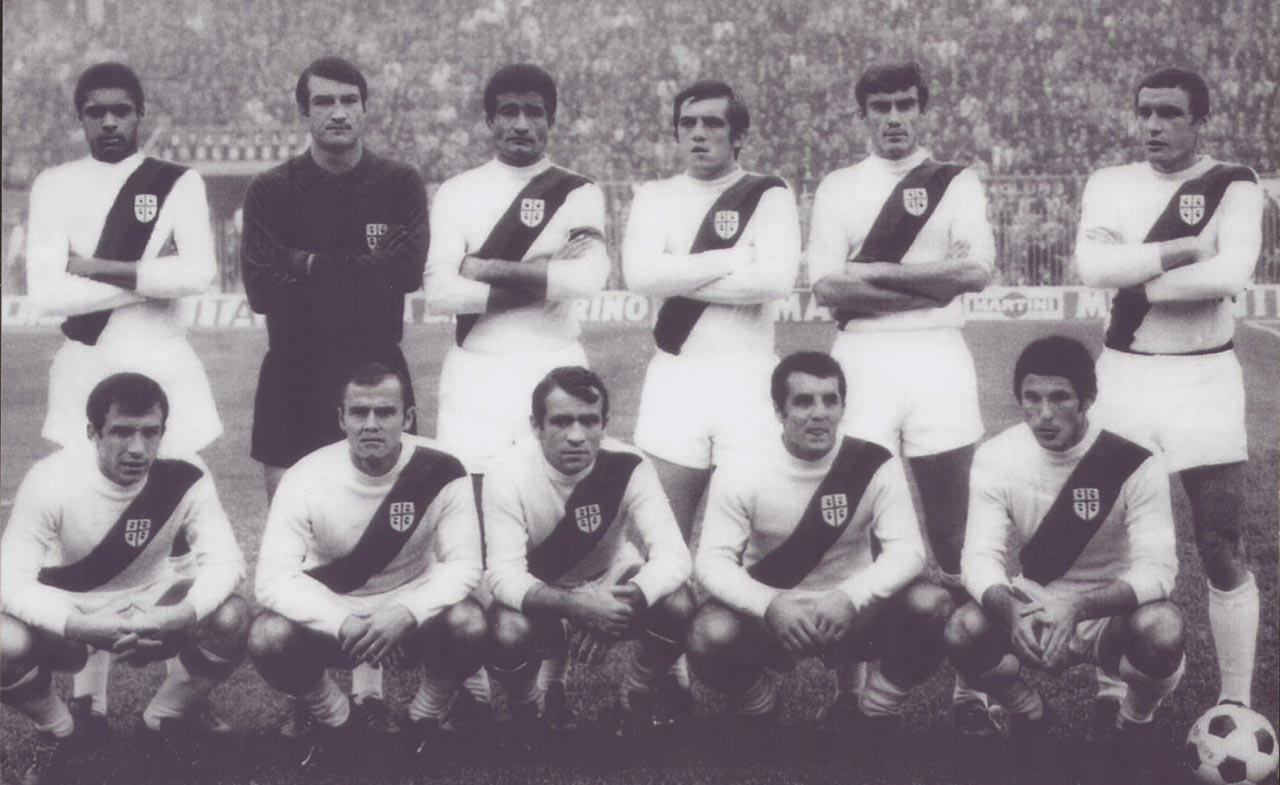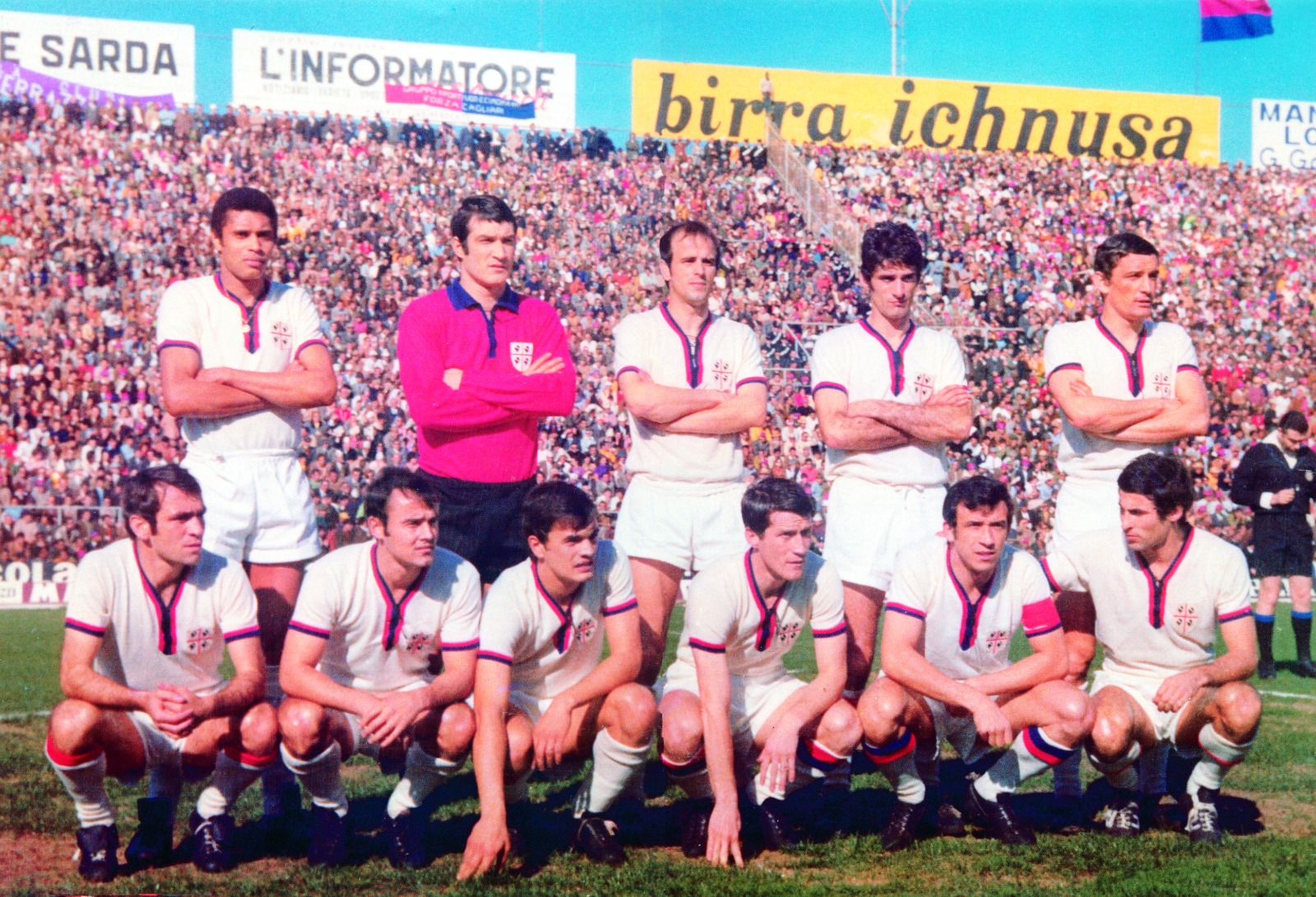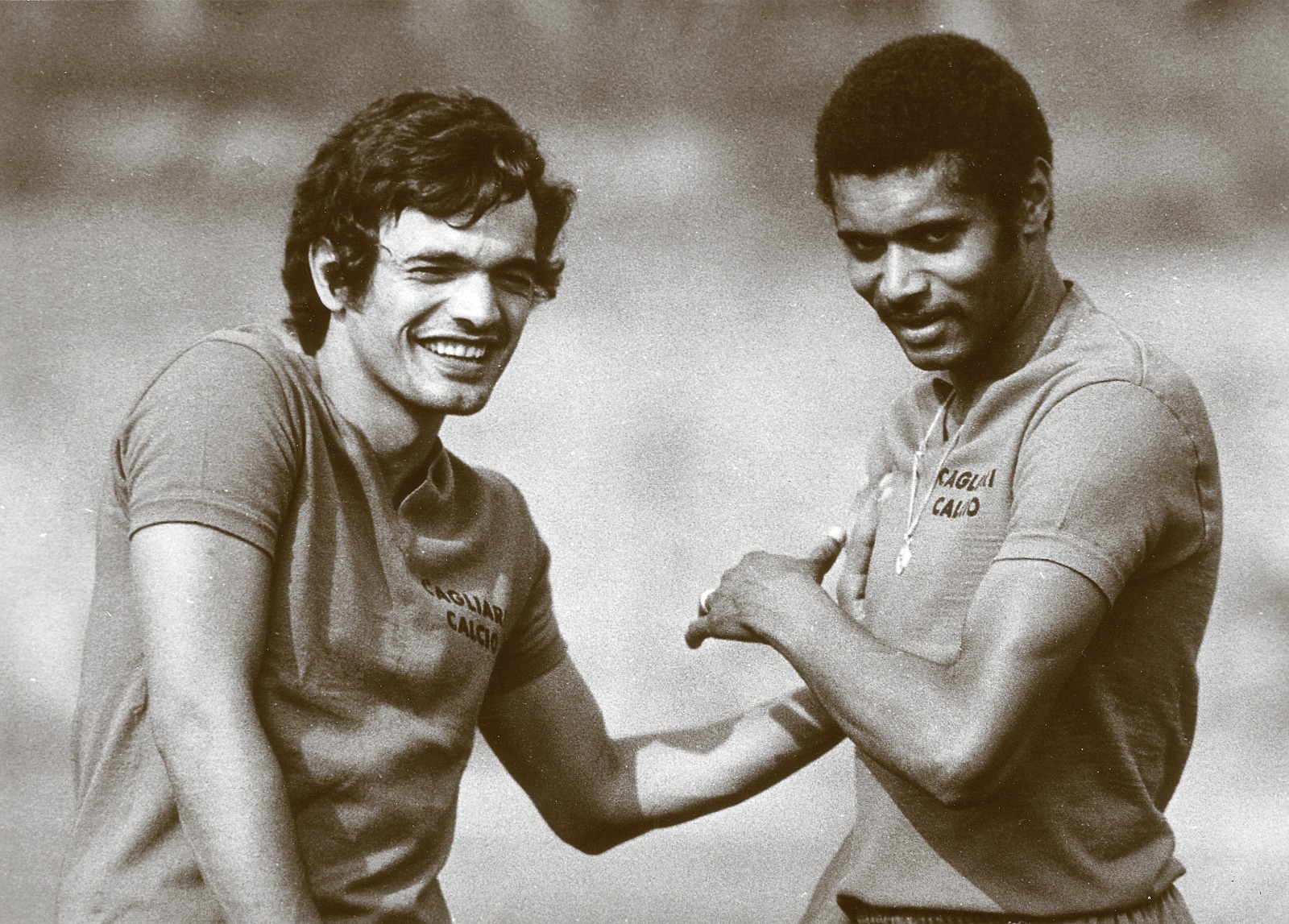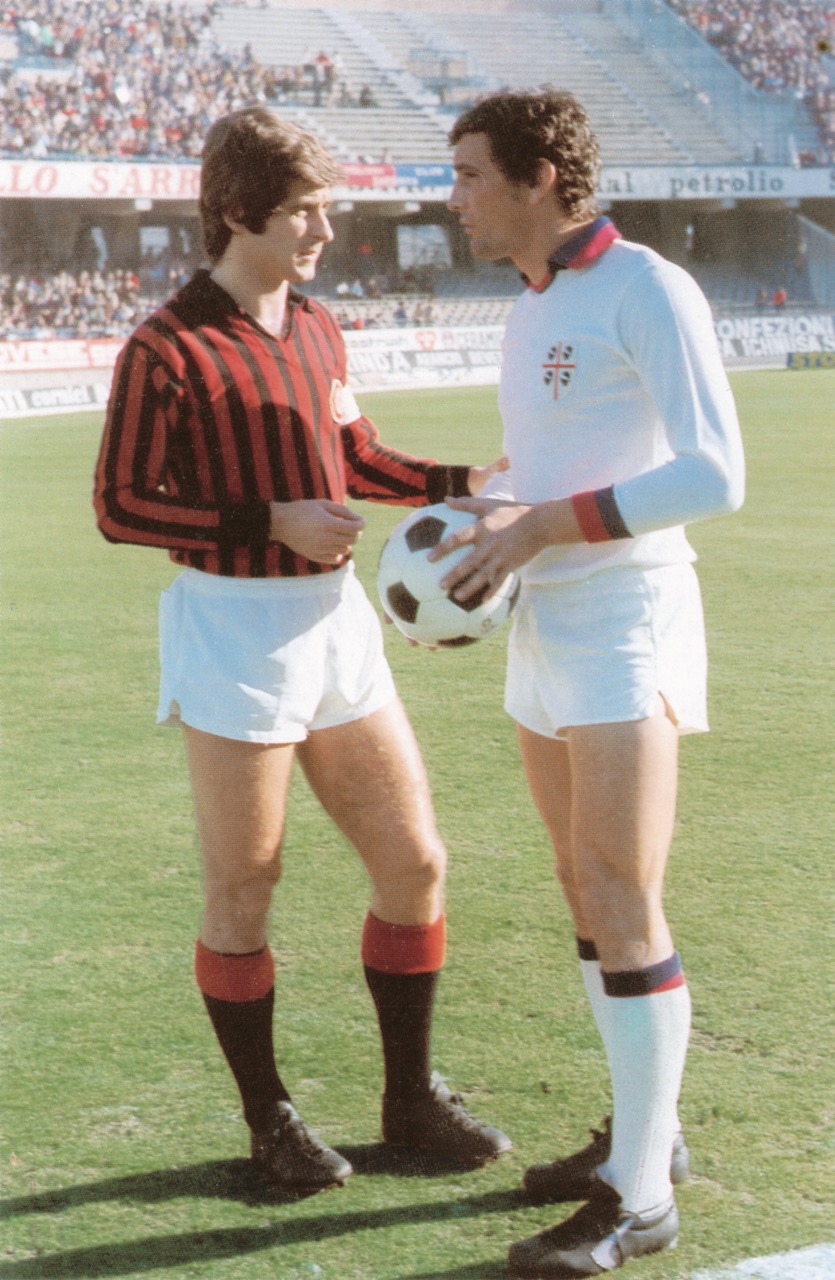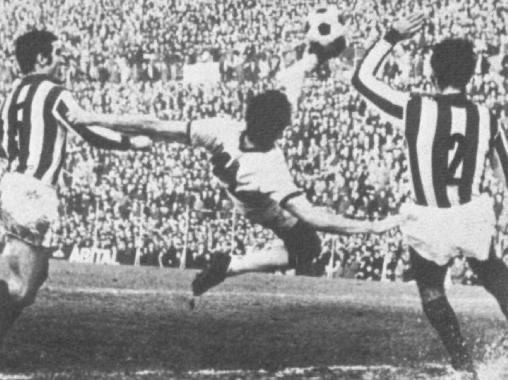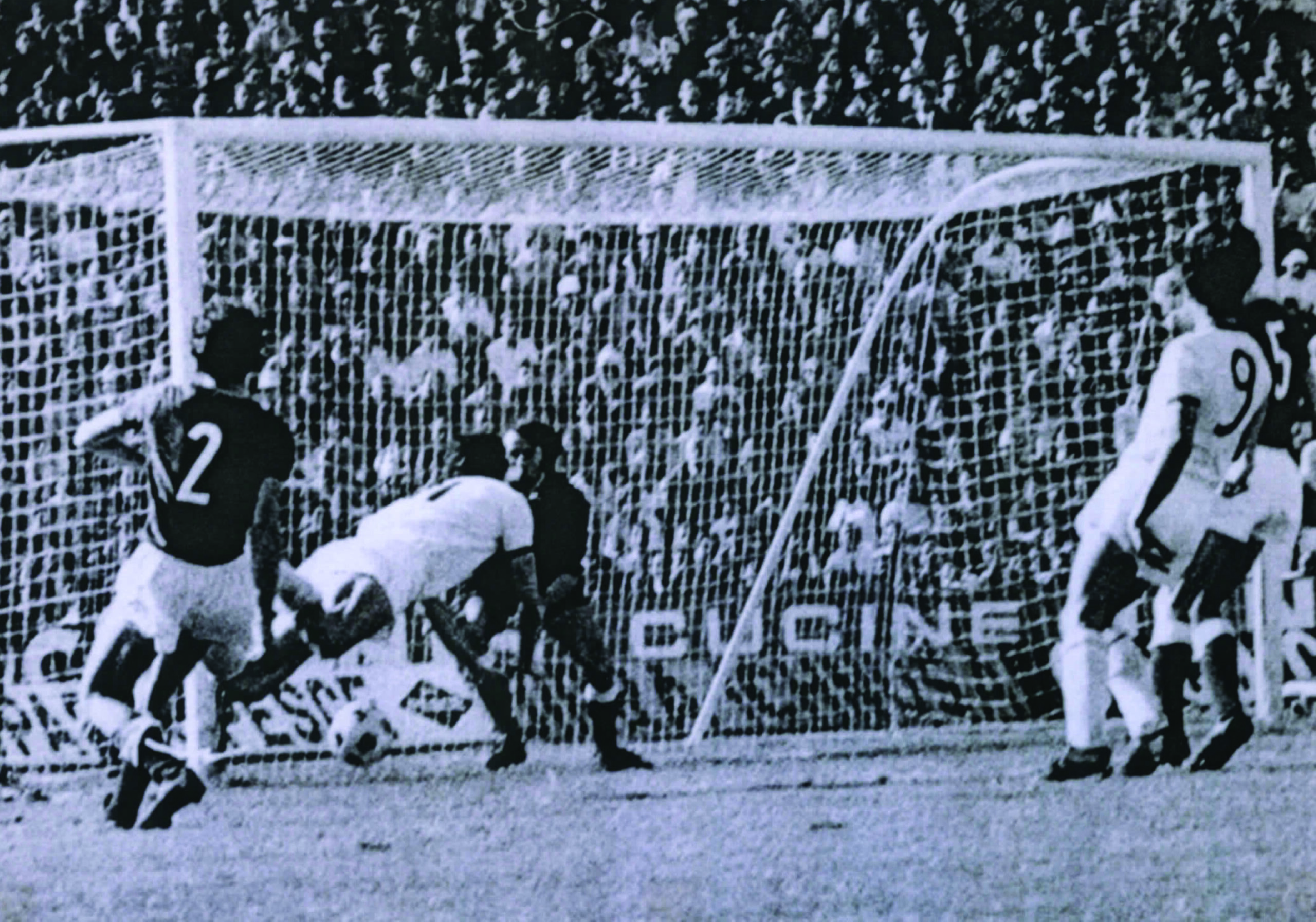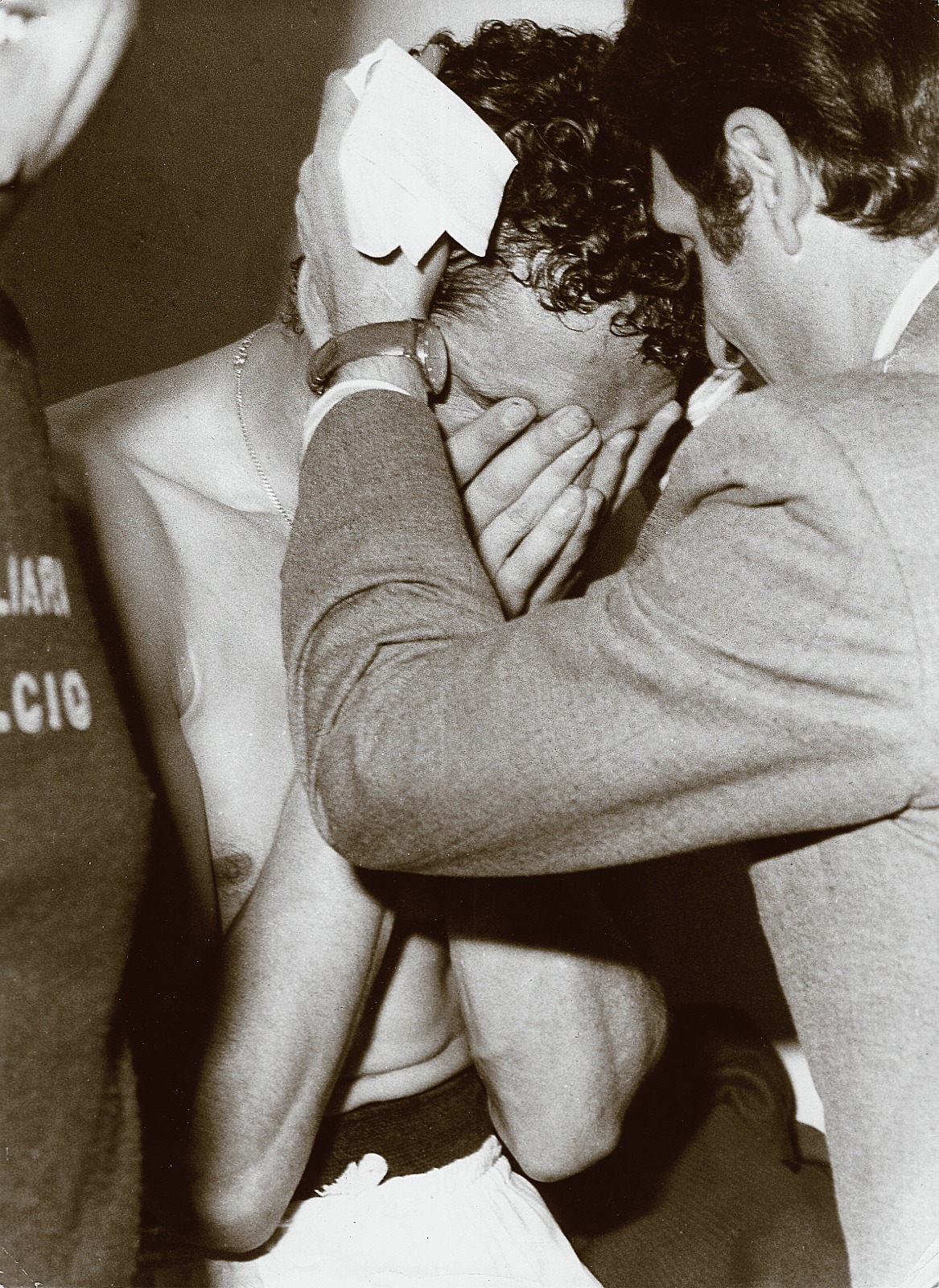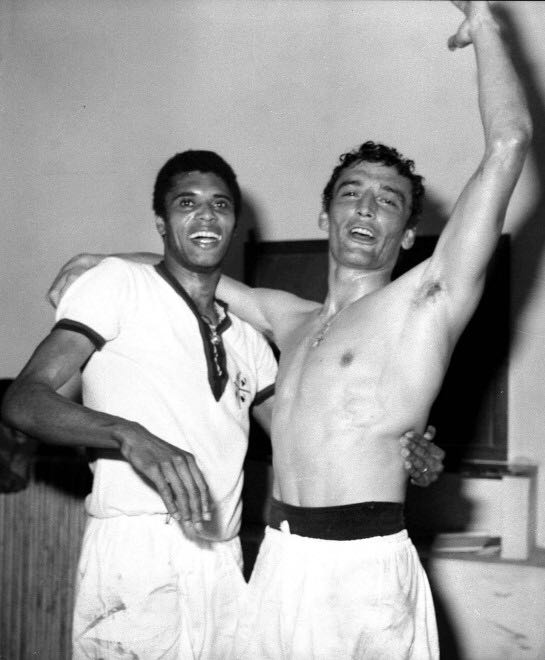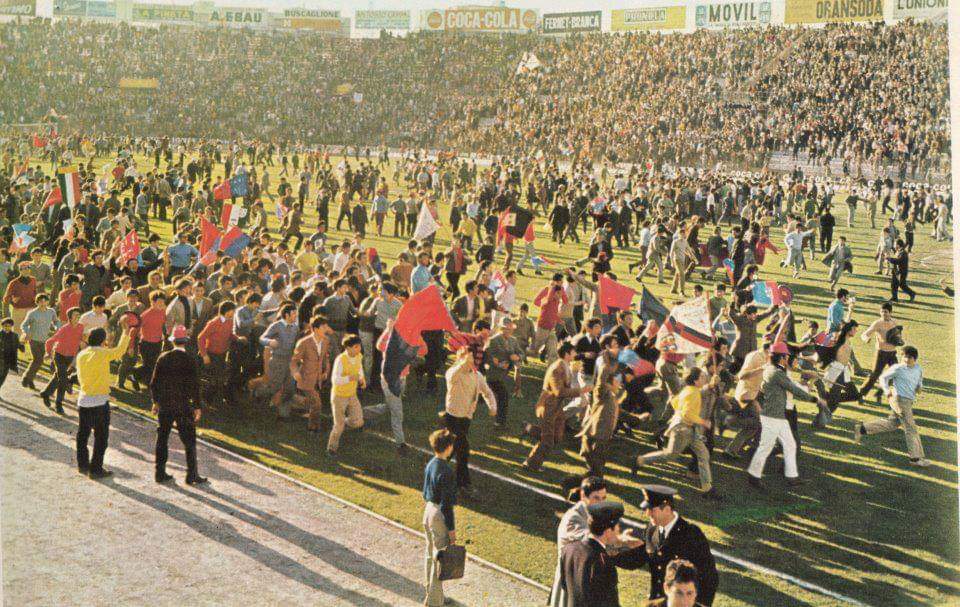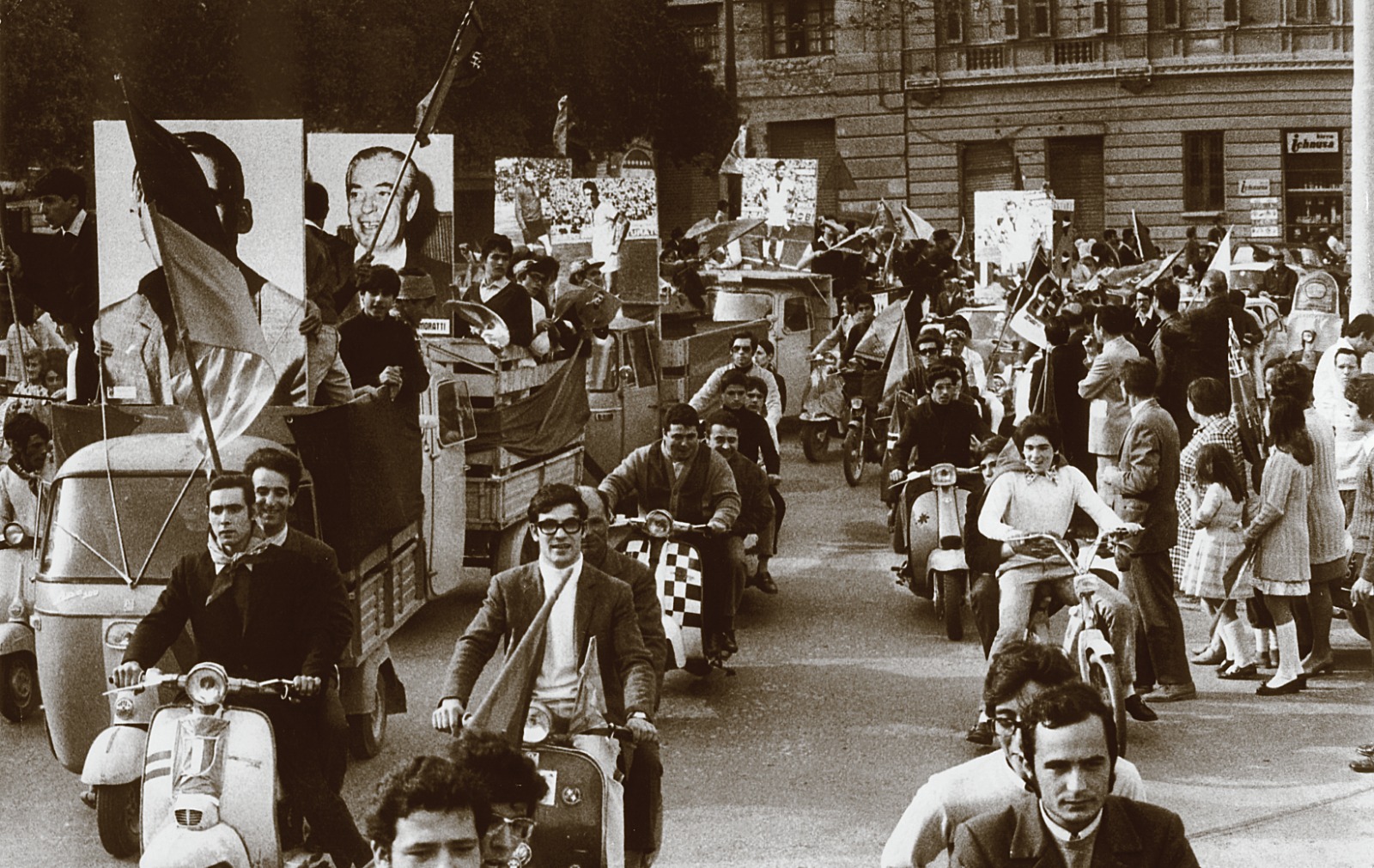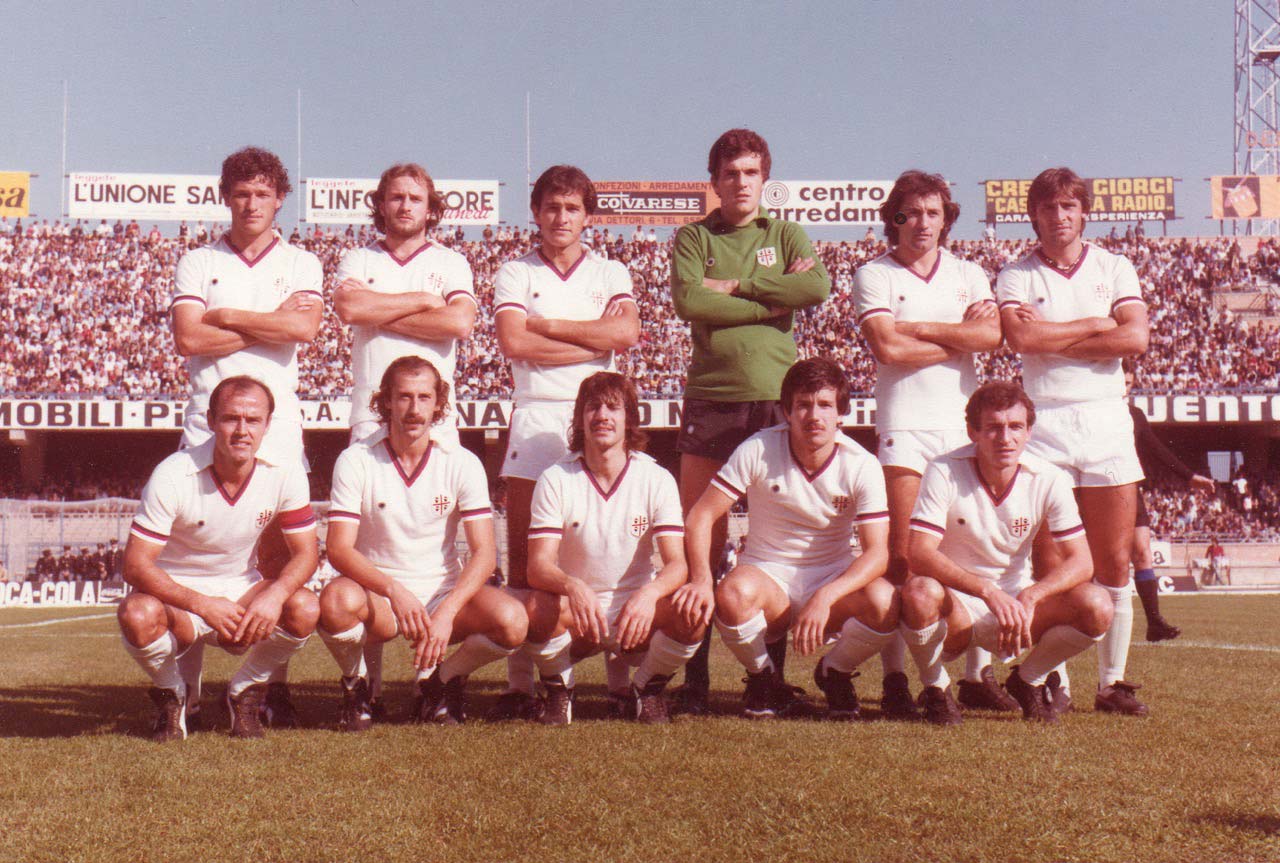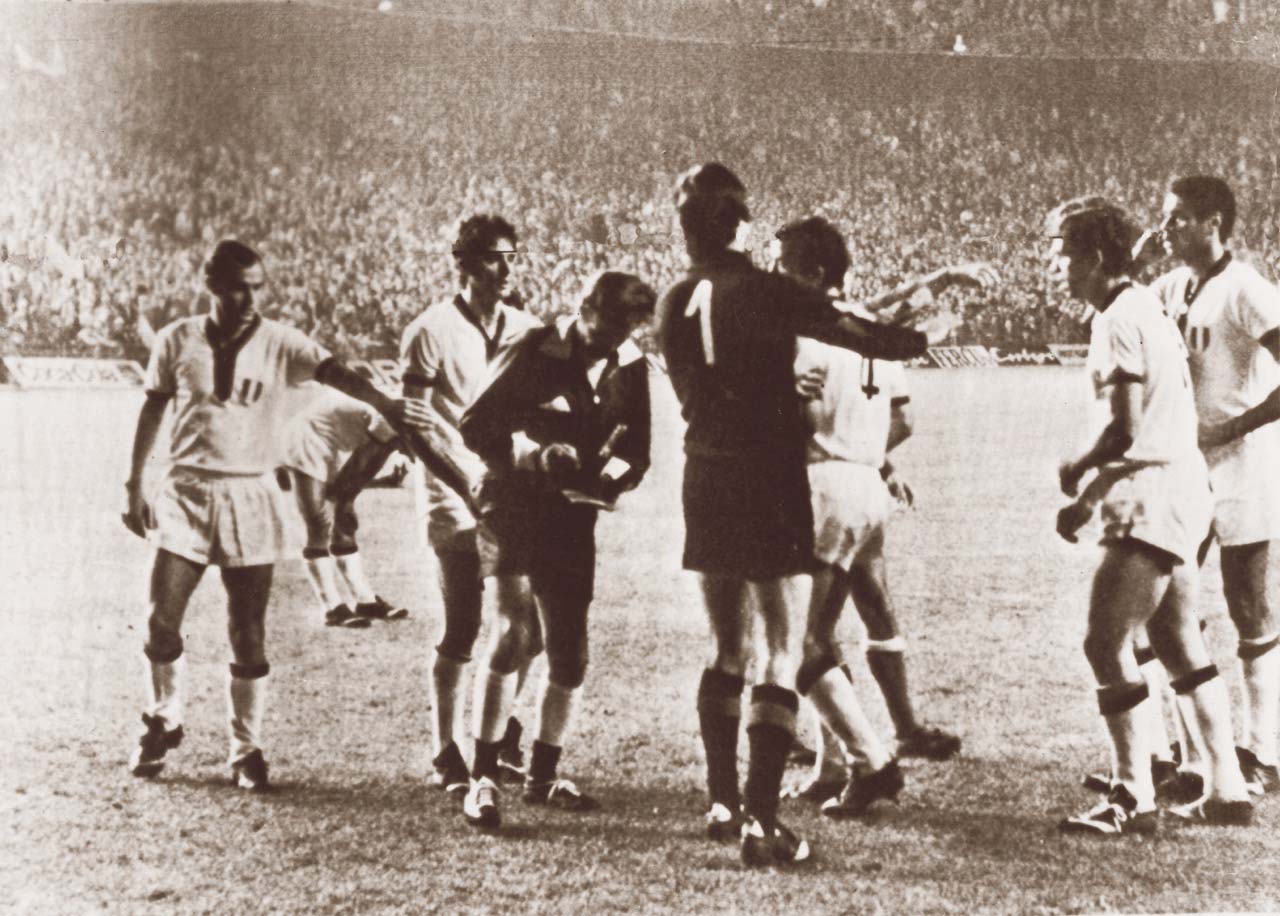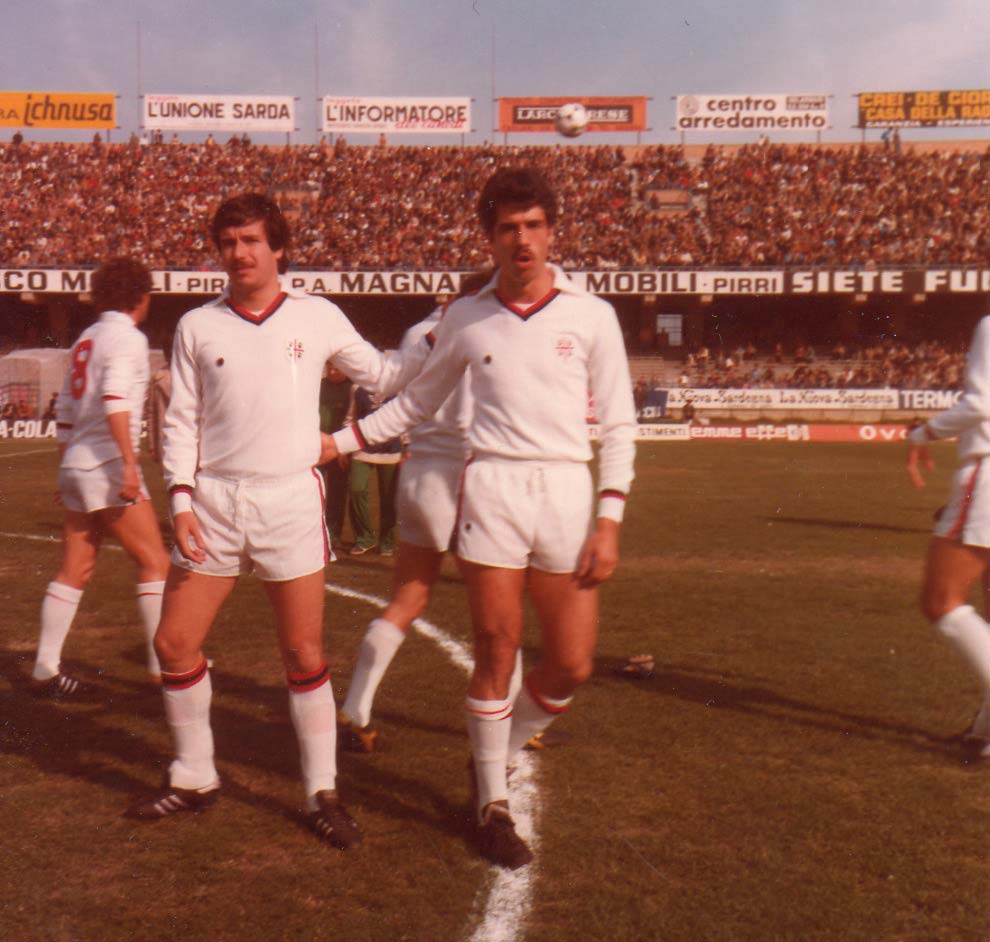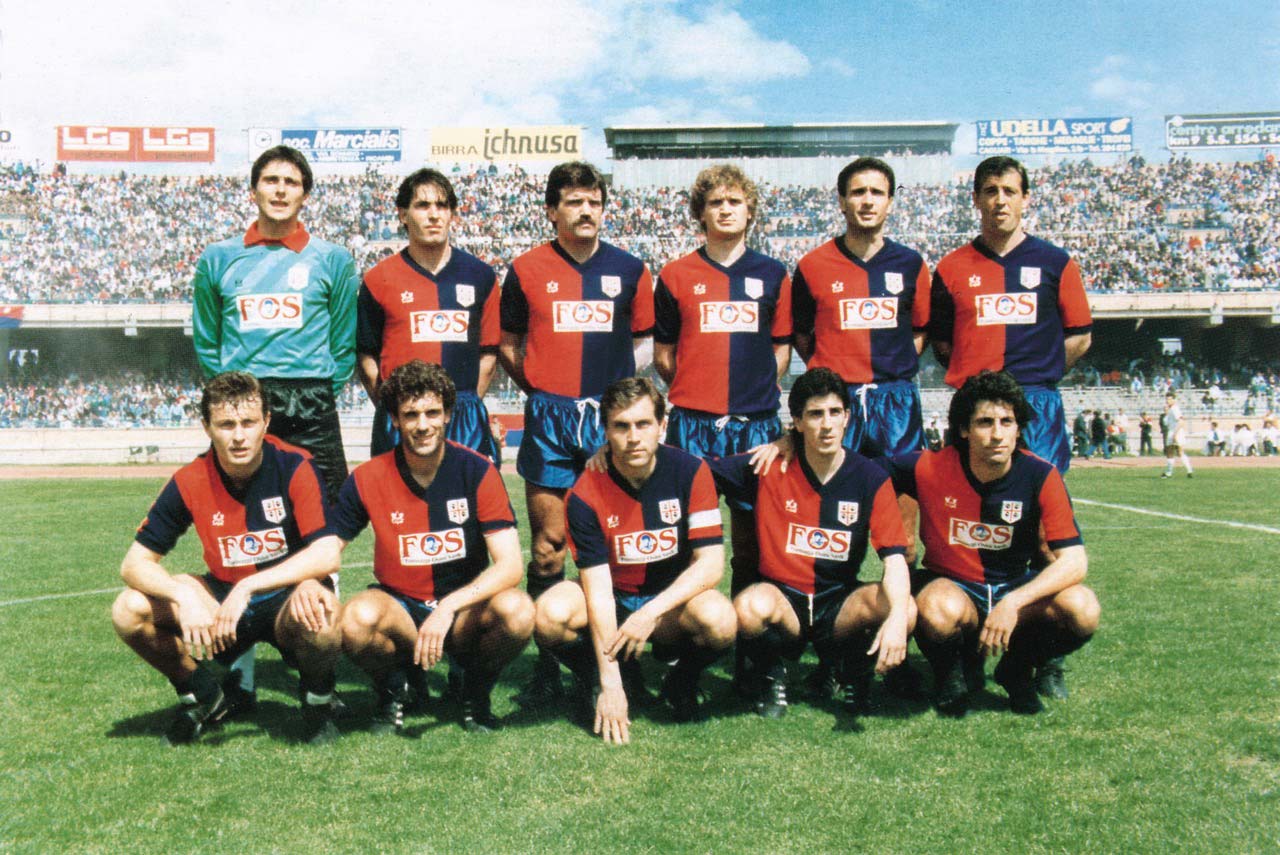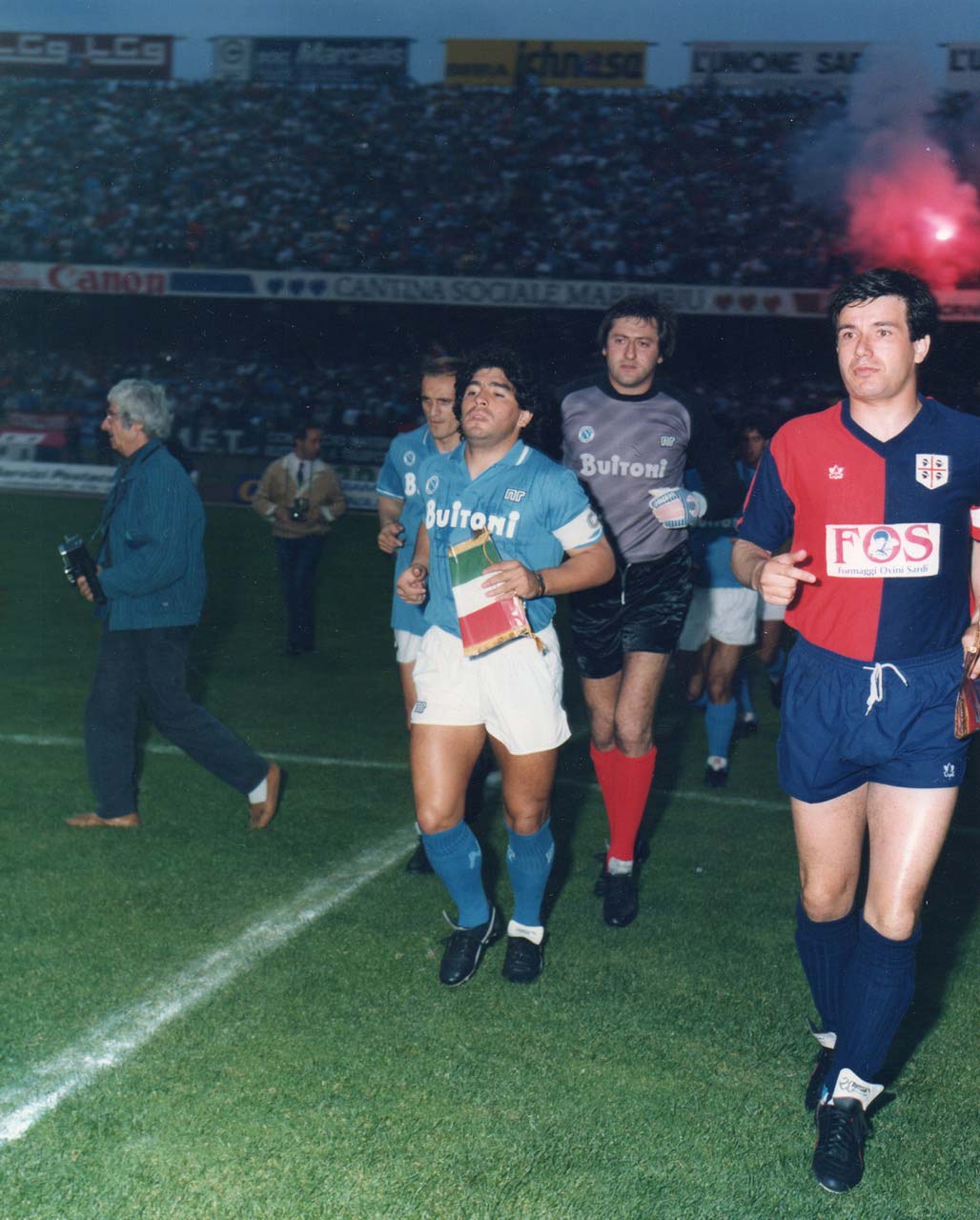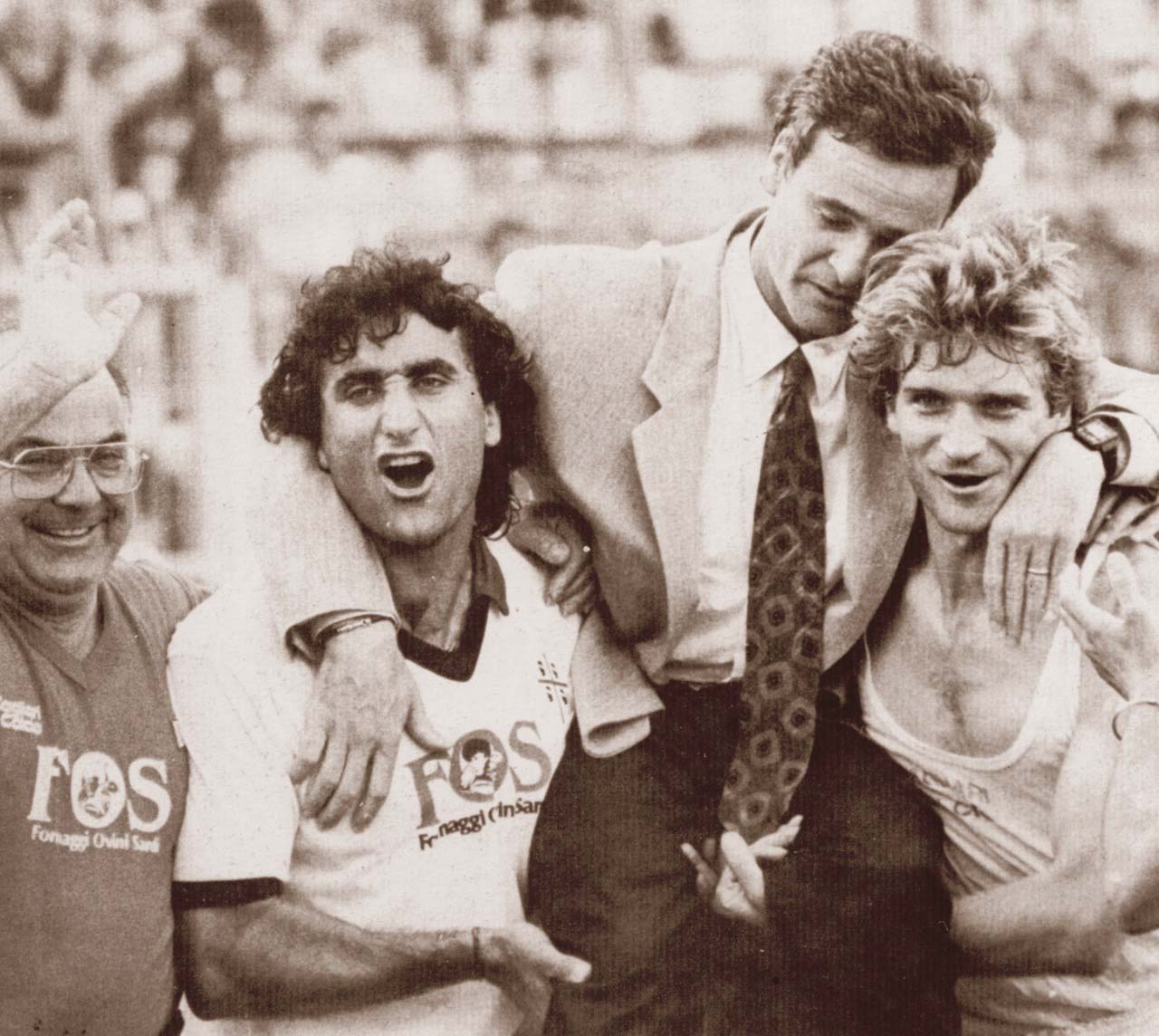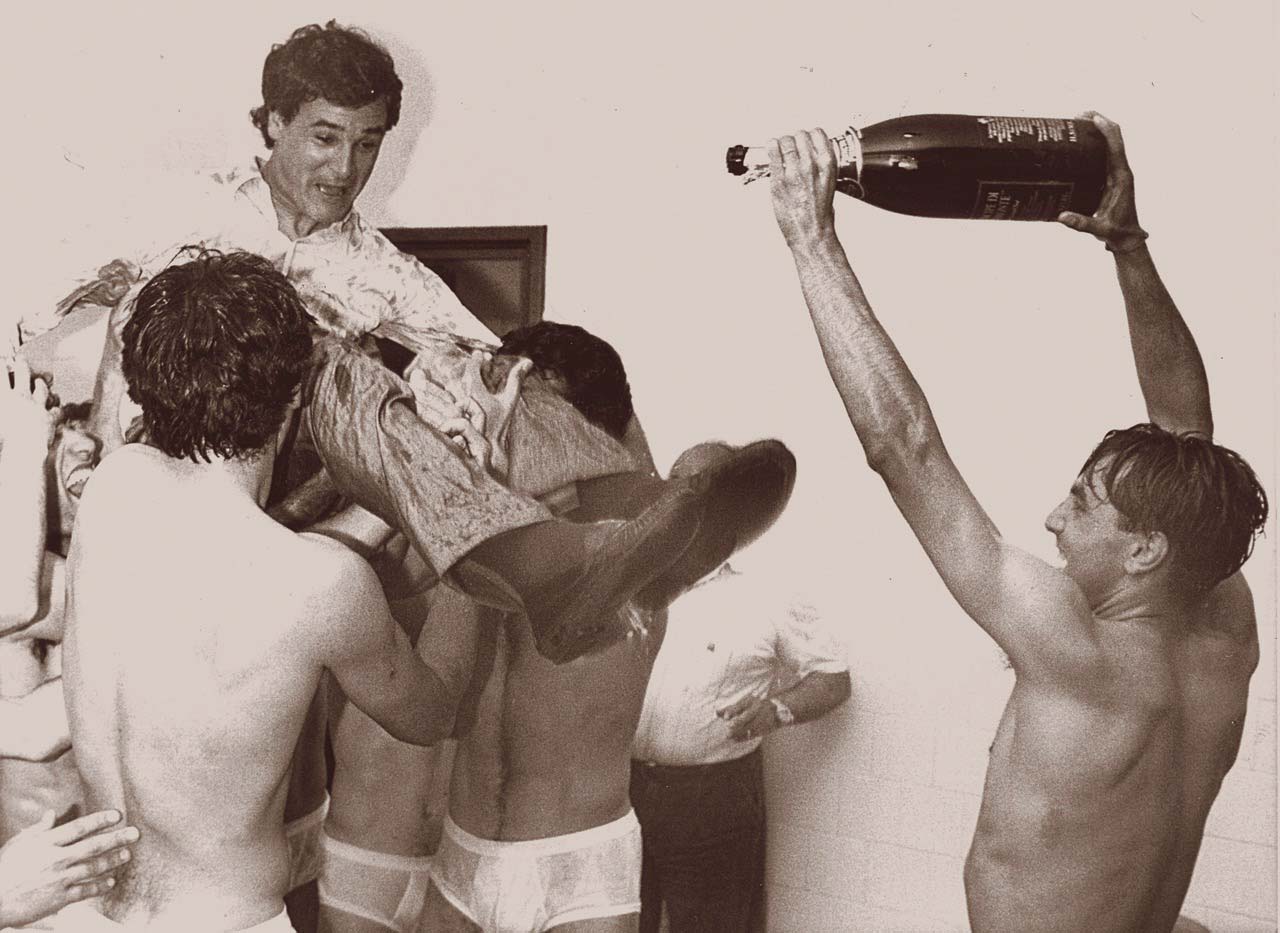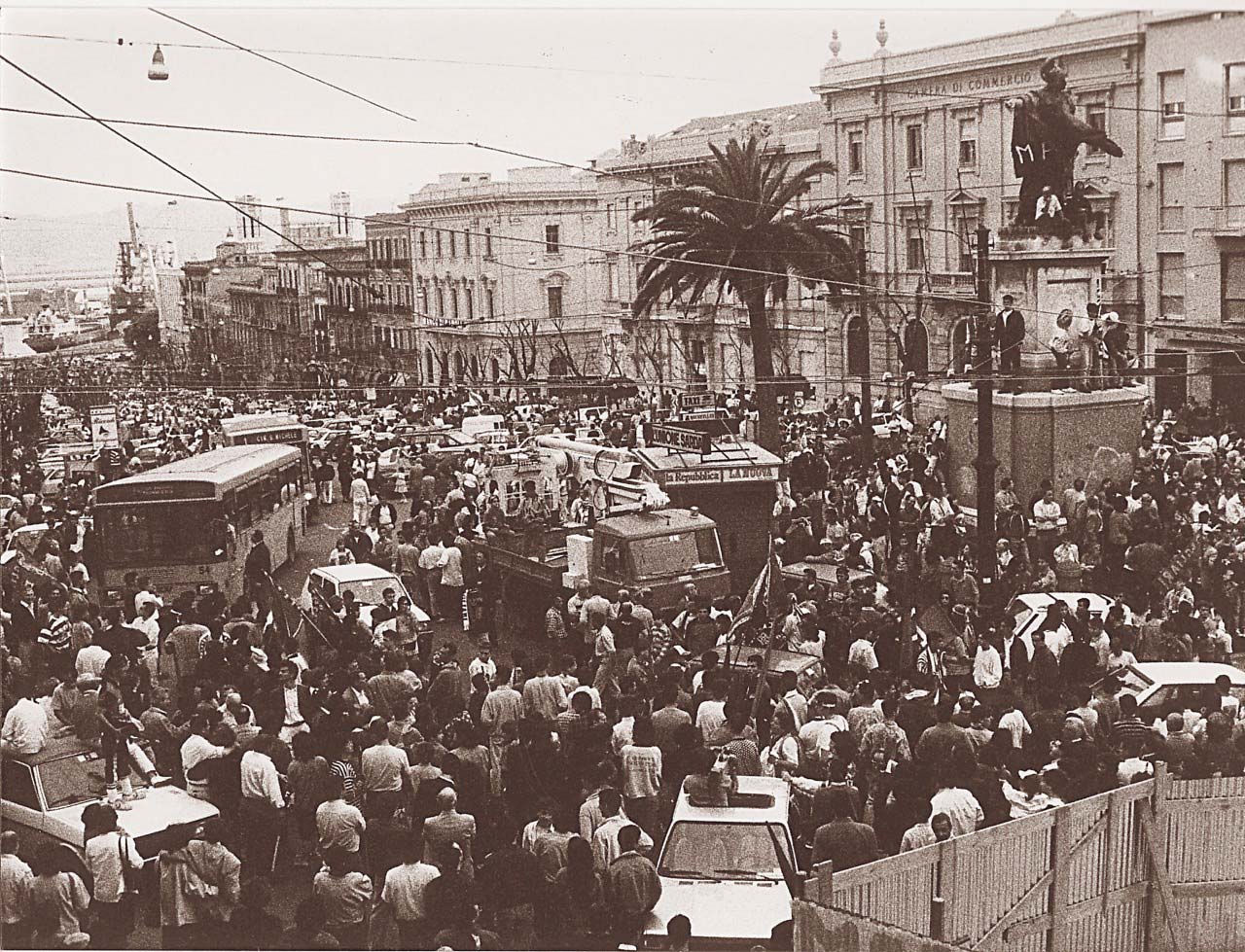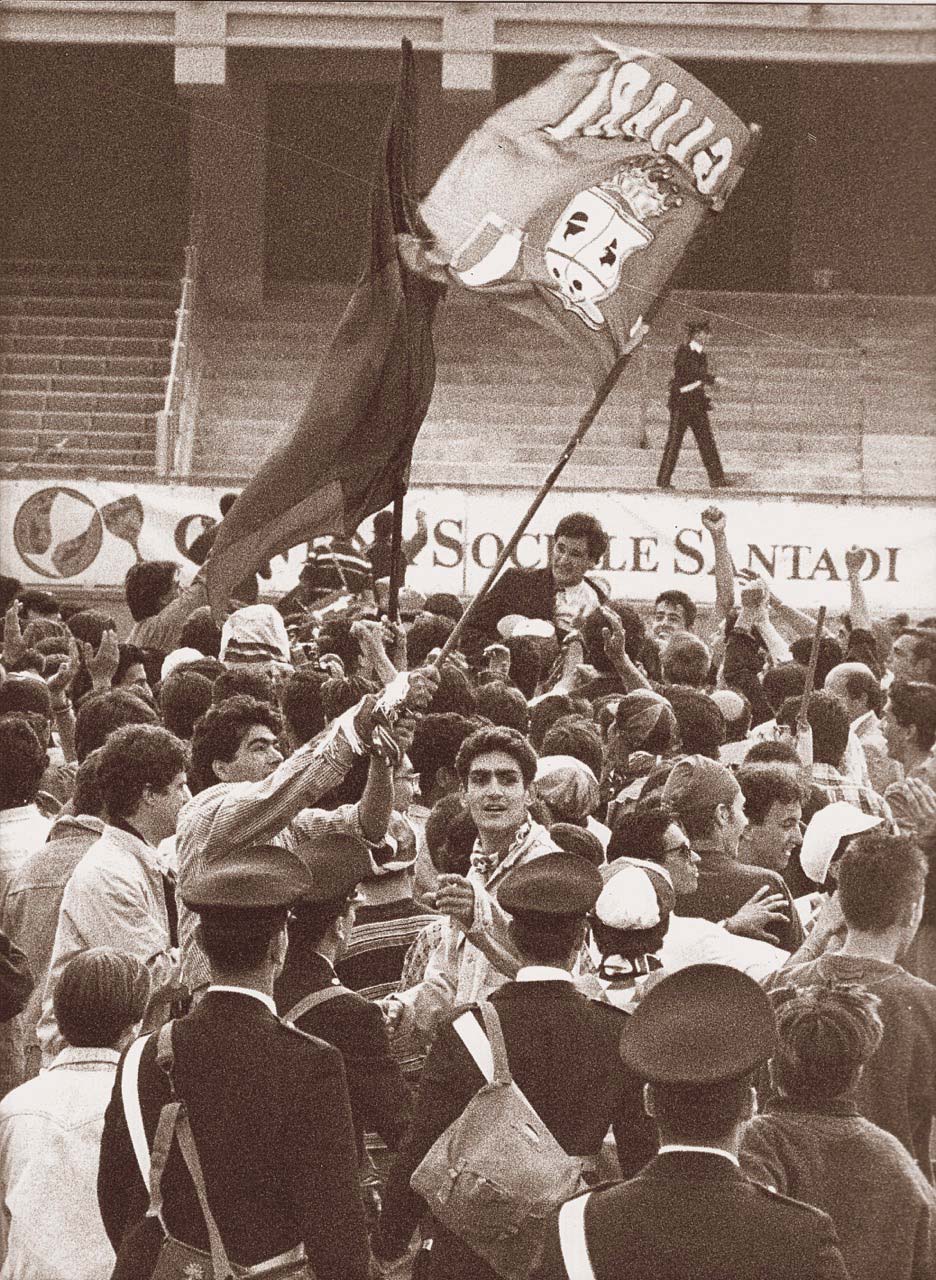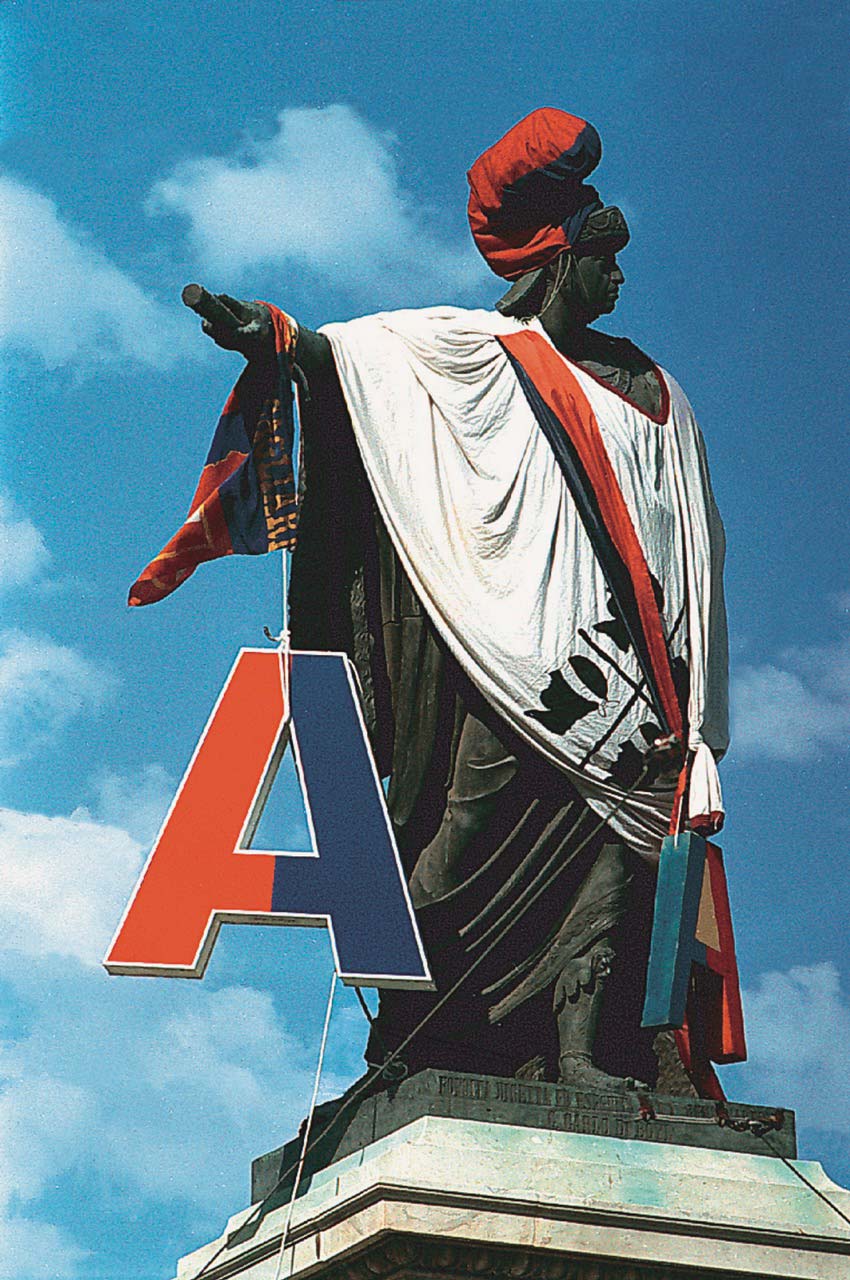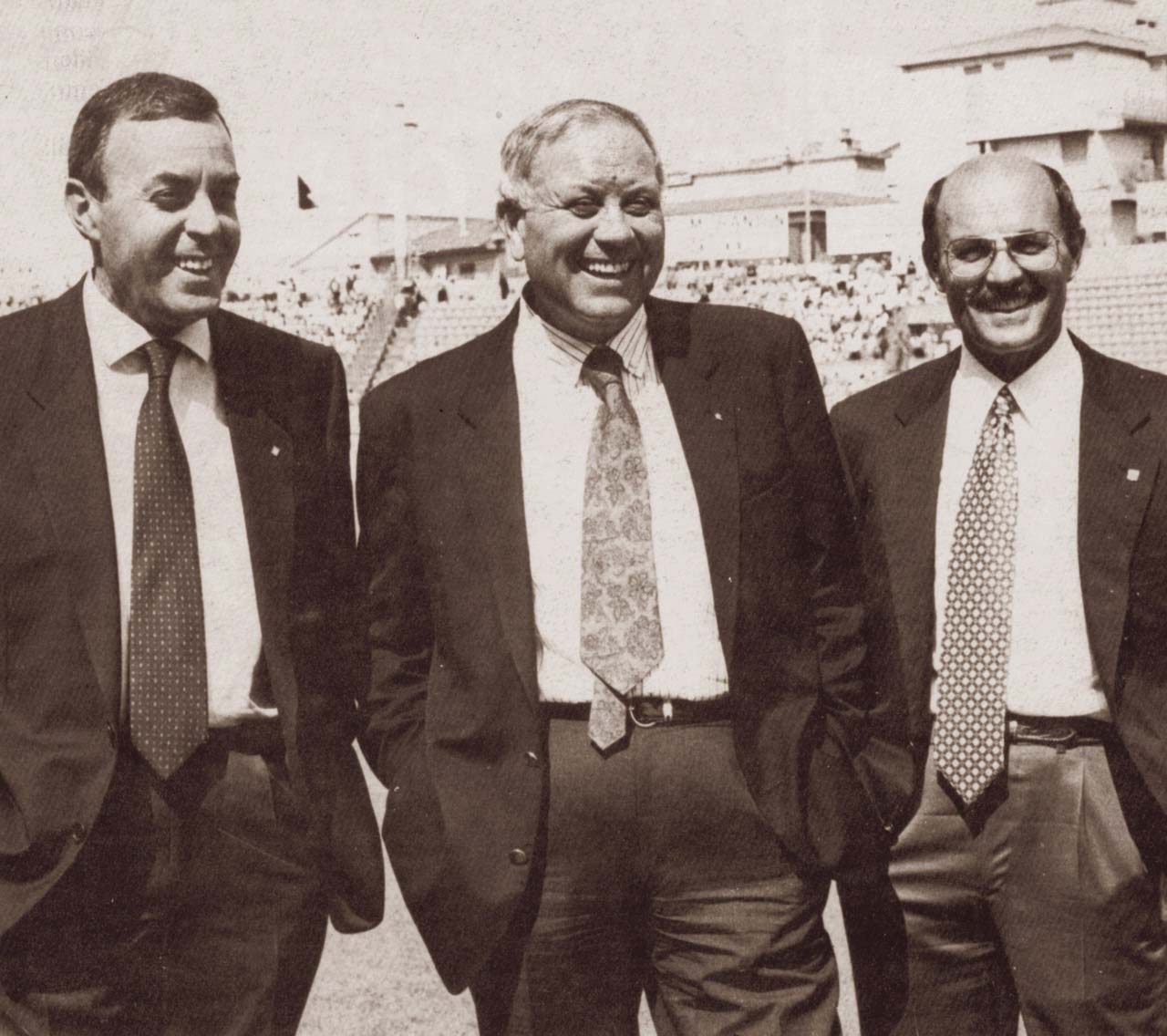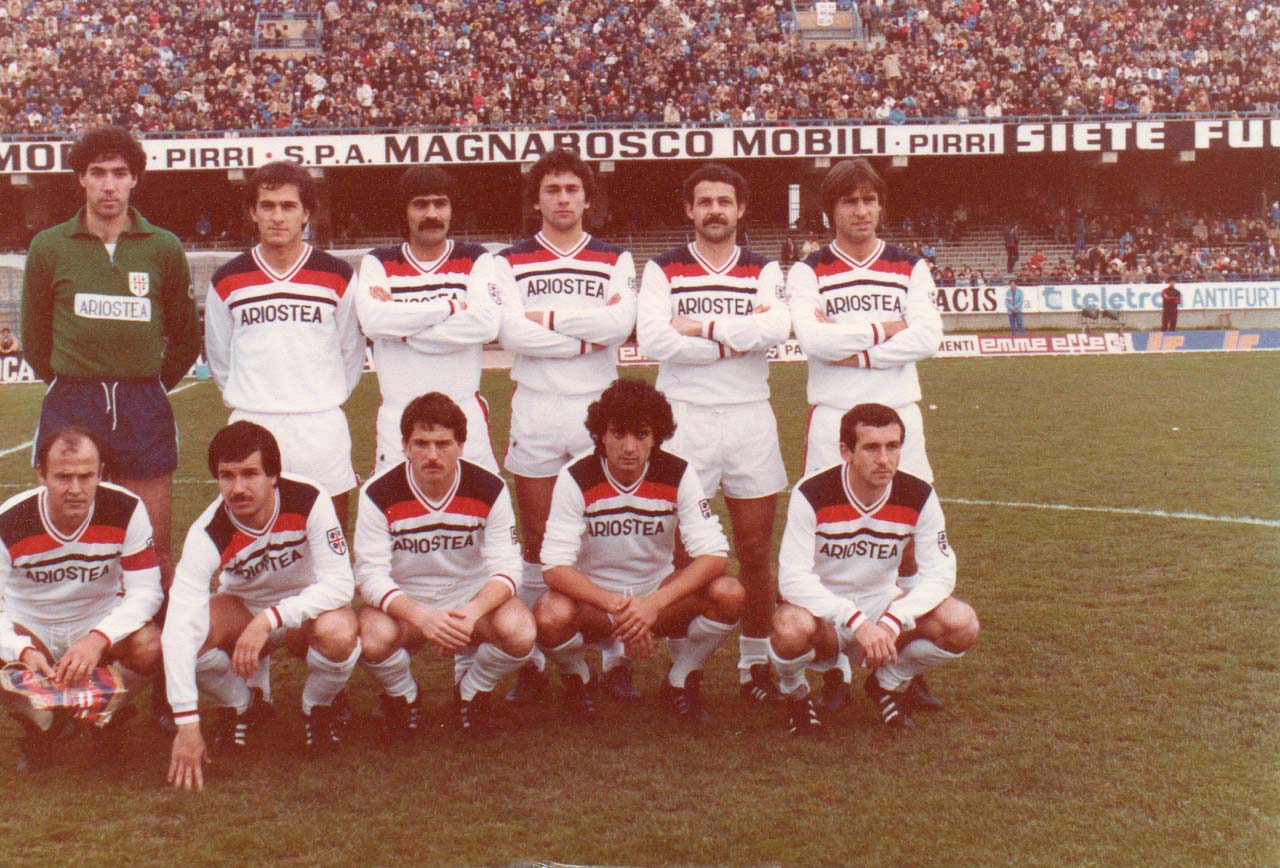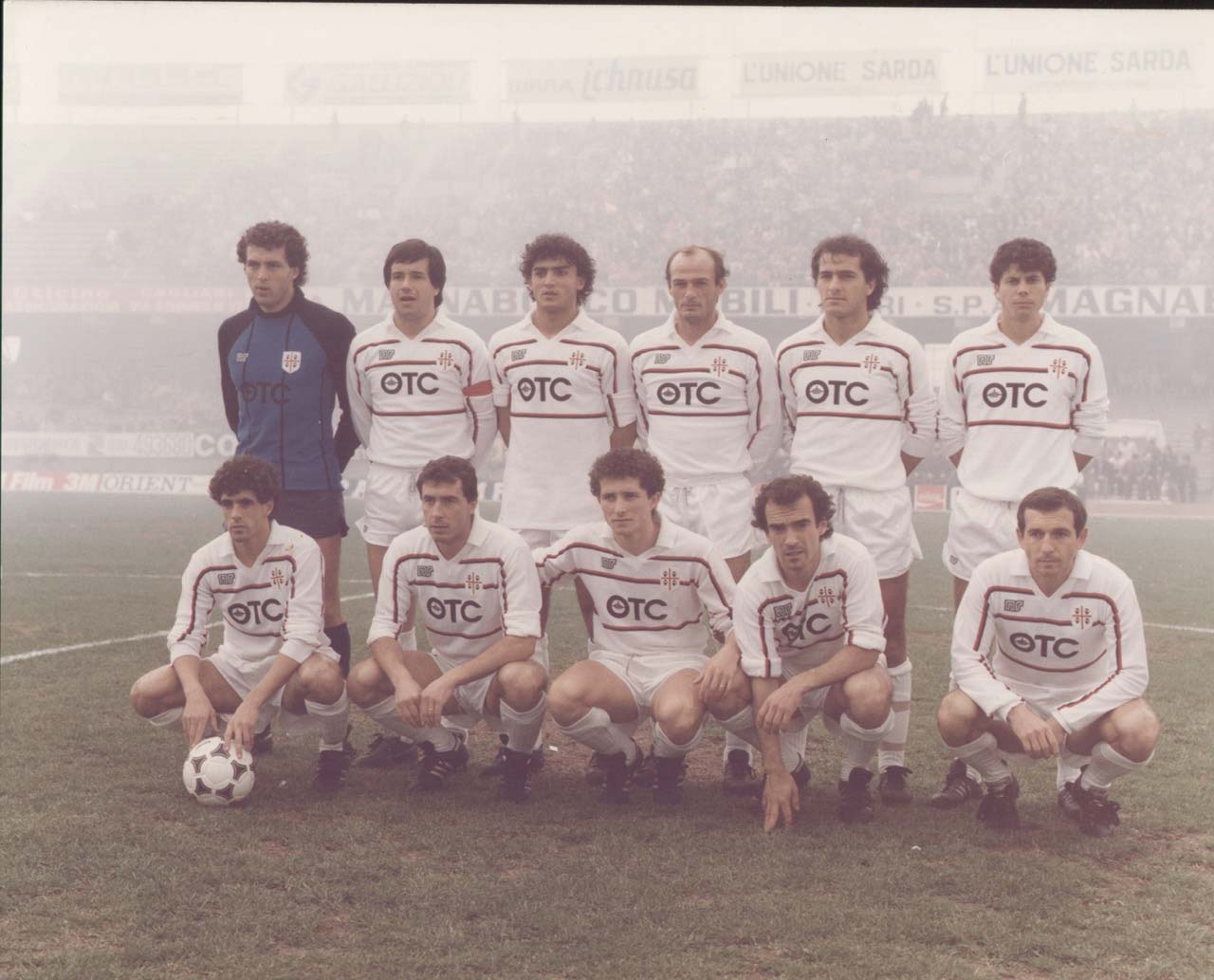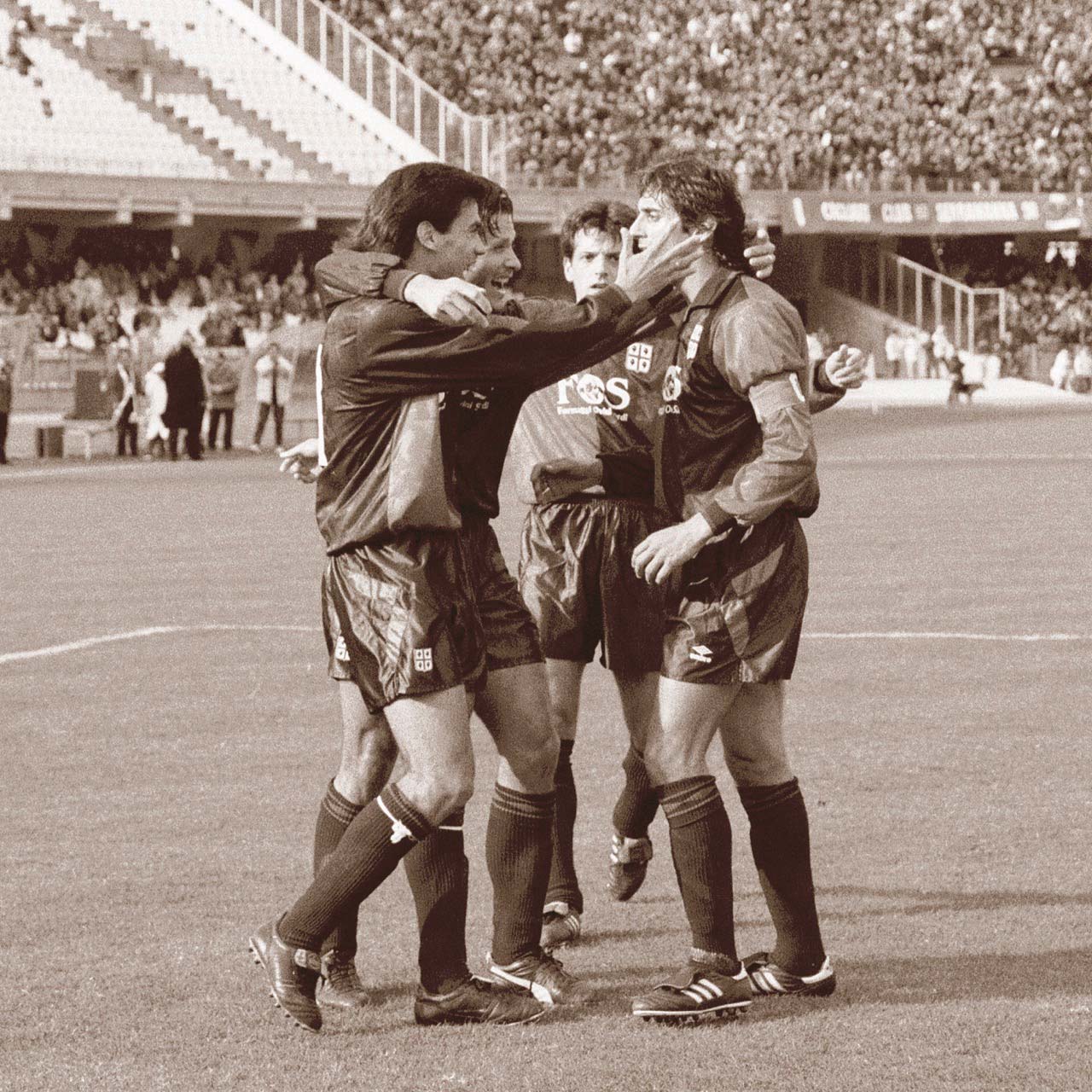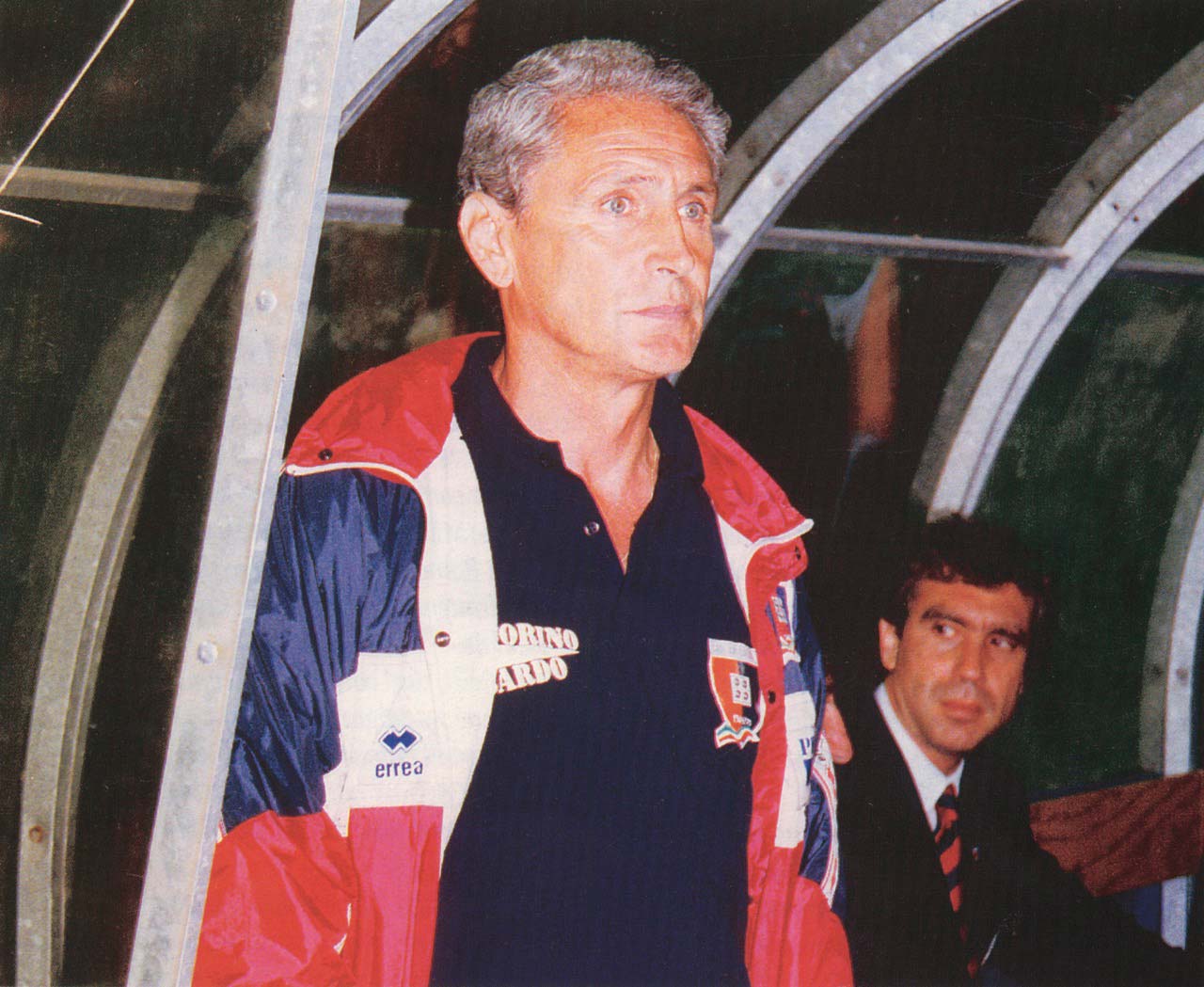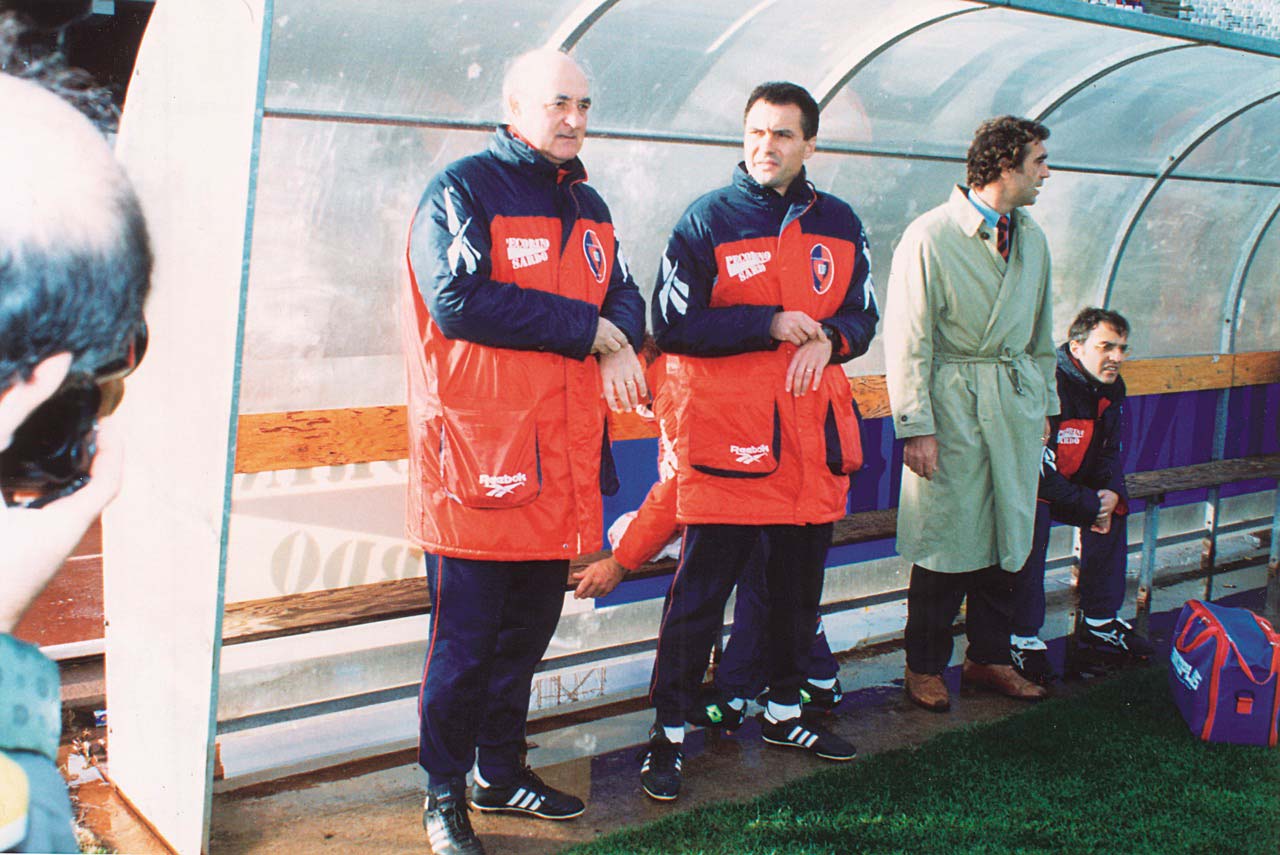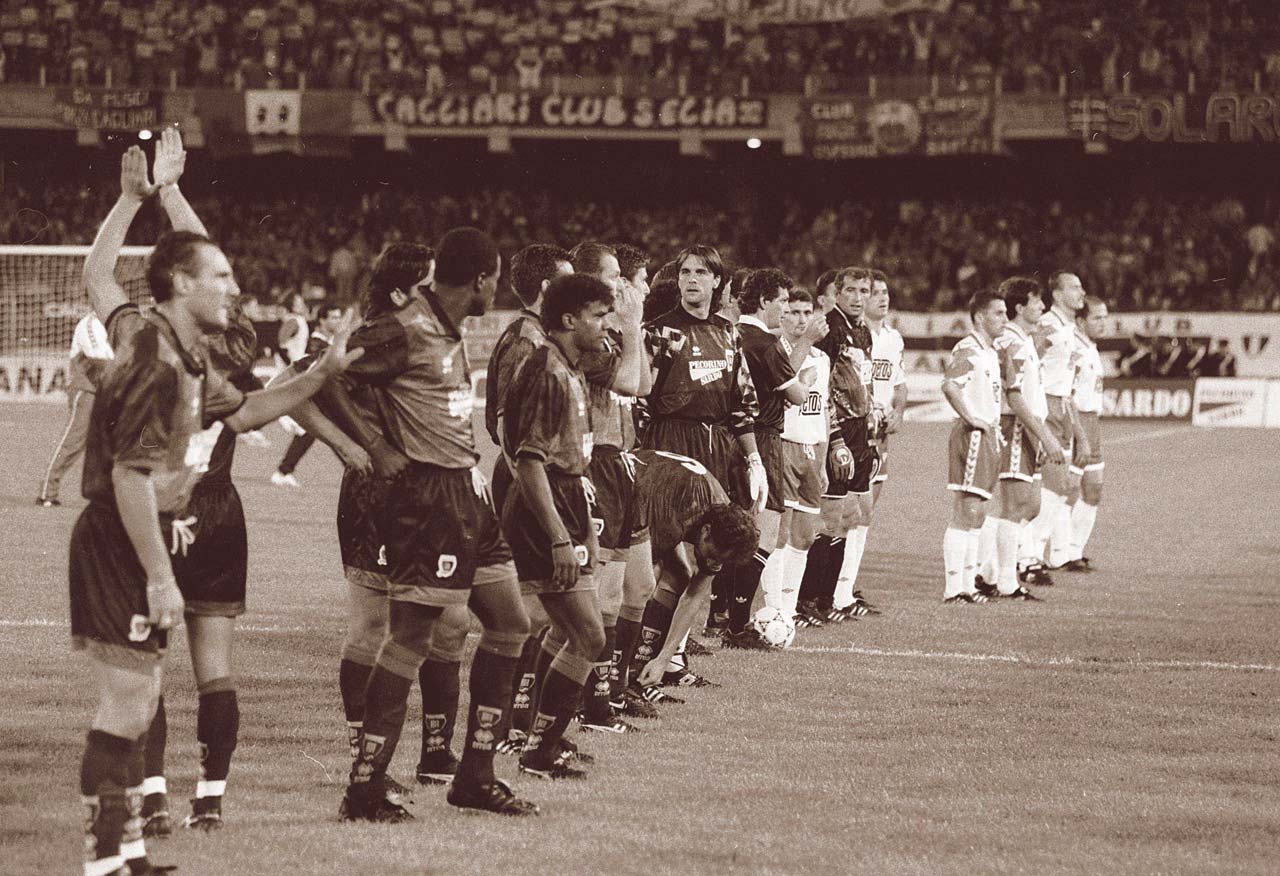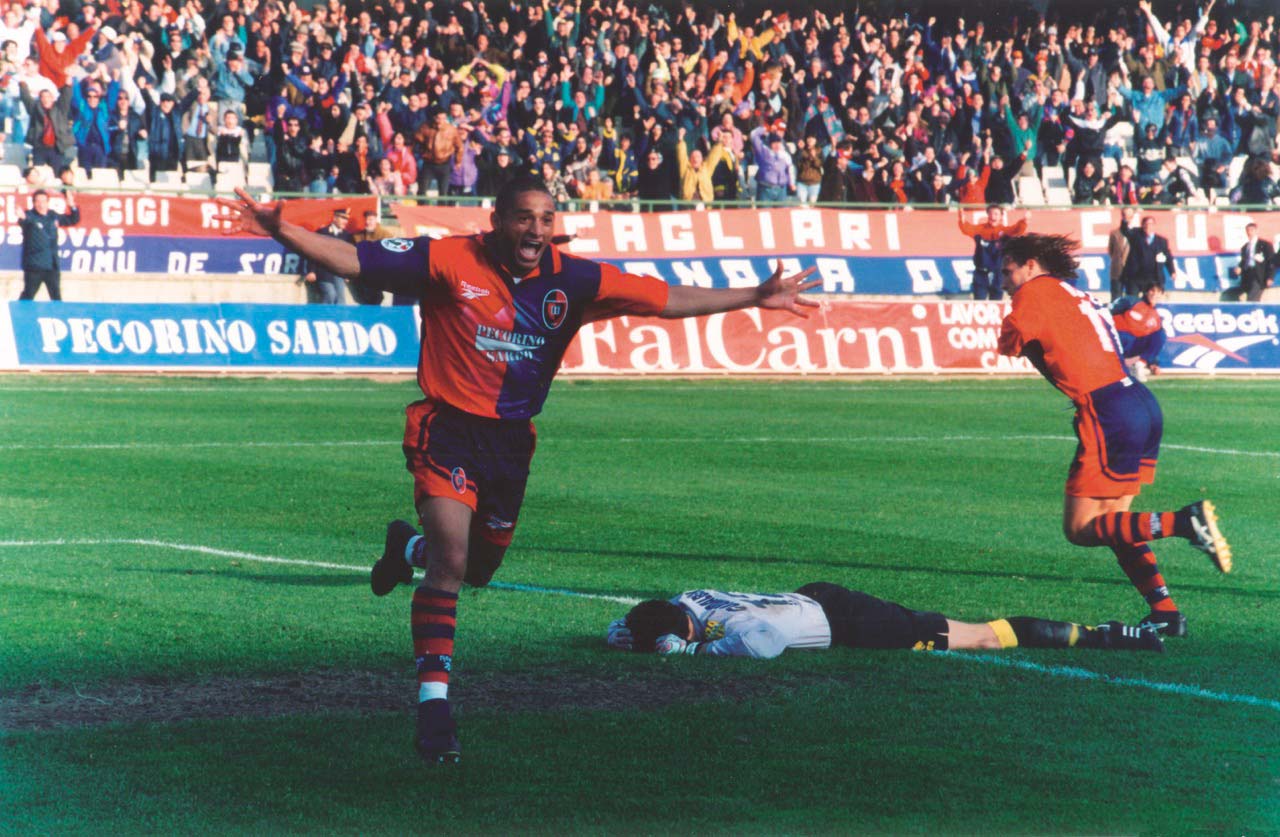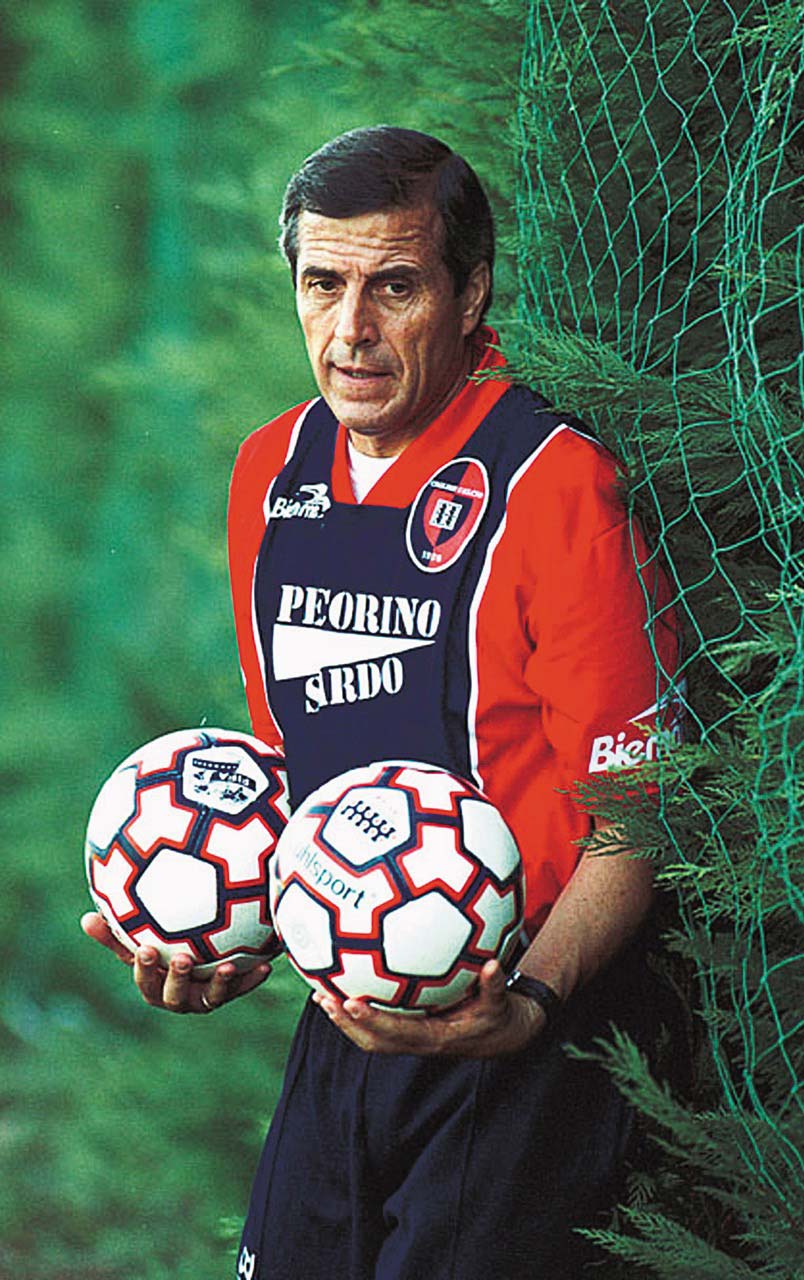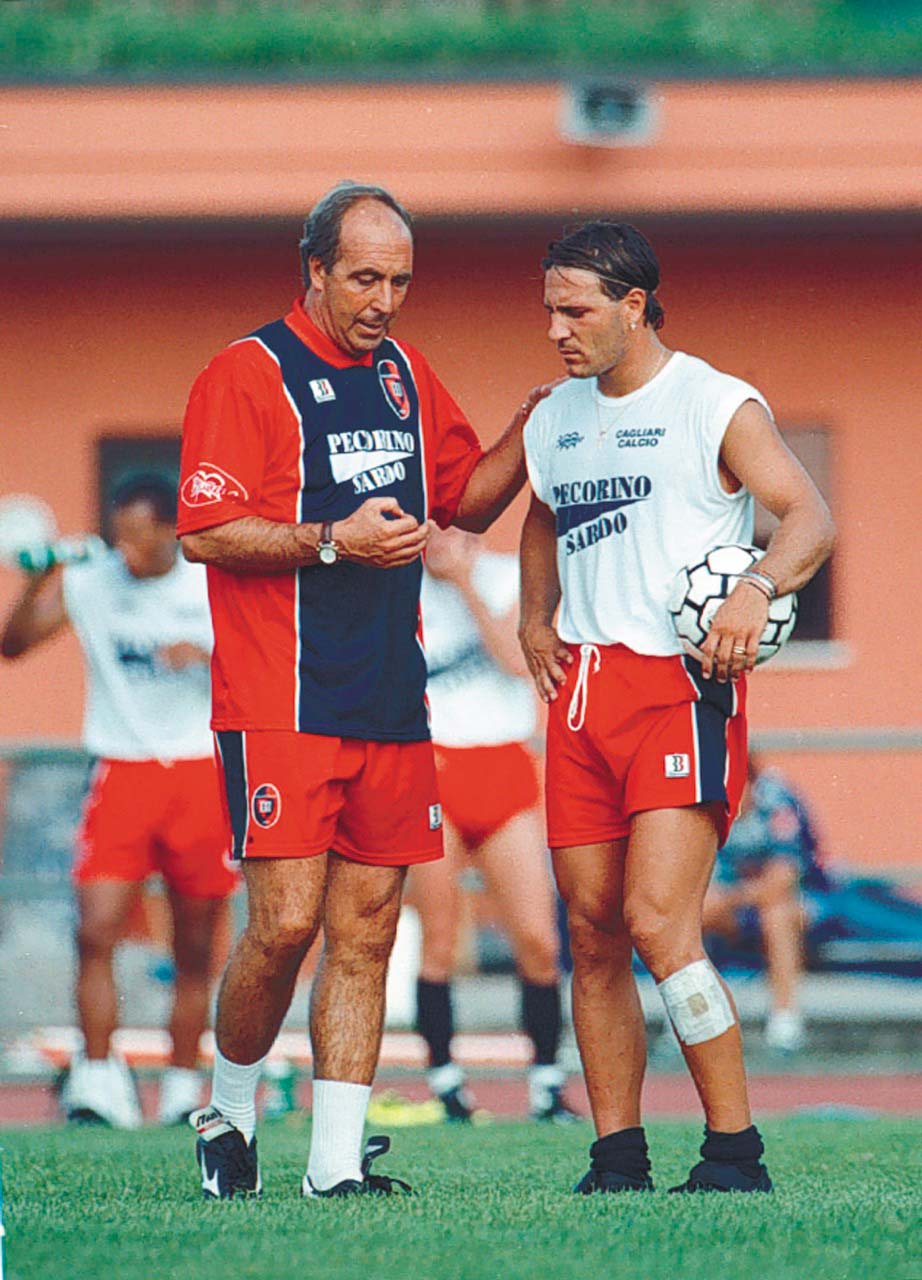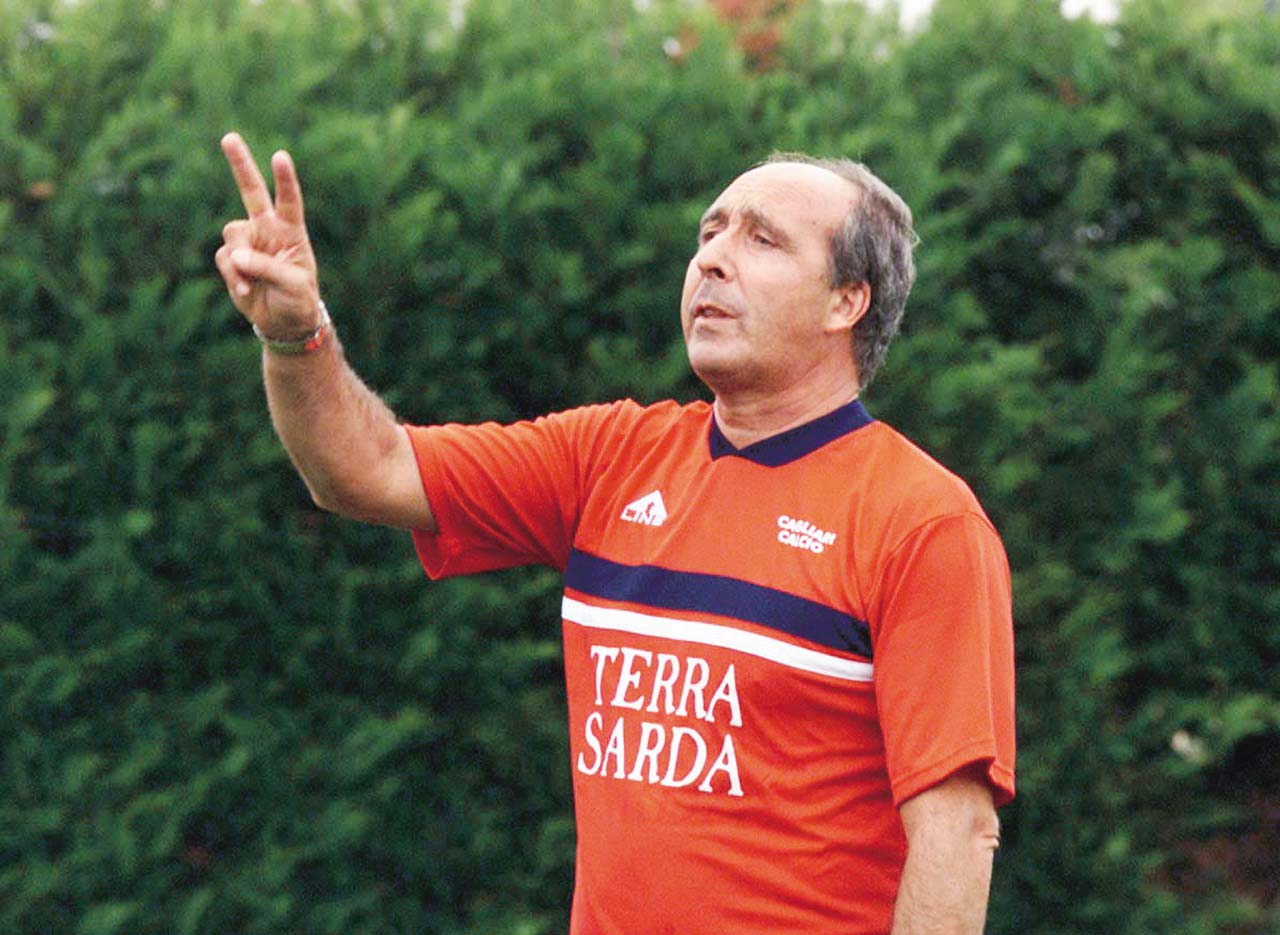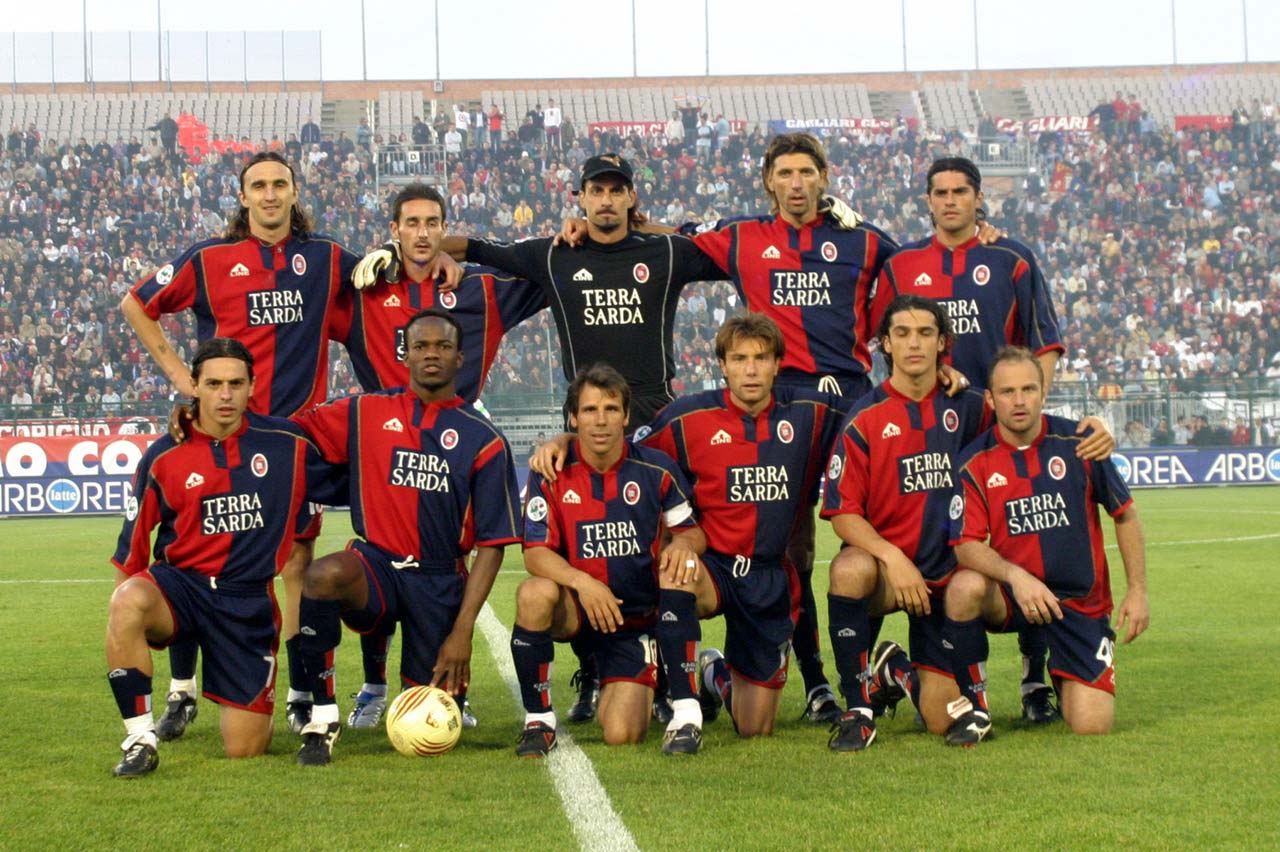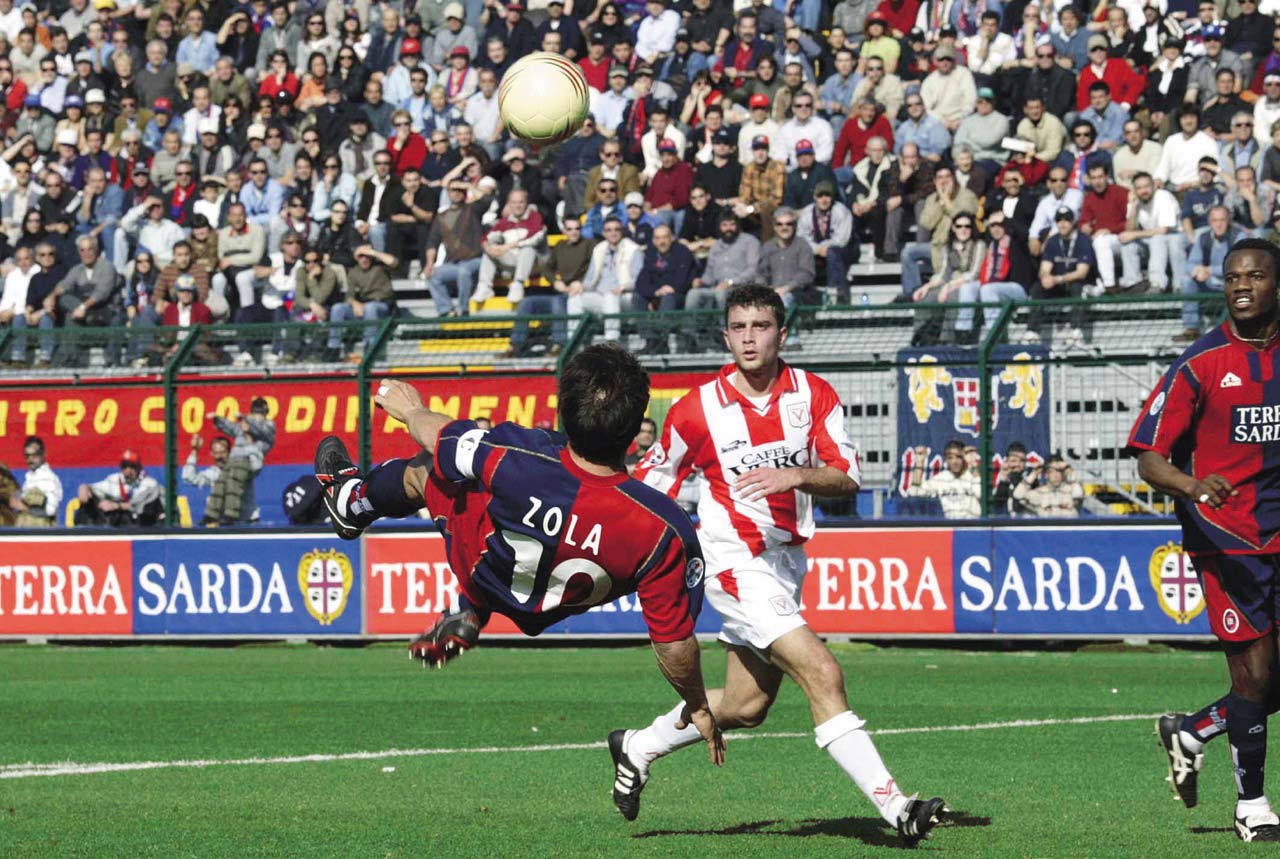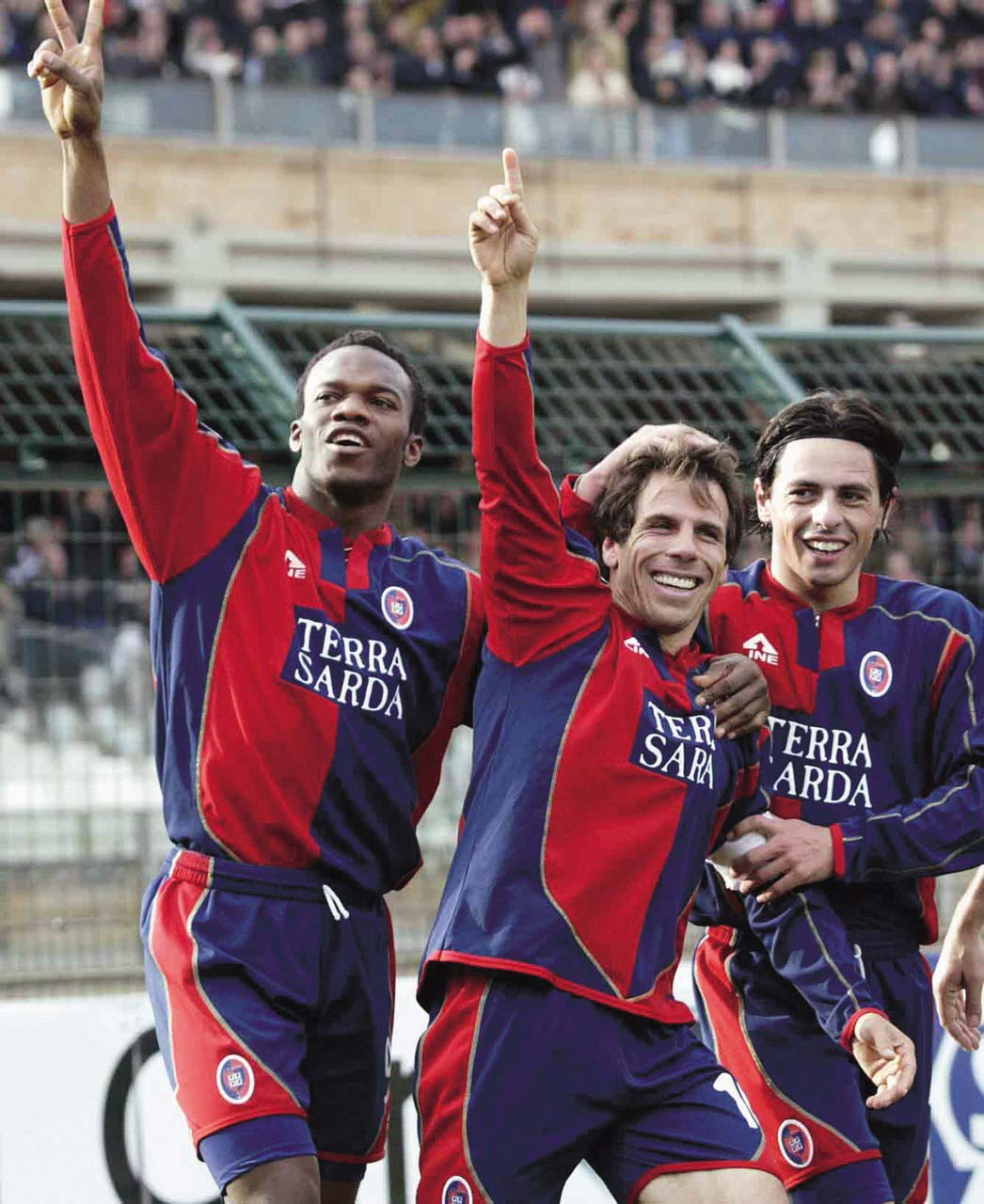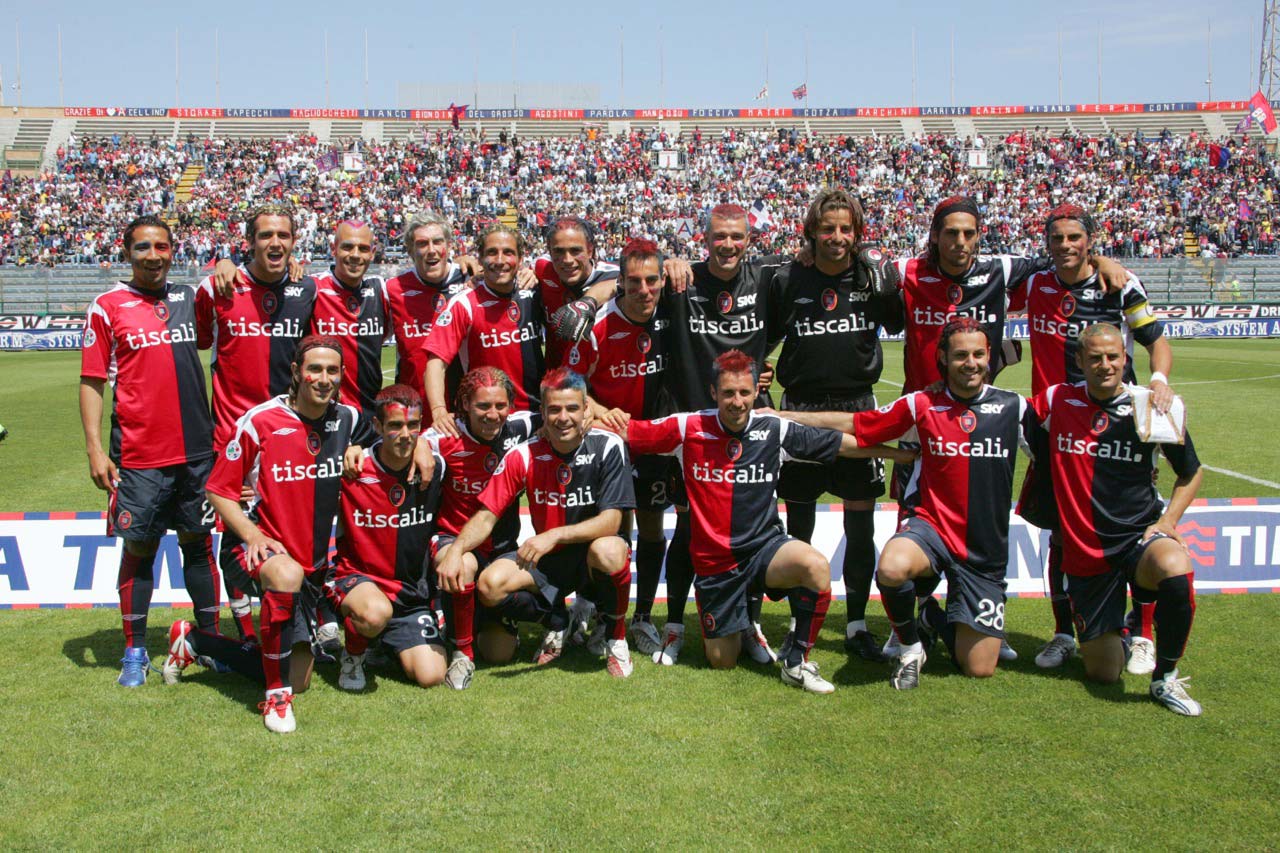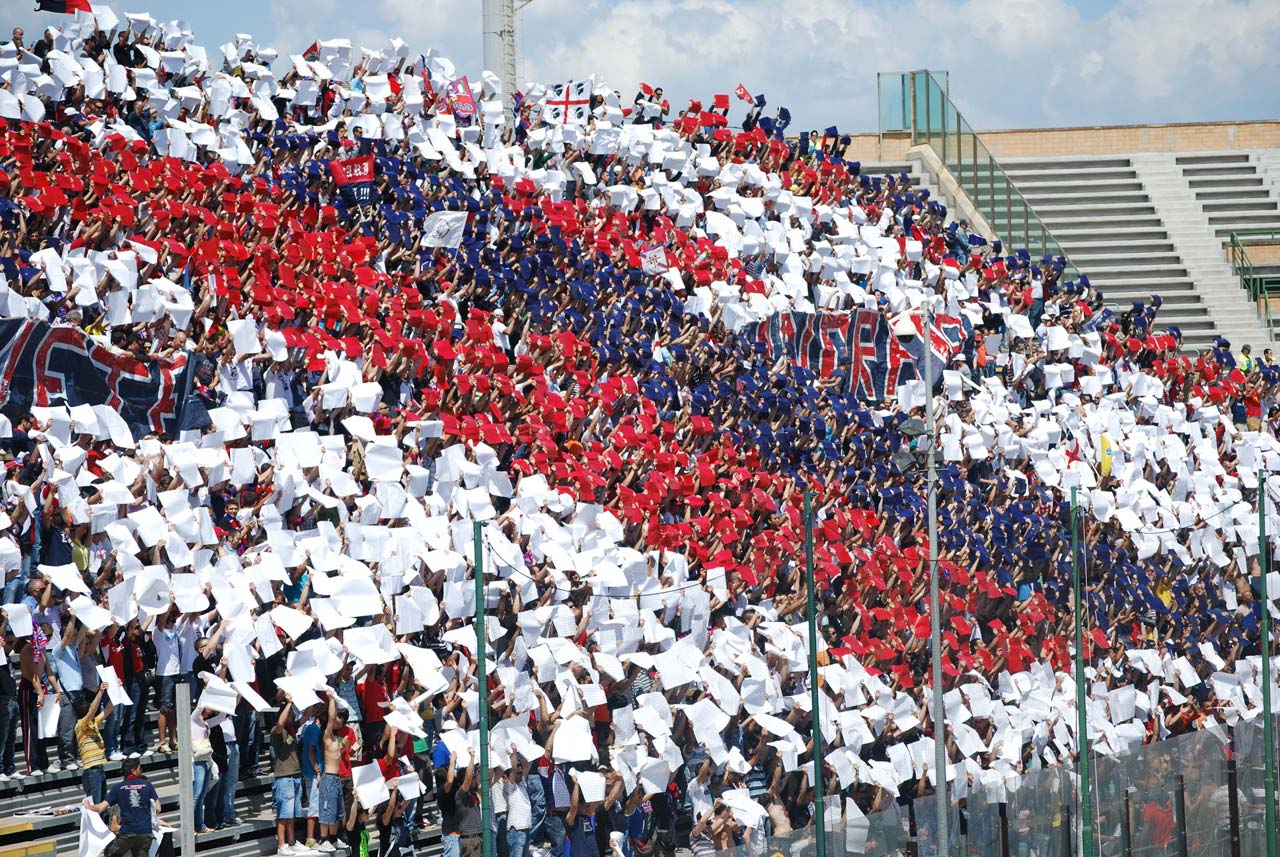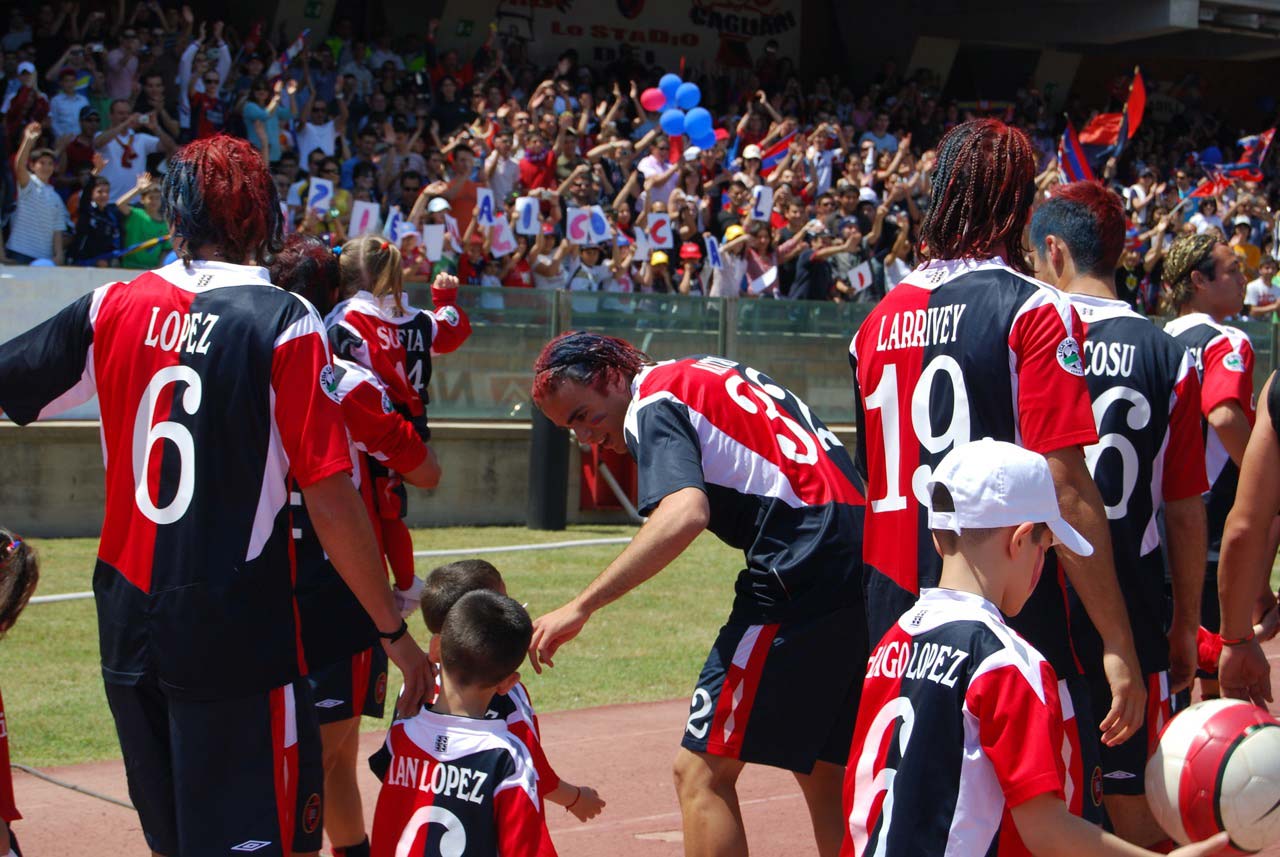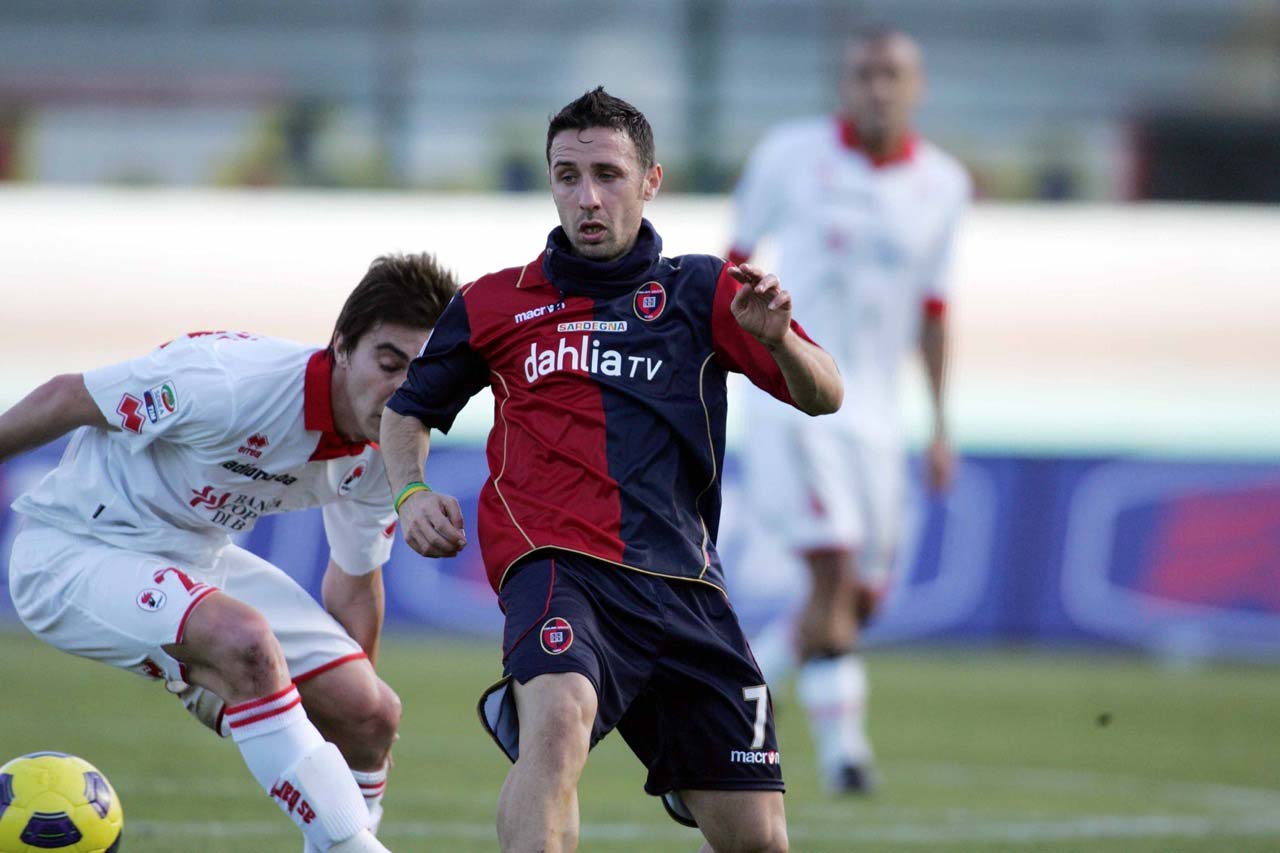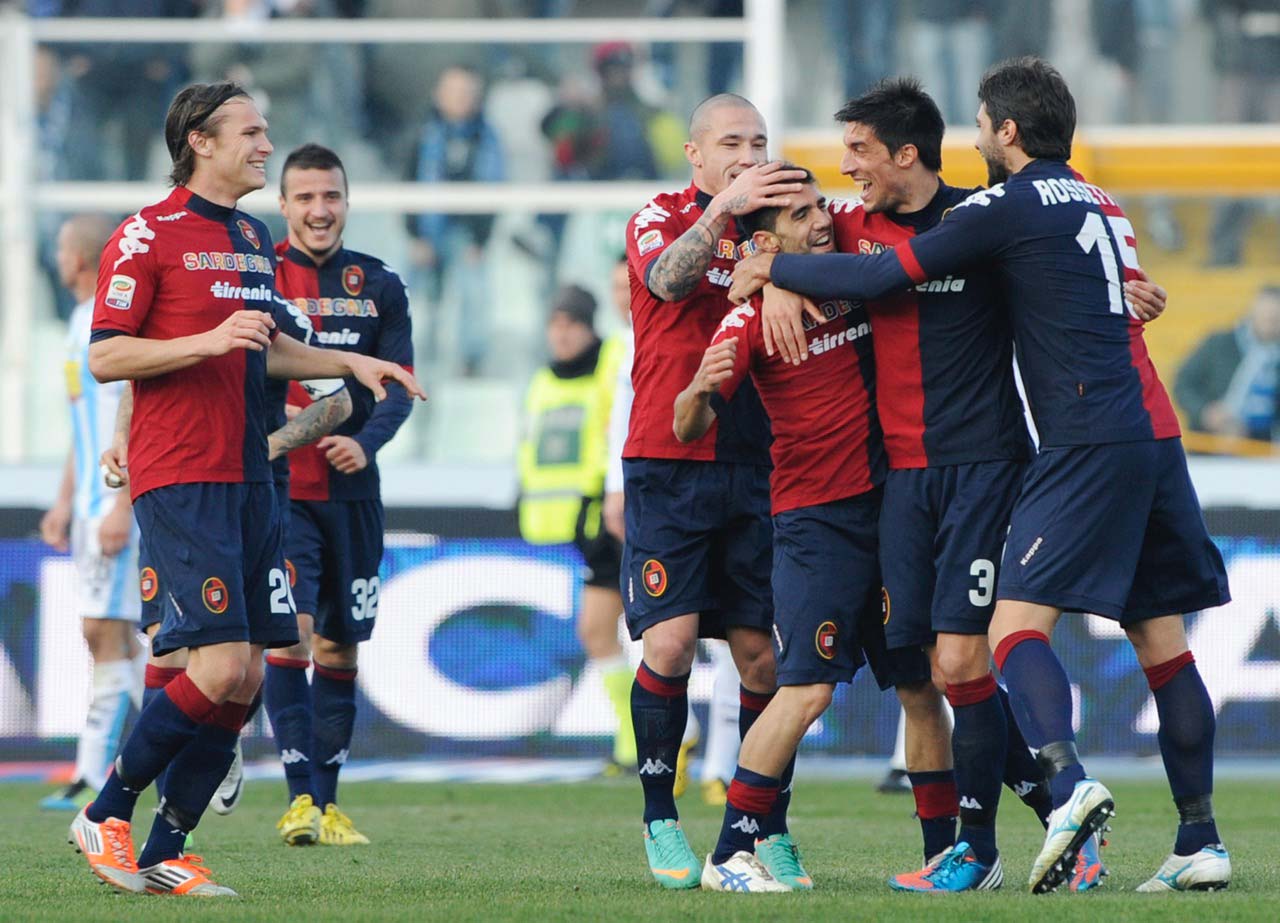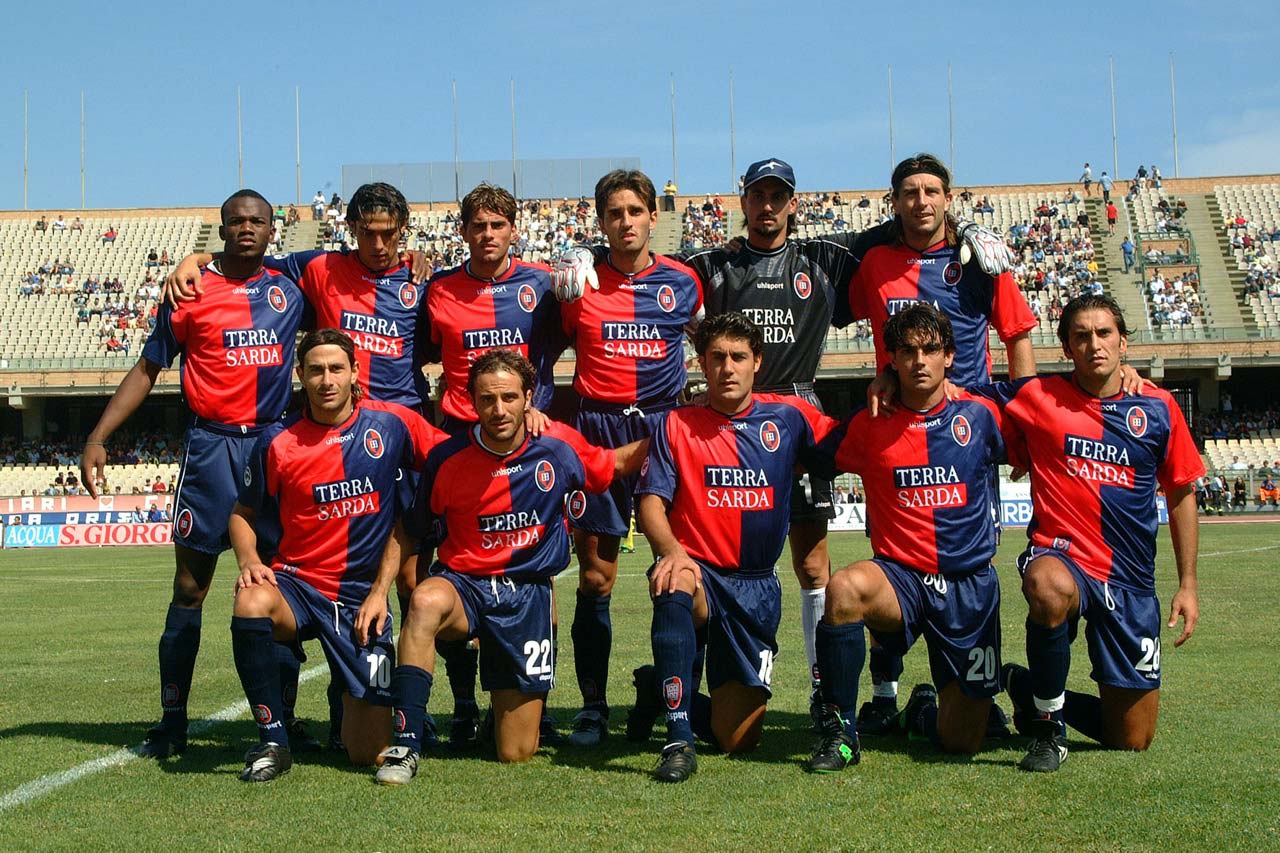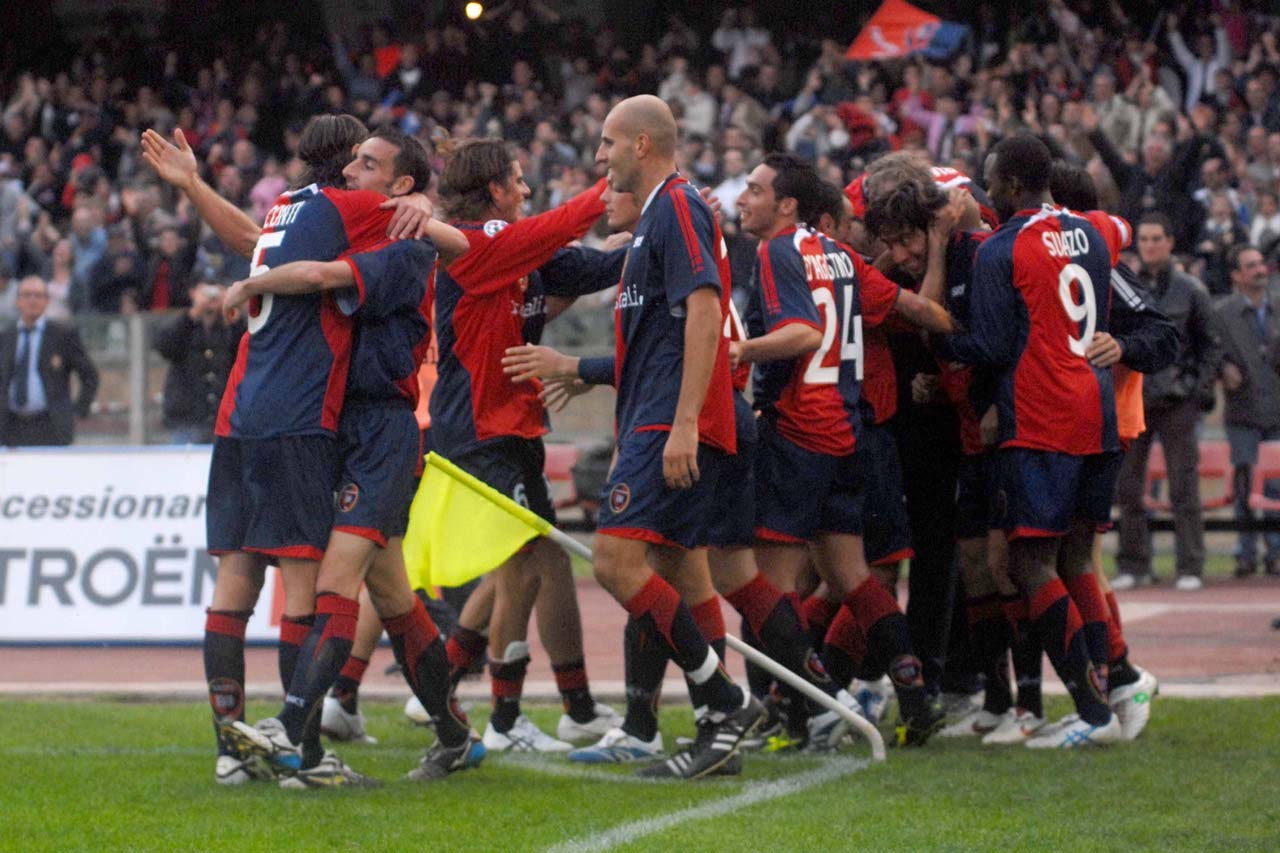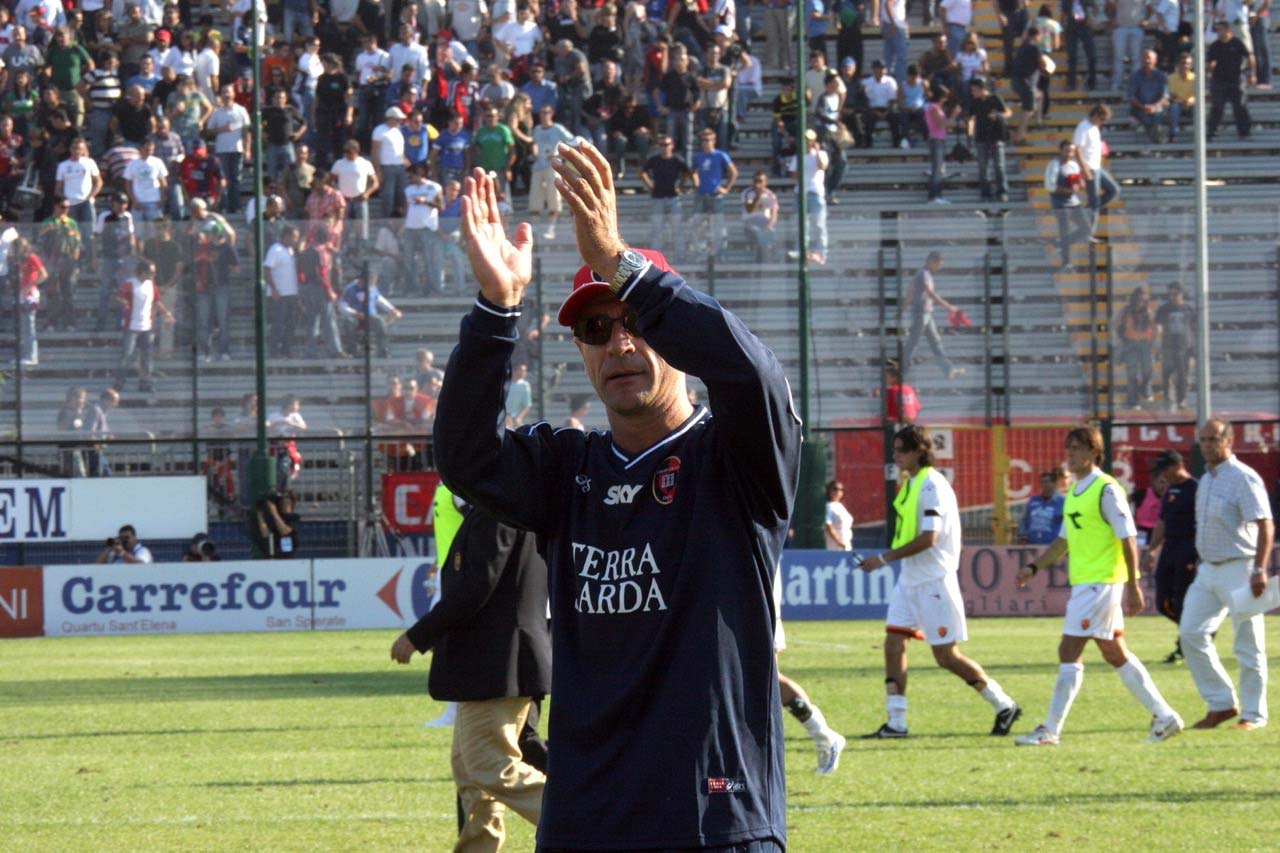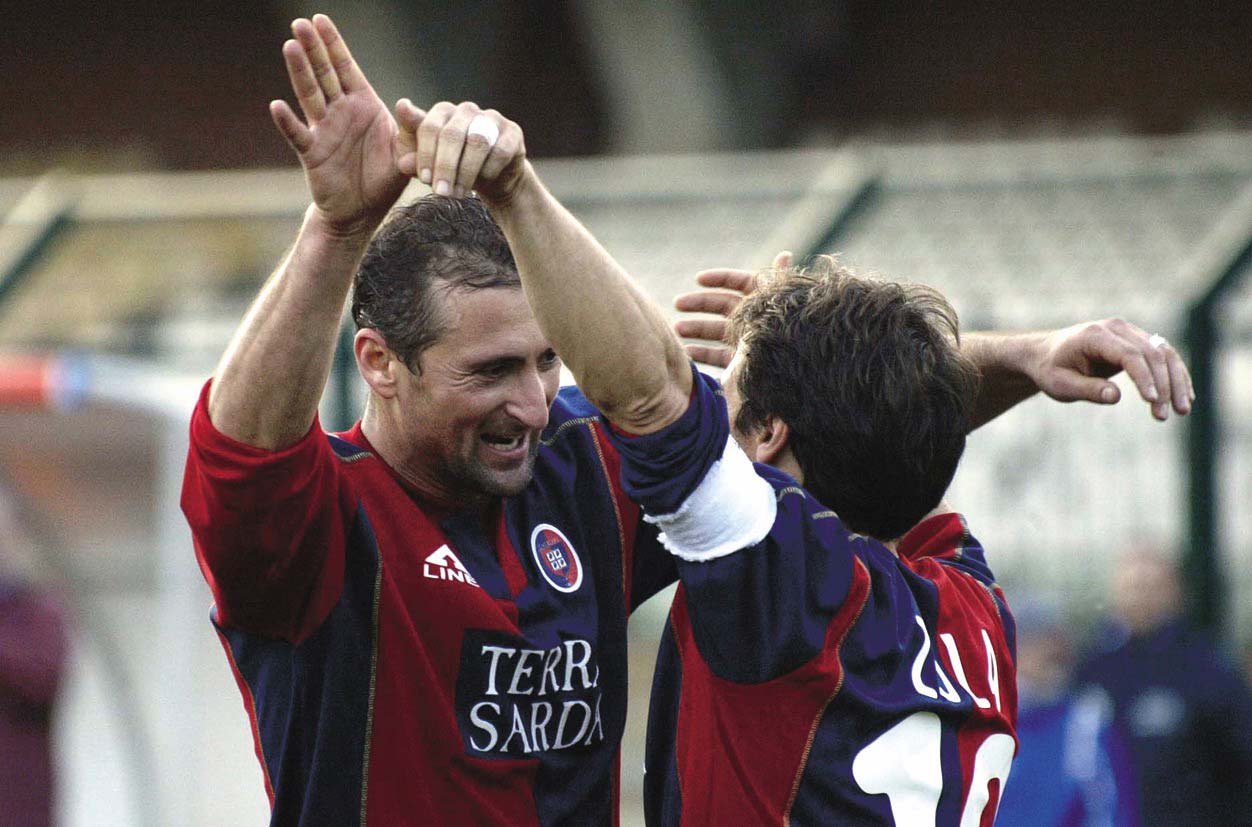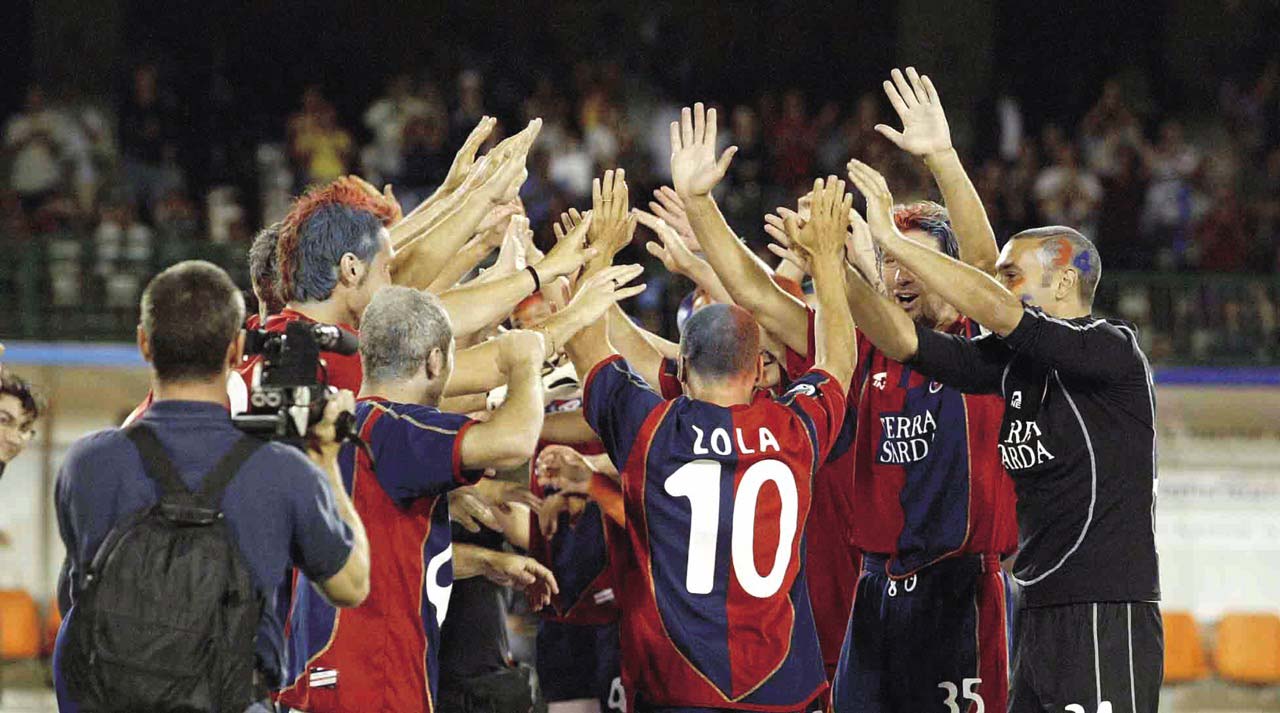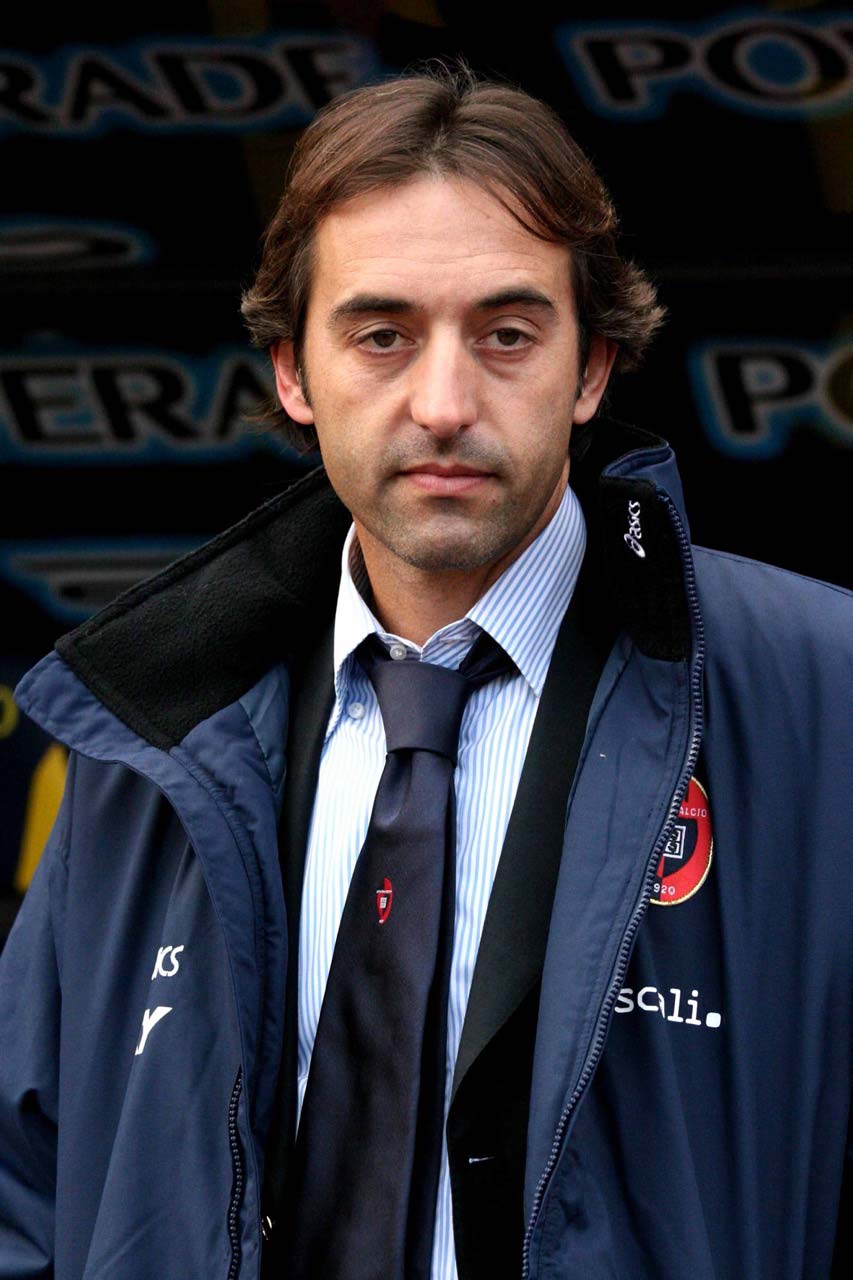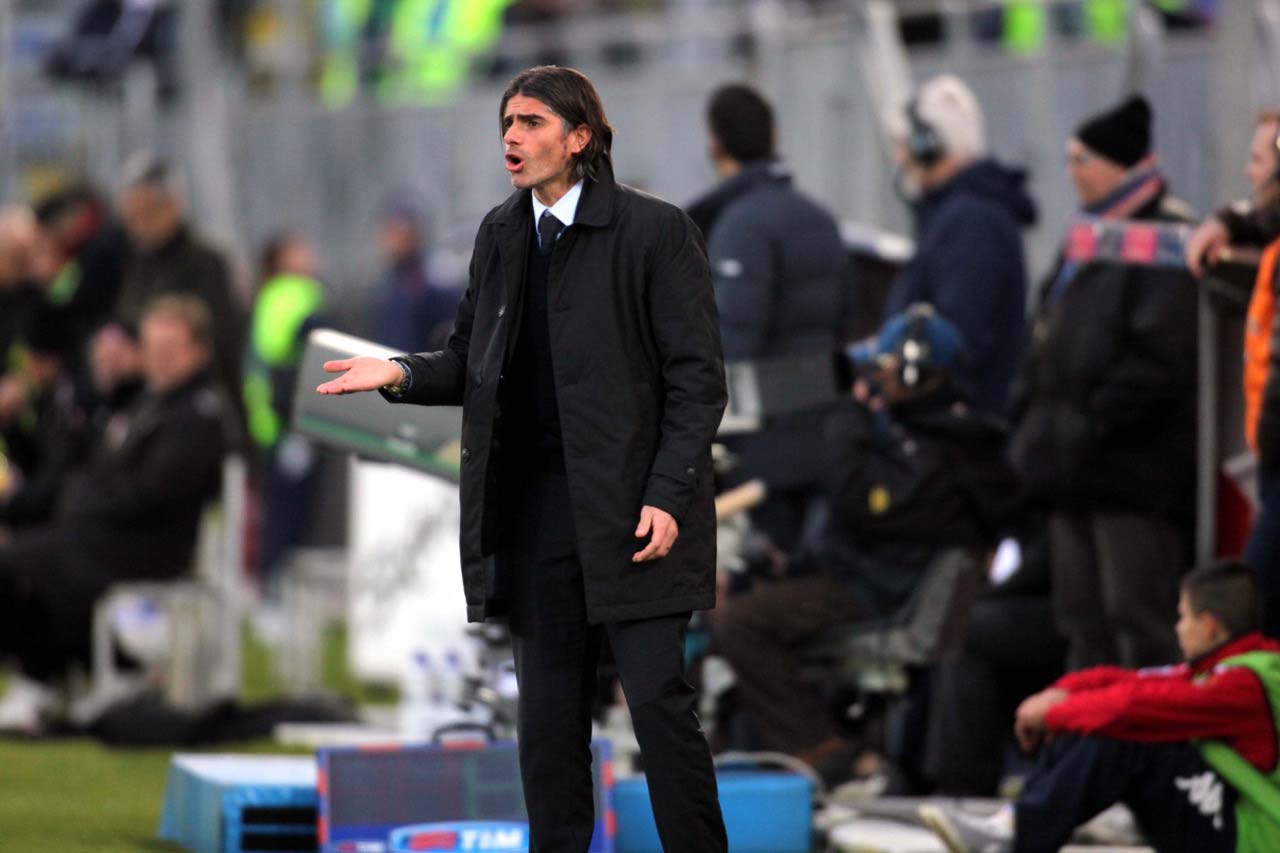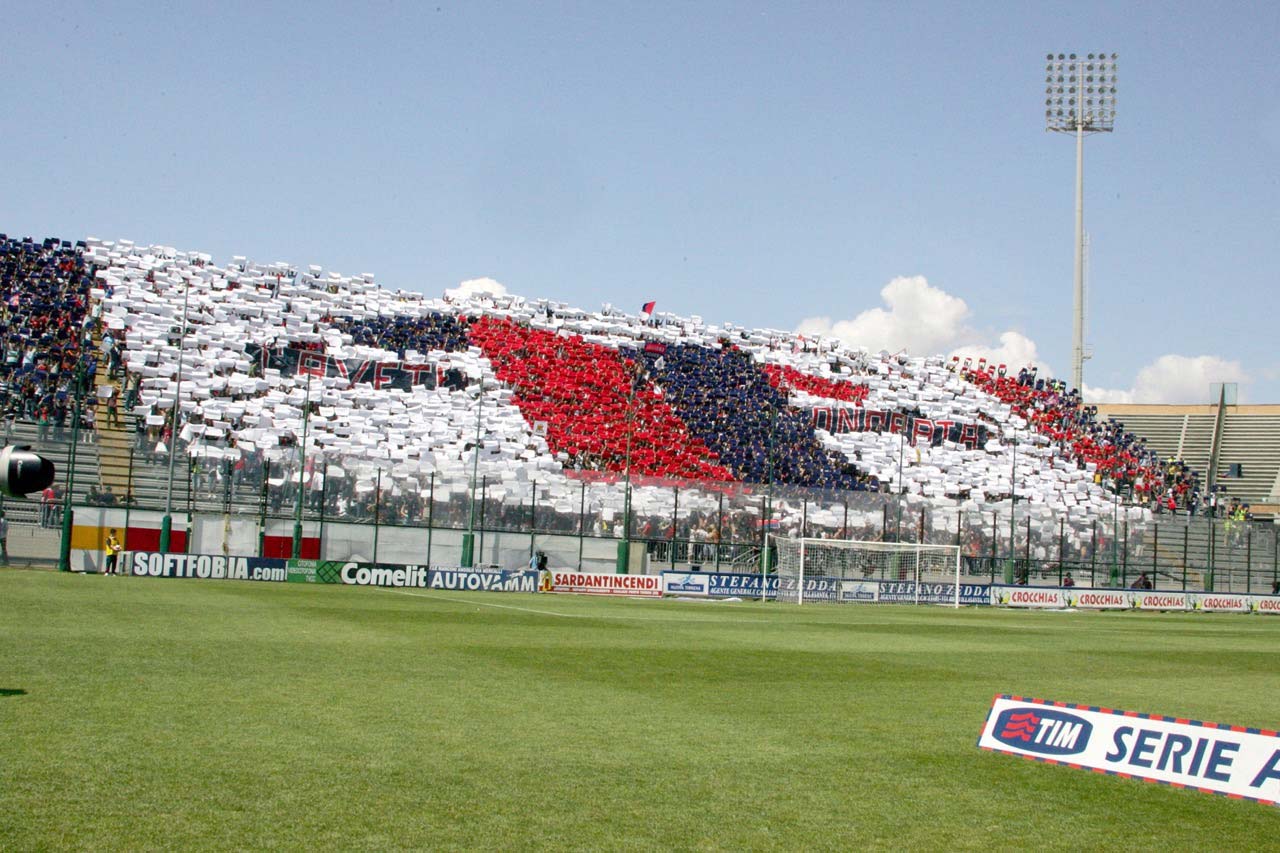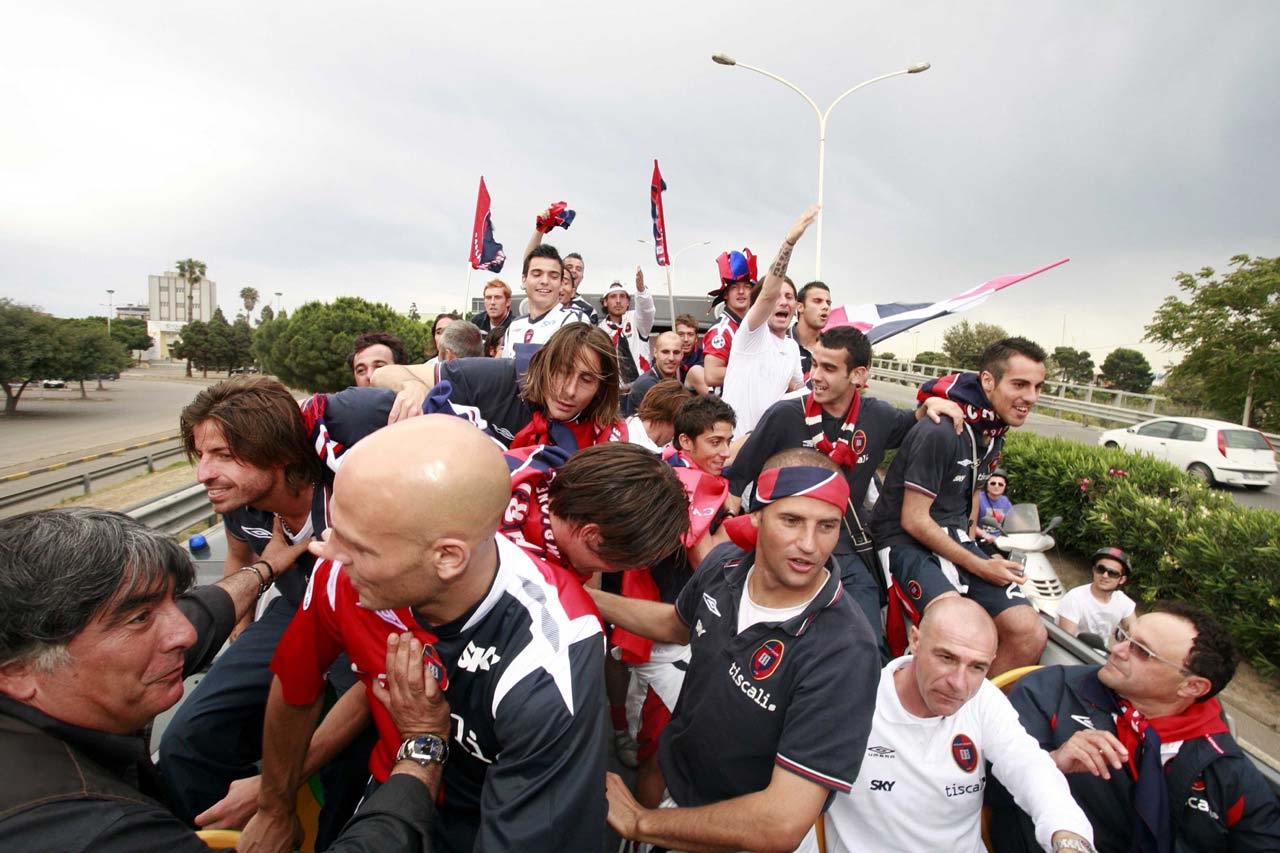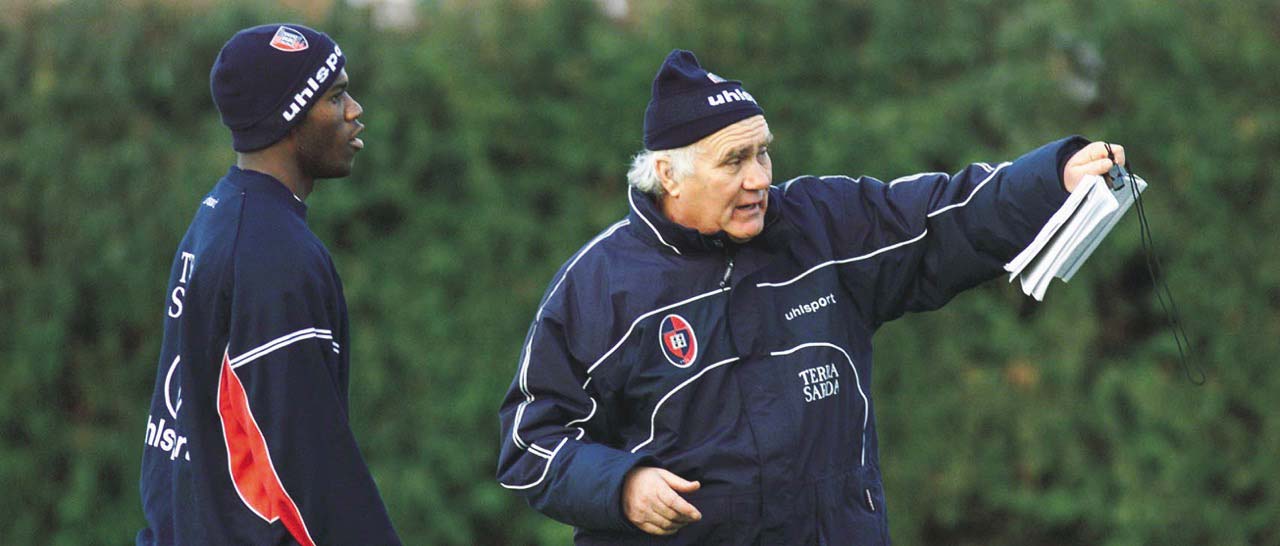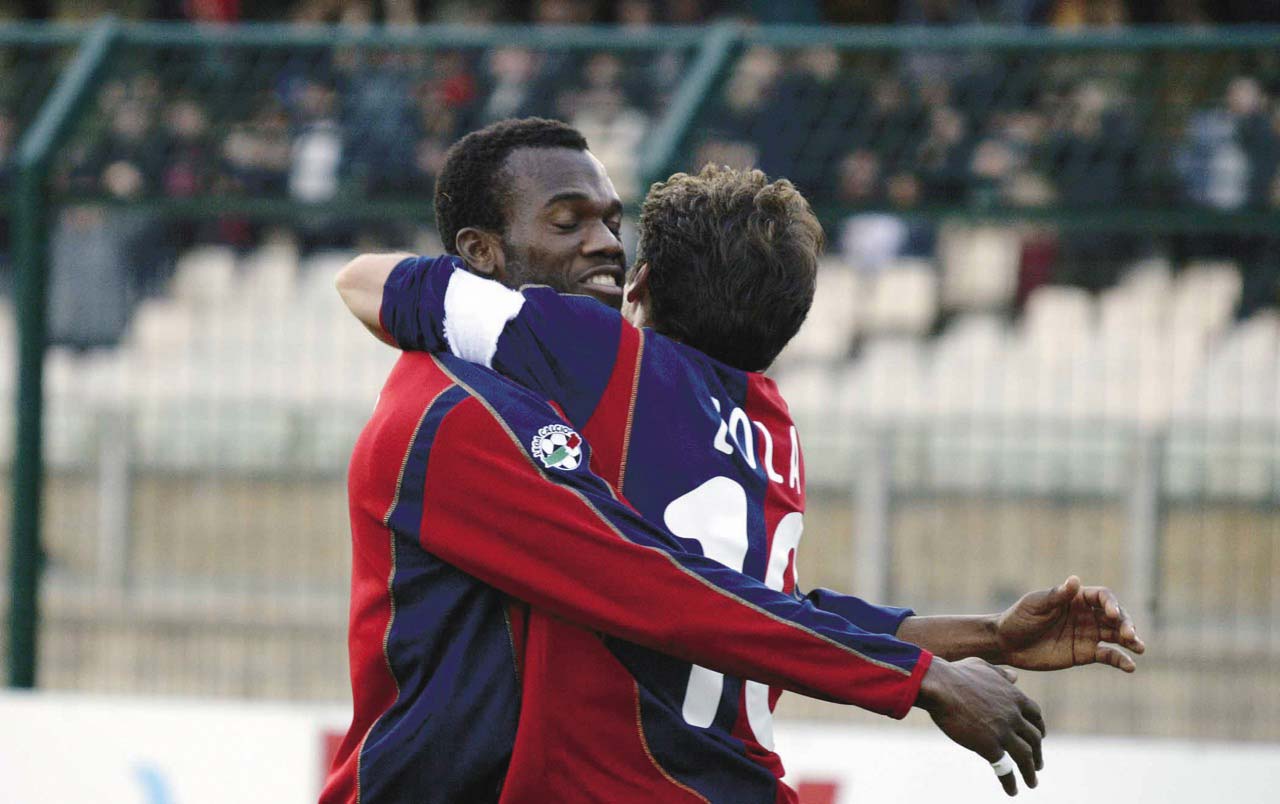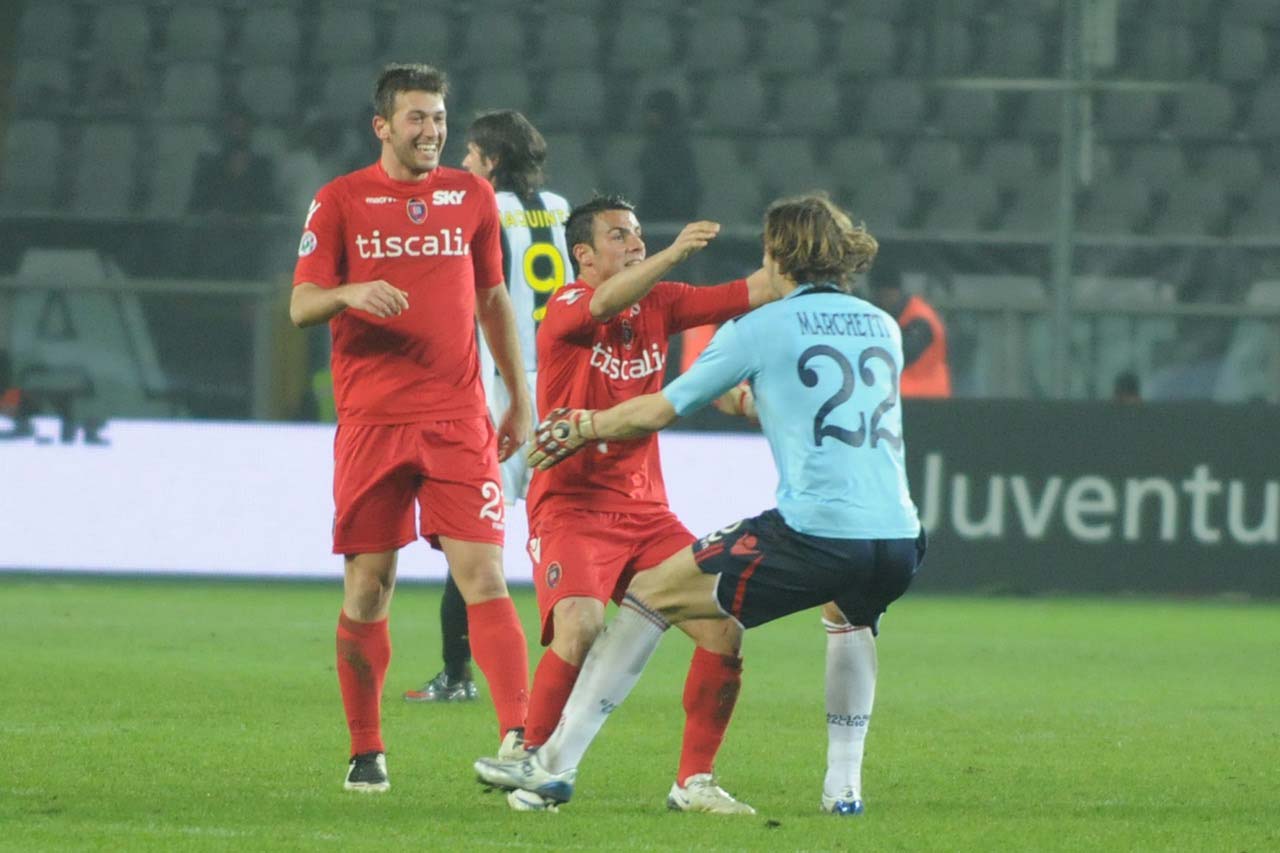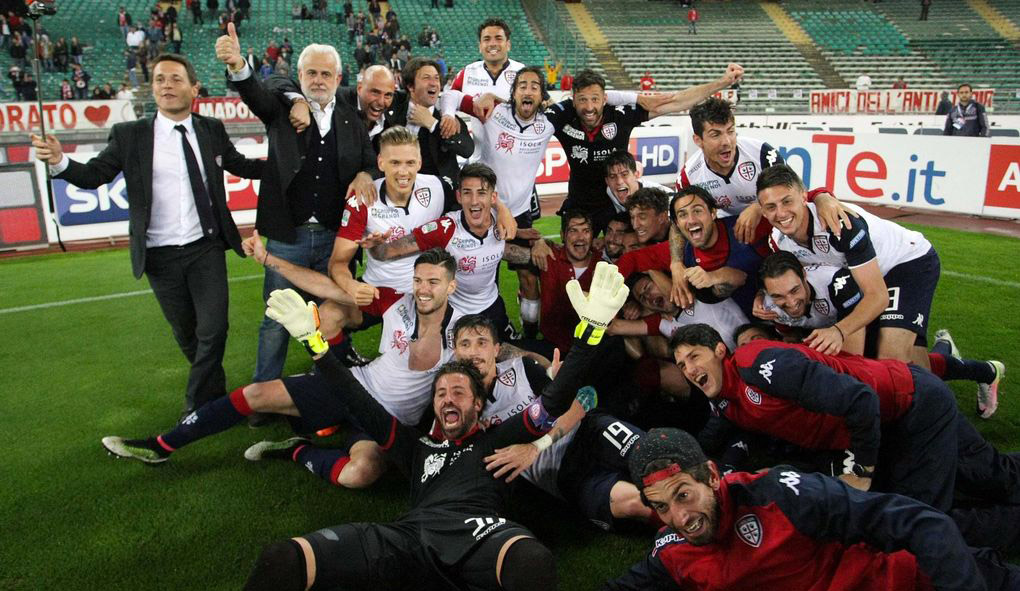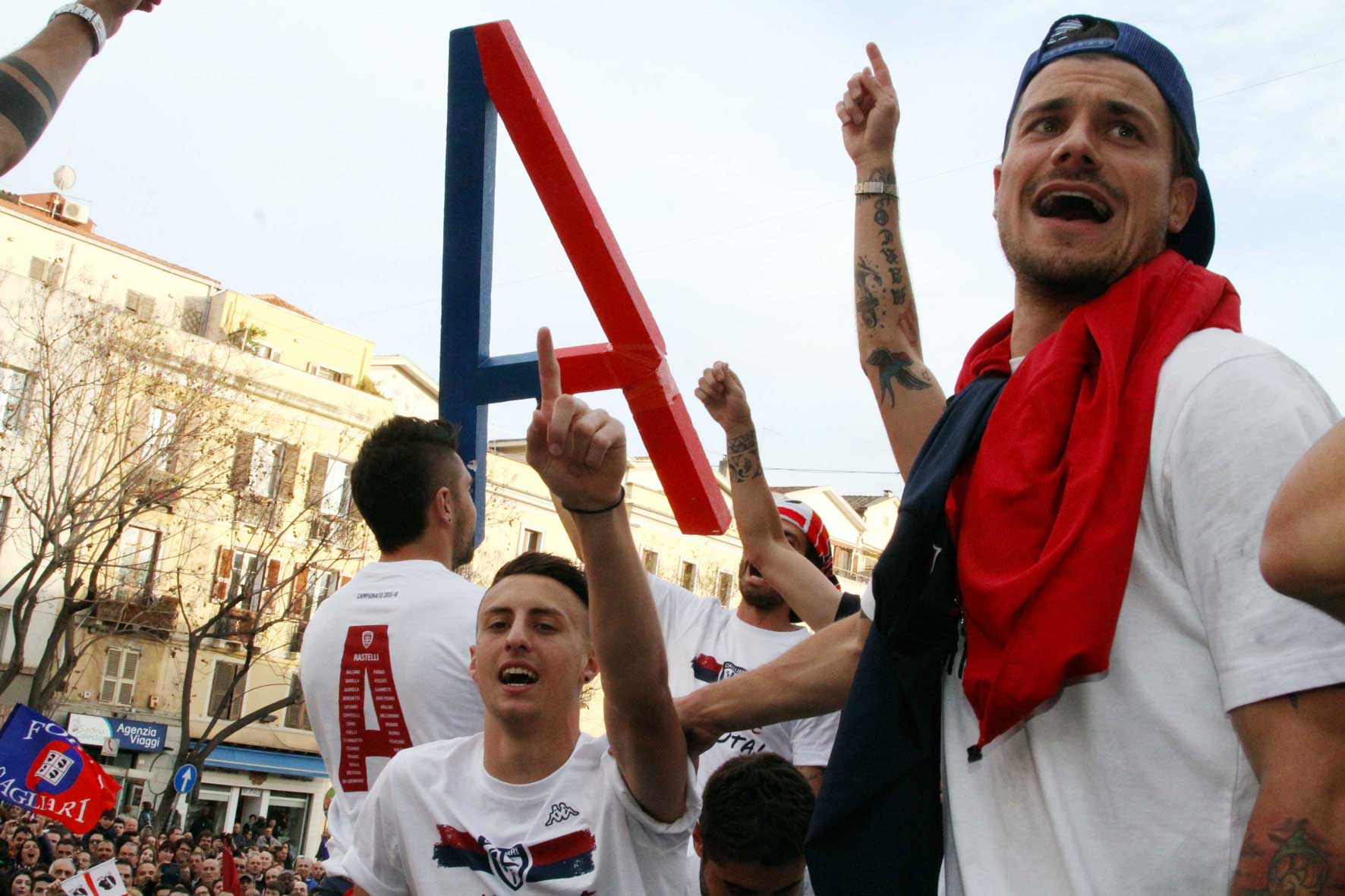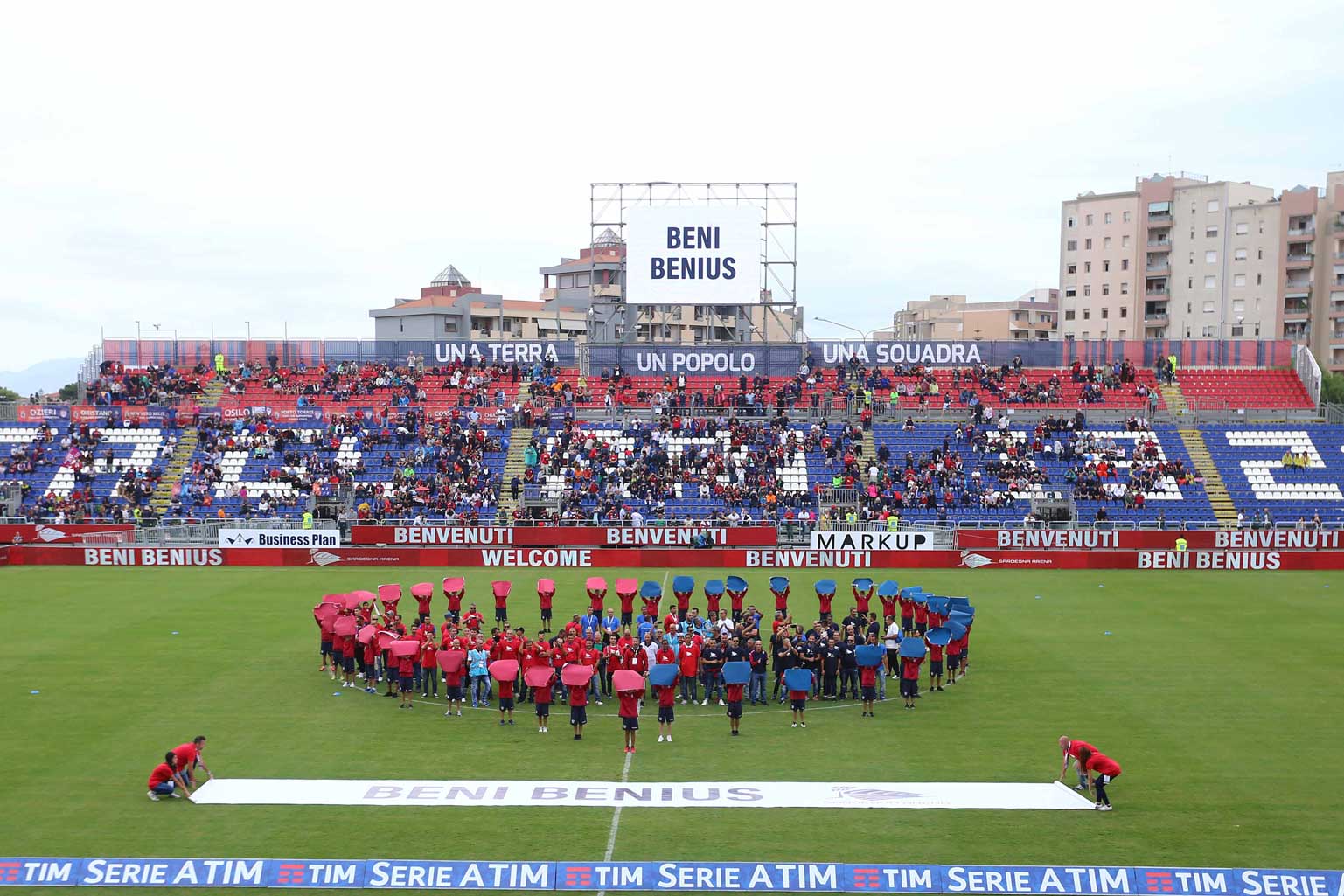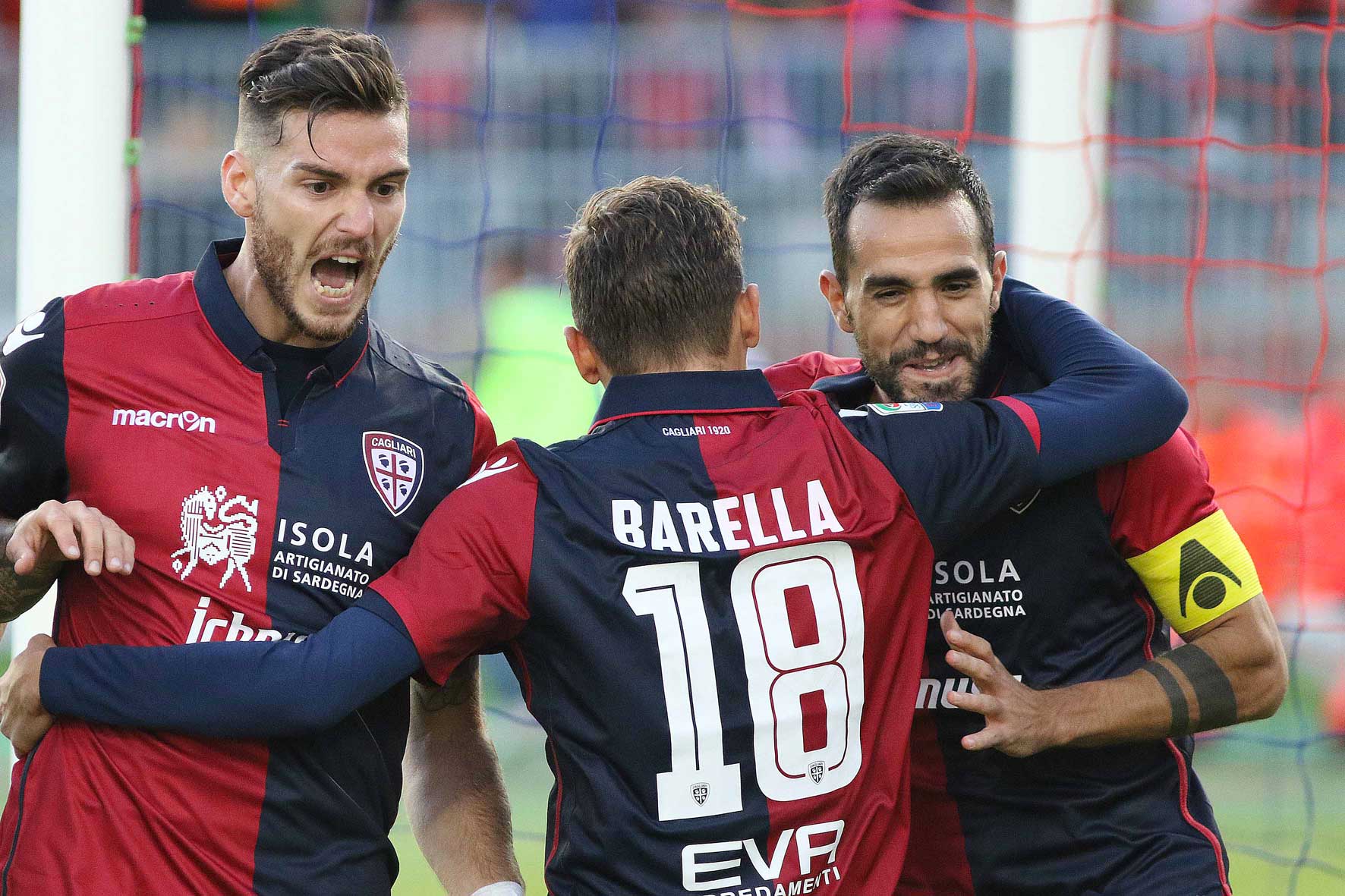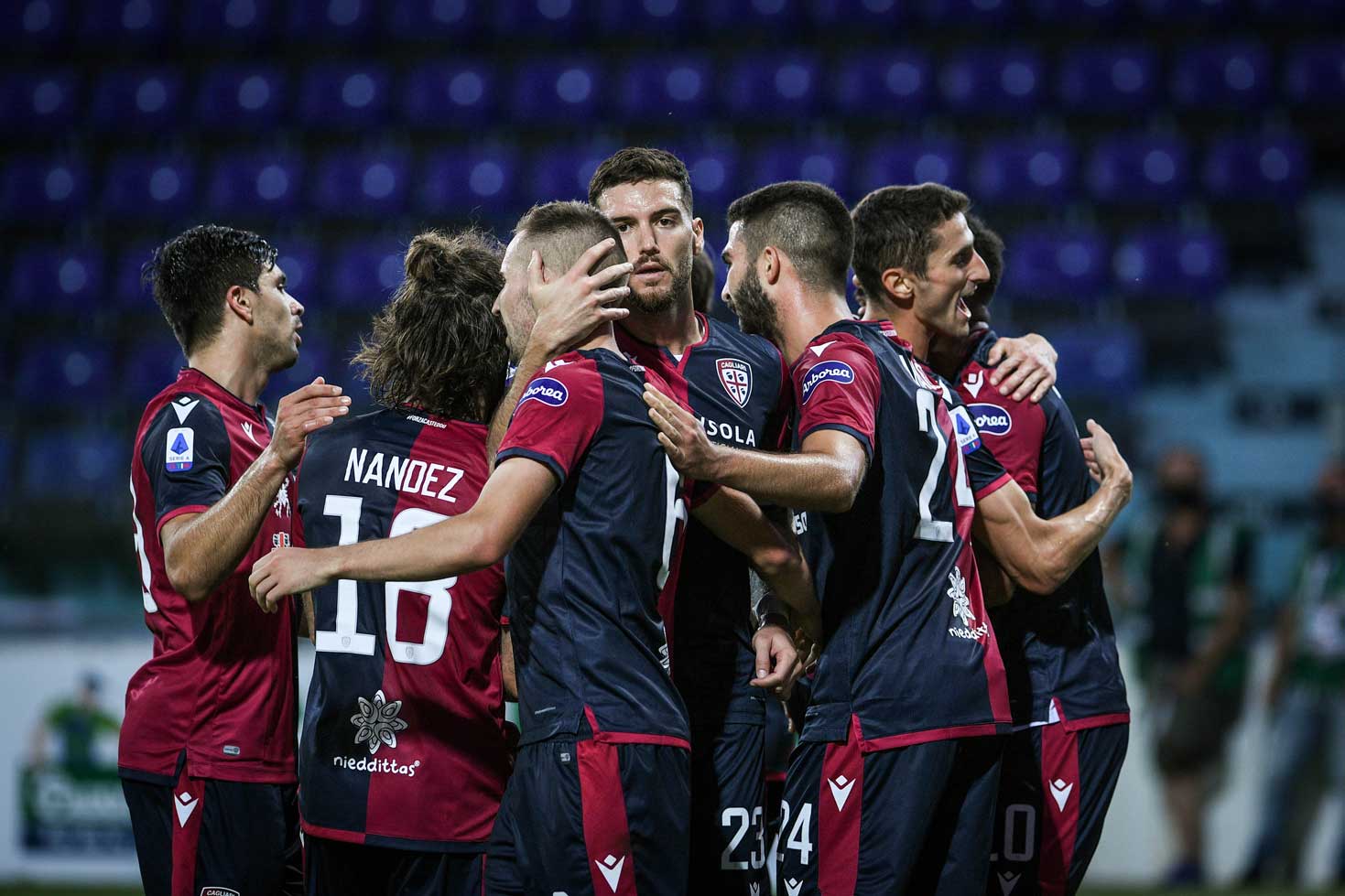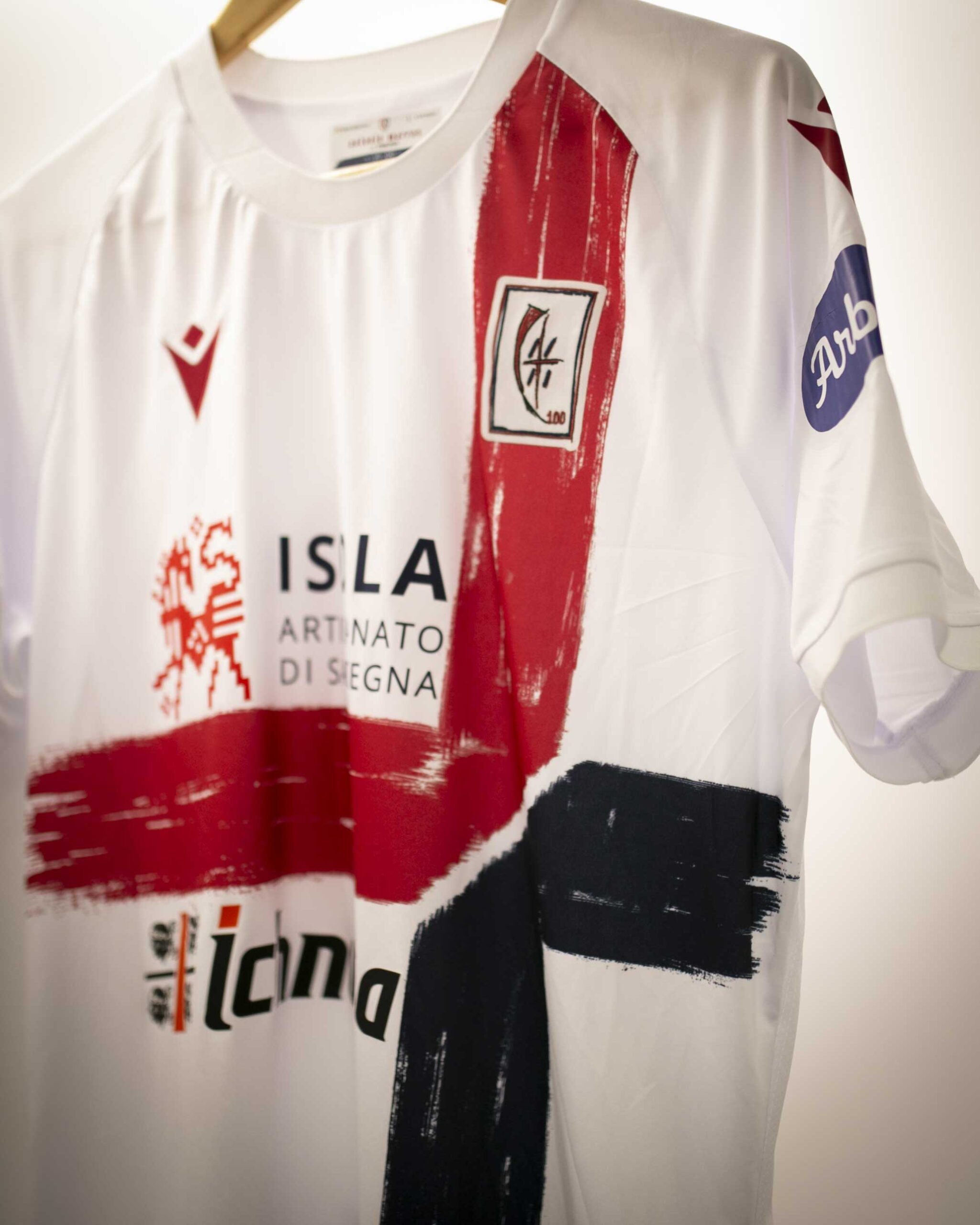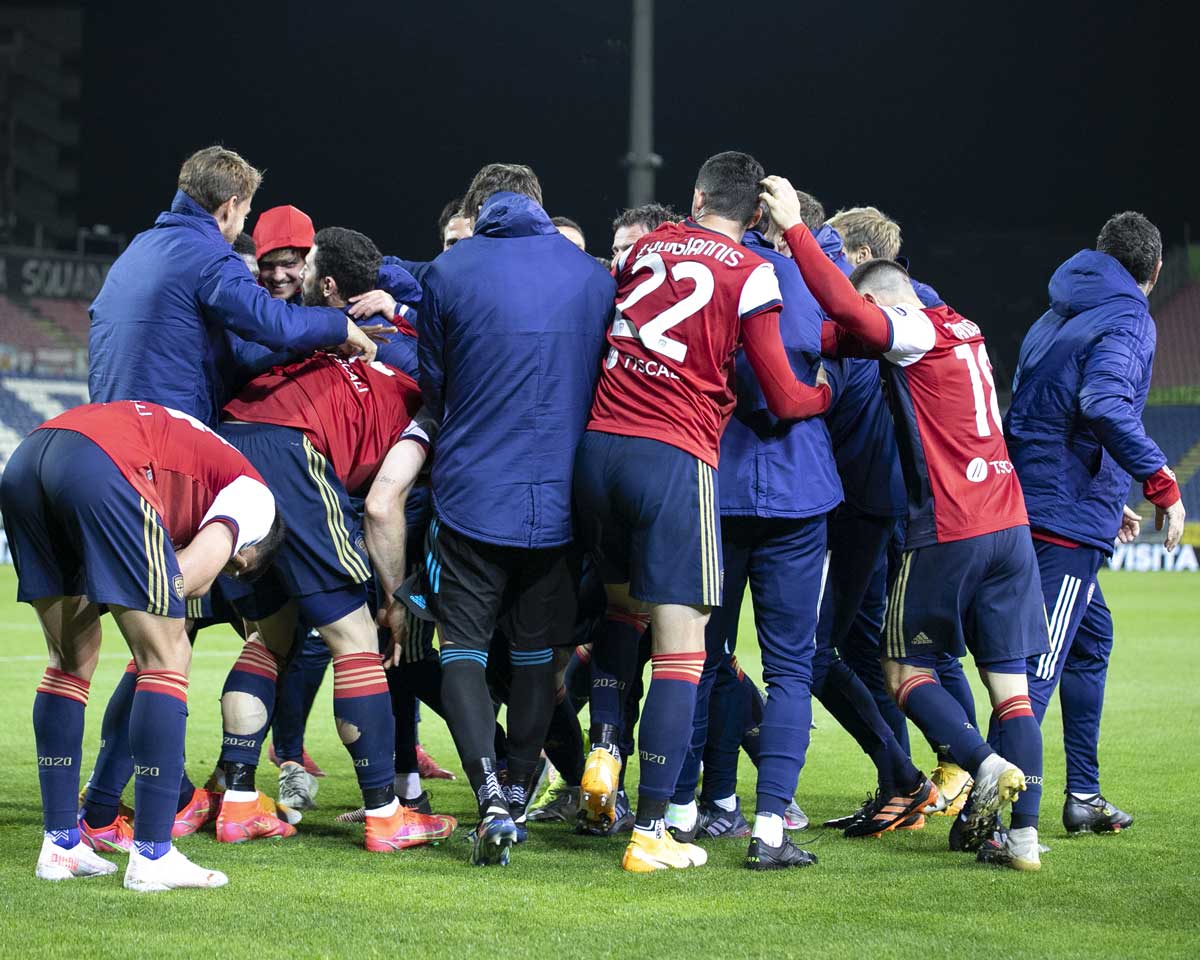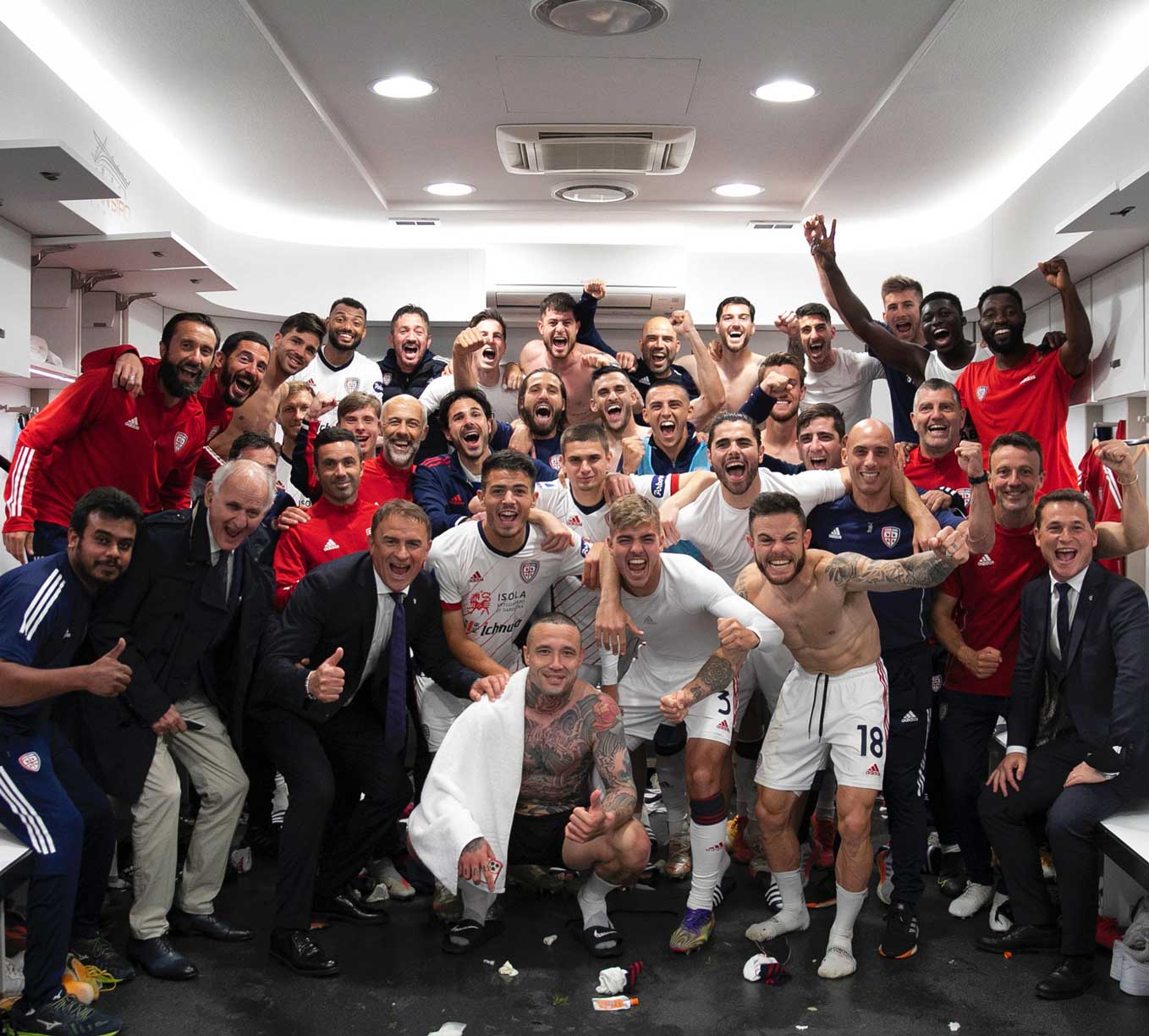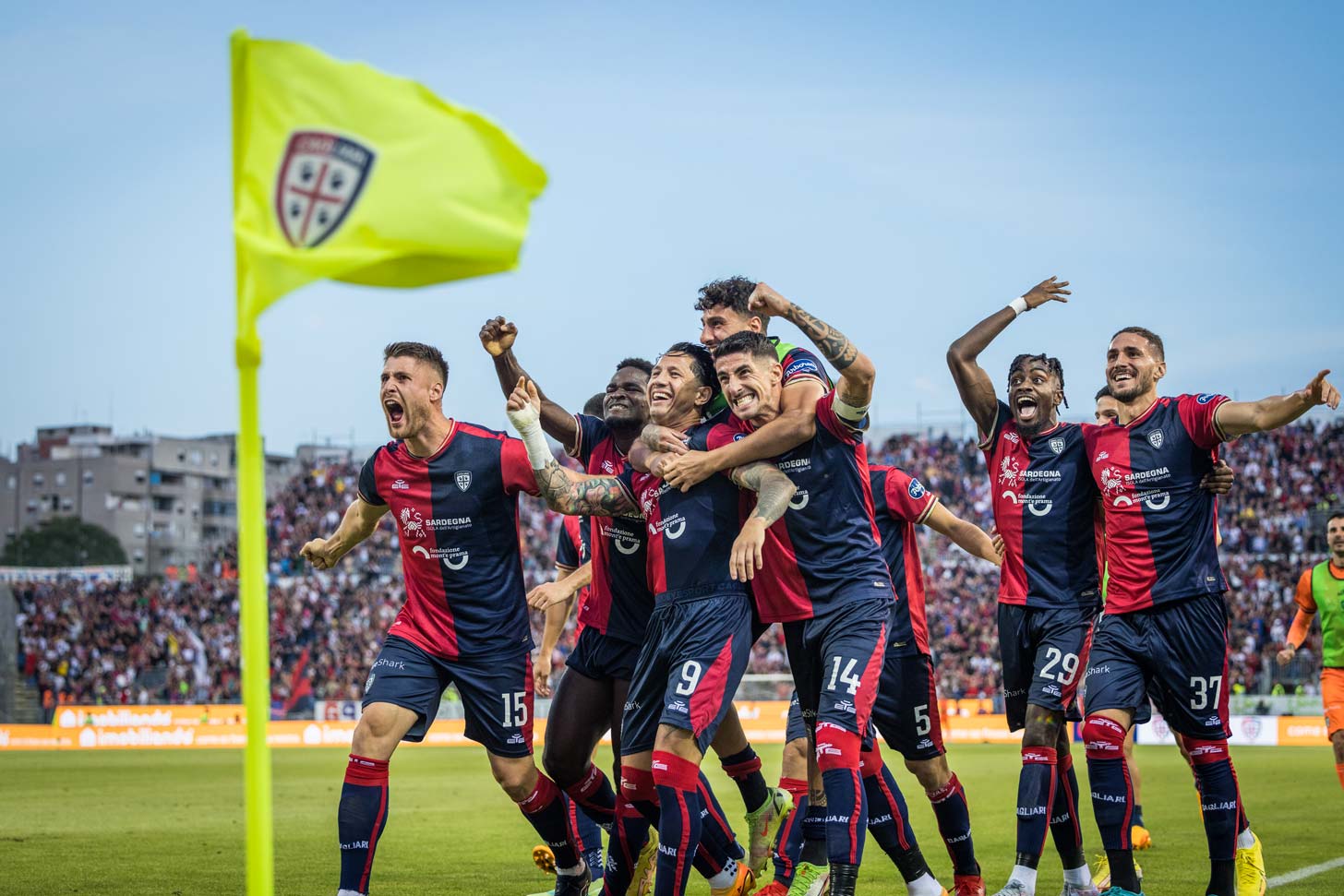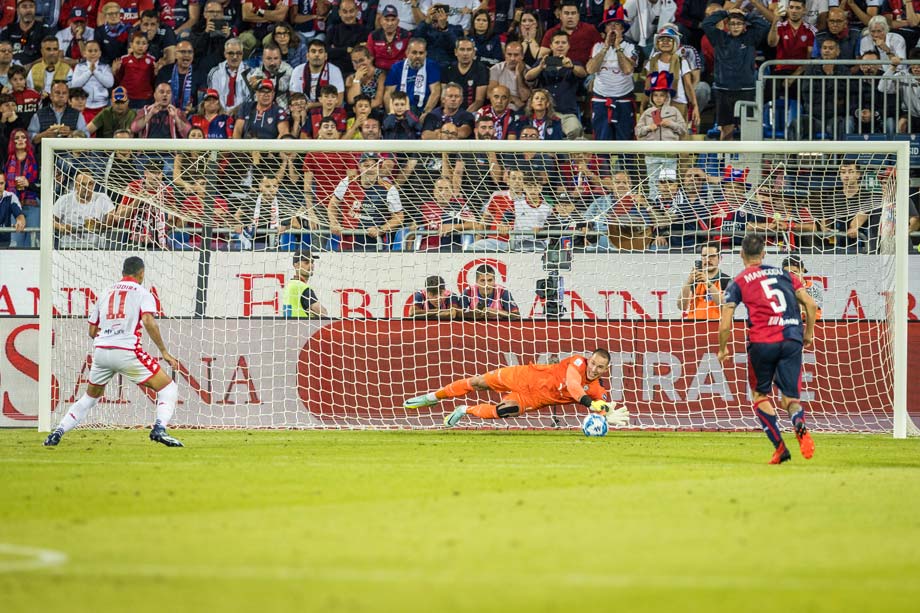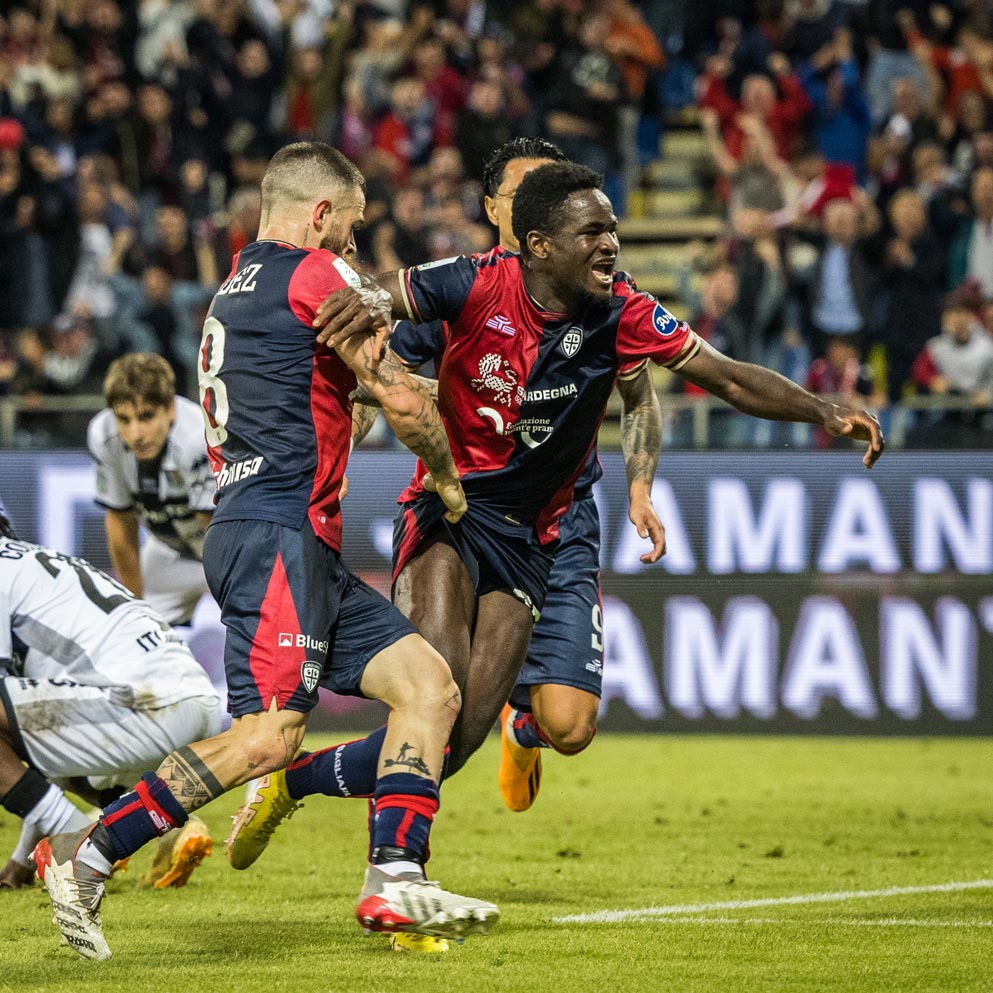Rossoblù History
Cagliari Calcio is the pride of an entire region, one of the best-loved teams in Italy. The 1970 Scudetto was its apex, but the red and blue stories should be read like the novel of a lifetime.
The good and the bad, the joy and the pain: exhilarating victories, unforgettable goals, but also bitter defeats and ruinous falls, from which, however, Cagliari has always been able to recover.
Stories of love and pride, of hard work and sacrifice. The redblue epic awaits its next chapter.
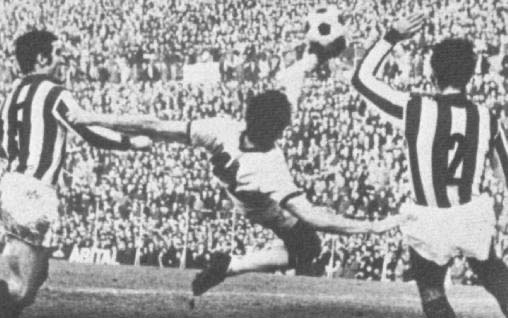
-
Origins
-
1920s
-
1930s
-
1940s
-
1950s
-
1960s
-
1970s
-
1980s
-
1990s
-
2000s
-
The last decade

Origins
Where it all starts

Football in Italy was officially born in 1893, with the foundation of the Genoa Cricket and Athletic Club. Thirty years earlier, the English had codified the rules of the new sport that they were exporting all over the world, with increasing success. The first real match reported in the chronicles was played on Sunday, 27 April 1902, between two groups of students from Cagliari in Piazza d’Armi. Our story officially begins on 30 May 1920. In the hall of the Eden cinema, under the arcades of Via Roma, the first meeting of a group of fans takes place to establish the Cagliari Football Club. The first president is Professor Gaetano Fichera, a surgeon on his way to a career of international renown.
1920s
First steps
SEPTEMBER 8TH, 1920: THE FIRST MATCH
The first match was on 8 September 1920 and was played at the ‘Stallaggio Meloni’. Opponent is Torres, a stronger and more experienced team on paper. The Cagliari players wore white shirts. Cagliari overturned the prediction by winning 5-2: Alberto ‘Cocchino’ Figari was the real driving force with a hat-trick.
THE ROSSOBLÙ JERSEY AND THE VIA POLA STADIUM
The newly formed club then participated in the Sardegna Trophy. The opponents were Torres from Sassari, Ilva Maddalena and another team from the capital, Eleonora d’Arborea. Coach-player was Giorgio Mereu, a lawyer by profession, who would shortly afterwards also assume the role of president. In 1922, he had a grandstand built at the Stallaggio Meloni, necessary to accommodate an increasingly numerous and participating public. In 1926, a new uniform was inaugurated: red and blue. Cagliari, who in the meantime had moved to the new pitch in Via Pola, reached the finals, where they finished in last place with 3 points. The following year, the red and blue were fifth overall. A remarkable escalation.
1930s
The refounding
CRISIS AND PERSEVERANCE
The team’s growth was gradual but unstoppable. After a 5th place finish in 1930, President Comi allowed himself a big purchase campaign. Directing this squadron was the great Egri Erbstein. The Rossoblù dominated the championship: promotion to Serie B arrived. Economic crisis, farewells, exonerations and relegations led to a much-needed re-foundation, both on and off the field. The Cagliari Football Club disbanded: the Unione Sportiva Cagliari was born. Representative Mario Banditelli took the reins of the club, who first of all took care of paying the rent debts of the Via Pola pitch. Under the leadership of former midfielder Roberto Orani, Cagliari returned to Serie C.
1940s
War is coming
REGIONAL CHAMPIONSHIPS
The arrival of war suspends the national championships, what remains is the First Regional Division, a league that is relevant not so much from a technical point of view as from a social one: football brings a brief smile amidst the horror of the conflict. Cagliari was rebuilt from nothing, thanks to the tireless work of president Eugenio Camboni and treasurer Renzo Carro. Amidst many difficulties, an allied bomb creates a sinkhole in the Via Pola pitch. The players rolled up their sleeves and slowly put the pitch back in place. In that first post-war period, elements from the youth academy came to the fore: Gorini, Grandesso, Farris and Ragazzo. The spectre of bankruptcy loomed: Domenico Loi, who brought new blood and enthusiasm, saved the club. A disappointing 6th place came compared to the initial plans, but it was nevertheless encouraging for the future, at the end of a very difficult and dramatic decade.
1950s
A new chapter called "Amsicora"
PLAY-OUT FOR THE TOP LEAGUE
The 1950s opened with magnificence for the red and blue club. President Domenico Loi has the expertise and financial resources to secure the best the market has to offer.
On the bench Federico Allasio, Cenzo Soro as technical director, the 47-goal couple Bercarich-Gennari: Cagliari, with 5 victories and a draw in the finals, landed in Serie B. 1952 was the year of a historic move: Cagliari played at the Amsicora, abandoning the much-loved ground in Via Pola, which was now inadequate.
1953-54 will go down in history as the year of great regret. The Cagliari team coached by Cenzo Soro played the play-off for promotion to Serie A against Pro Patria in Rome. It goes wrong: 2-0 for the Bustocchi inaugurates a negative tradition in the play-offs. It is a bad blow for the environment. Promising youngsters such as Mario Tiddia and Tonino Congiu, the former wearing the number 11 jersey, were later launched. Fourth place in 1959 was illusory. The following year Cagliari had an unlucky season and finished in last place. It was relegation after nine years. President Meloni left the sinking boat, in every sense. A new terrible financial crisis once again brought the shadow of bankruptcy closer.
1960s
Italian Championship Dream
FIRST TIME IN FIRST LEAGUE AND RIVA’S DEBUT
After the disastrous fall to Serie C, a revolution, both technical and corporate, is called for. Enrico Rocca, president, and Andrea Arrica, manager, mark a change of course: the team is tweaked with triggers that will be remembered for years to come. On the bench Arturo Silvestri, known as ‘Sandokan’, in defence Vescovi and Torriglia. A triumphant year marking the return to Serie B. Ricciotti Greatti arrived, Mario Martiradonna was already there. Up front, a tall, thin young man about whom wonders are said: Luigi Riva.
The last day in the championship was played on 21 June 1964: as chance would have it, precisely against the Pro Patria team that had denied the Rossoblù promotion. 3-1 closes the books. The city dresses up. After 44 years of history, the Rossoblù ascend to Serie A.
The impact with the top division is shocking. Despite the contribution of new elements that would write pages of history, such as the Brazilian Nenè and Pierluigi Cera, Cagliari was last at the end of the first round. The red-blues recovered and finished in 6th place thanks to the 9 goals of Riva, who even made his debut in the national team the following year, and the 10 goals of Rizzo, who was also in the national team. Silvestri, at the end of a cycle, left in favour of Manlio Scopigno, known as ‘il Filosofo’ (the Philosopher), who finished an exciting championship in 1966/67. Cagliari’s rise was halted by Riva’s terrible injury in the national team. Without Gigi, Cagliari won only twice in the last nine matches. The final 6th place is ungenerous. Cagliari in the American tourney ended the round in 3rd place and Manlio Scopigno was exonerated. Ettore Puricelli took over, who did not bond with much of the team. A disappointing 7th place arrived, considering the attack formed by Riva and Boninsegna. Gigi was the new man of Italian football: all the big ones wanted him, but thanks to Moratti’s Saras and Rovelli’s Sir and, above all, to his love for the Sardinian land and people, they managed to keep him. Around him, an even stronger team was built. Arrica secured Ricky Albertosi and Mario Brugnera. Now Cagliari is competitive to fight with the big ones. The last piece was missing: Scopigno’s return to the bench. In the 1968/69 season, the team finished second in the championship behind Fiorentina, and second in the final round of the Italian Cup behind Roma.
The appointment with the Championship is only postponed for a year.
1970s
Triumph and rebirth
1970, OUR FIRST SCUDETTO
Historical, magical, epic, unforgettable. Winning the Scudetto in 1970 was a memorable feat, which still remains in the collective imagination of Italian football fans, not just Cagliari supporters. It was a historic result, the first title for a team from the south, which went beyond the purely sporting aspects to also take on a social redemption value for all Sardinians. A victory that arrived not by chance, but at the culmination of wise and shrewd planning by Andrea Arrica. Boninsegna to Inter in exchange for Bobo Gori and Angelo Domenghini: a team ready to amaze the whole of Italy was formed. Cagliari got off to a very good start: a draw at home to Sampdoria and four consecutive victories, including one at the home of Italian champions Fiorentina.
On 14 December 1969, in Palermo, the first defeat of the season. Scopigno suffered a record disqualification after insulting the linesman: five months. Then came five consecutive victories, with Riva unleashed, and the competition fell behind: +4 on Juventus and +5 on Fiorentina. But the red and blue relaxed: a draw at home with Fiorentina, a narrow defeat in Milan signed by ex Boninsegna, waiting for the last matches of the championship. Cagliari-Bari ended 2-0 and it was, at last, certainty of the tricolour. The red-blue team were Italian champions, and the result made all, or almost all, the fans of Italy happy, who had elected Cagliari as a team-sympathiser, and had been won over by the feats, also in the blue jersey, of a strong and loyal athlete like Riva. To coach Scopigno, the merit of having amalgamated the 16 men at his disposal, creating an atmosphere in the locker room that is difficult to repeat; to general manager Andrea Arrica, the merit of having intuited in each of the members of the squad the adaptability to the Cagliari model.
RELEGATION AND ASCENT
The Scudetto ideally closed a cycle, but that Cagliari could still give so much. What stopped it was the second serious injury to Gigi Riva, who was again on the national team. Cagliari, first in the standings, lost ground and went out of the Champions Cup against Atletico Madrid. Some of the banners of the Rossoblù epic left the scene: Greatti, Martiradonna, Domenghini and Cera left. There were still a few last gasps, like the 4th place in 1972, but the golden era was behind them. Several coaches followed: Gigi Radice, Luis Suarez, Mario Tiddia, but relegation was only postponed. Riva’s new serious injury is a coup de grace to his career.
In the 1975/76 season, Cagliari relegated to Serie B after 12 memorable years. Reconstruction is difficult, starting from the foundations. In the meantime, two Sardinian scorers were born: Gigi Piras and Pietro Paolo Virdis. The immediate return to Serie A, with Iron Sergeant Toneatto as coach, failed because an orange hurled by a fan hit the Lecce player Cannito in the face. 0-2 forfeit, and promotion lost in the play-offs with Atalanta and Pescara. As a matter of urgency, Riva moved from the field to the control room. Together with President Mariano Delogu, and Mario Tiddia on the bench, they took care of a club that had seen better times. A young and jaunty team was formed, linked by the now flag-bearer Mario Brugnera, elected best player in the B series: it was back in the A series. The team proved to be fully up to the task even in the top category. The bomber Selvaggi explodes, another talented player discovered in Serie B and overlooked by the football that counts. Tiddia’s Cagliari remains in the fans’ imagination as one of the most beautiful and enjoyable red-blue teams in history.
1980s
From darkness to the "Serie A'
BLACK CRISIS YEARS
The 1980s saw the black crisis of the Società rossoblù, a bankruptcy escaped. The first years bode well with the Selvaggi-Piras-Virdis trident: a 6th place finish and acclaim for the beauty of the team’s play. However, a change in society was in the making. Cagliari was taken over by Alvaro Amarugi: ideas and imagination clashed with the entrepreneur’s limited financial resources and fiery character. First a thrilling salvation, then a relegation. A difficult season, with the failure of the foreigners Uribe and Victorino, the contrasts between Riva and Giagnoni on one side and president Amarugi on the other. The economic situation was precarious, life in B very difficult: relegation to C arrived. Riva desperately fought against time to avoid bankruptcy. A group of Cagliaritan entrepreneurs pledged to settle the debts.
New president Tonino Orrù is a guarantee. After a nightmarish season, and the spectre of C2, he is working hard to bring Cagliari back to the top. He hired a shrewd sports director like Carmine Longo, and a young and ambitious coach: Claudio Ranieri. The Orrù-Longo-Ranieri trio worked miracles. From C to A in two years: the exhilarating journey of Silvestri’s Cagliari was repeated. Good luck to the old Amsicora, where the Rossoblù were forced to play due to the renovation work on the Sant’Elia in view of the 1990 World Cup. Once again, it was Serie A, after eight years of suffering.
1990s
International highlight
THE TEAM GETS STRONGER
As Serie A becomes the most beautiful and competitive league in the world, reinforcements are needed. Gianfranco Matteoli, one of the strongest Sardinians ever, crowned his dream of becoming a red-blue. Then, the arrival of the Uruguayan trio: Enzo Francescoli, José ‘Pepe’ Herrera and Daniel Fonseca. Respectively innate talent, tactical ductility and true striker’s flair. Above all, a first striker is missing, who does not arrive even in the repair market. The disgruntled fans contest the club. Cagliari is desolately last at the 12th day with 5 points, and with little hope of going up again. Ranieri rallies, he does not stop believing. The turning point in Turin against Baggio and Schillaci’s Juventus. Down 2-0 after 20 minutes, the red and blues regrouped and caught the Old Lady on an equaliser. With the return to top condition of Francescoli, and the explosion of Fonseca, Cagliari achieved a miraculous salvation.
Ranieri leaves victorious.
A brief parenthesis of coach Giacomini, exonerated after six days. Under Ranieri’s advice, Carlo Mazzone arrived, an old fox who specialises in bringing in the perilous. The time was ripe for a change of ownership. The Orrù family yields to a young entrepreneur from Sanluri, Massimo Cellino. No one can predict it, but he will become the president with the longest tenure in the history of the Rossoblù. The team is ready for a quantum leap. Away with Fonseca at Napoli, comes an unknown Brazilian naturalised Belgian: Luis Oliveira. When he found his size, he became devastating. Francescoli more and more decisive, Matteoli immense in the control room, the contributions of Pusceddu, Herrera, Festa, Ielpo, Bisoli and Moriero: in the 1993/94 season, Cagliari finished in 6th place and qualified for the UEFA Cup after more than twenty years.
Francescoli at Torino, Mazzone at his beloved Roma. On the bench first Gigi Radice (sacked before he even started), then Bruno Giorgi, who was able to find the balance with new recruits Allegri and Dely Alves. In the championship it goes in alternating current. On the other hand, it made a furore in the Uefa Cup, liquidating Dinamo Bucarest, Trabzonspor, Malines and Juventus, stopped in the semi-finals by Inter: to this day, the highest point reached by the red and blue team at international level. 1994 was the year of Uruguayan Oscar Washington Tabarez on the bench. Matteoli’s departure opened the way for the arrival of young bomber Muzzi: European qualification eluded at the last minute. Things were worse the following year, despite the signing of the most successful Italian coach: Giovanni Trapattoni. The results were mixed, and halfway through the season, Trap was forced to pack his bags to make way for Giorgi. Uruguayans Fabian O’Neill and Dario Silva arrived: they would become idols. 1996 was the year after the Bosman ruling: the Italian teams snapped up foreign players at low cost, but the various Tinkler, Lonstrup and Vega were not up to scratch. Mazzone’s return was not enough to avoid relegation to Serie B after six years. Giampiero Ventura, with a revolutionised team, immediately brought Cagliari back to the top division, ending a good freshman championship. The following year was one to forget: first Tabarez, then Ulivieri (his successor) disappointed. At the dawn of the new millennium, Cagliari falls back into Serie B
2000s
The connection with the Sardinian land
GIANFRANCO ZOLA AND THE PROMOTION
Serie B is the usual indecipherable labyrinth, and the first years are not easy. 1999 saw the arrival of a young 20-year-old with a big surname on his shoulders: Daniele Conti, second son of ’82 world champion Bruno. Rome was his birthplace, but also the team in which he found no space to play. From there, the arrival in Sardinia at a young age. That of Cagliari would be the second and last shirt in his entire career: in the years to come, it would become his second skin. The year 2001 was the year of Mauro Esposito’s arrival, the young and very fast Honduran striker David Suazo was blossoming. Giampiero Ventura’s return only served to bring them closer to promotion to the A league.
In the 2003/04 season, the club decided to redo the Sant’Elia turf, forcing the team to make their debut at the Manconi stadium in Tempio. The real coup of the season was Gianfranco Zola, who returned to Sardinia after seven years at Chelsea, with the desire to achieve the great feat: with his magic, he would become the strongest Sardinian player ever. On the bench Edoardo (aka Edy) Reja. On the pitch Gianluca Festa, an old red-blue heart, from Torres comes Antonio Langella, a powerful winger with a sanguine character. Drawn by the goals of its forwards, Cagliari finally returned to Serie A. The following season, the Rossoblù reached the semi-final of the Coppa Italia, lost to Inter.
Different coaches followed in the years to come. In the 2005/06 season, Conti took on what would become his definitive jersey: number 5. In the same year, a young Marco Giampaolo arrived on the bench, first exonerated and then recalled to save the team at the end of the season. In the 2007/08 season, after a breathless salvation the year before, Giampaolo was given carte blanche and, with his 4-4-2, introduced new interesting youngsters: Alessandro Matri, Robert Acquafresca and Joaquin Larrivey. The results, however, are not up to the mark. The return of Sonetti fails to give the right liveliness. On the bench came Ballardini, who bolstered the squad with the arrivals of Marco Storari, the Brazilian striker Jeda, and the return of the centre-back Andrea Cossu, a full-blooded Cagliari native: he chose the number 7 shirt, which became like a second skin for him. The resounding victory over Napoli is a sign of redemption. Acquafresca explodes: 11 his goals at the end of the tournament. Cagliari, which in December seemed doomed, obtained salvation with one day to spare, rightfully registering itself among the greatest feats in Cagliari’s history: cheered on by the crowd, the team made the city tour aboard an open-top bus. From Ballardini to the young Massimiliano Allegri, a former red-blue midfielder of the 1990s who is now projected to begin his coaching career in 2008. The start is one of the worst: five defeats out of five, and all the makings of an exoneration. In truth, Cellino confirmed the trust: the team recovered, even reaching the UEFA zone. Important victories on the pitches of Juventus, Lazio and Inter, champions of Italy. The final ninth place deserves only applause. The arrival of striker Nené brings new life.
Halfway through the season a vertical collapse: Allegri was replaced by Primavera coach Melis assisted by Gianluca Festa. Consolation were the call-ups to the Azzurri for Biondini, Cossu and Marchetti. First Bisoli, then Roberto Donadoni. Despite the sale of Matri, the coach brought order and play back to the team, achieving a quiet salvation. In February 2010, Cossu became the first Cagliari player to wear the Azzurri shirt. In 2011, many new faces arrived: Avramov, Ekdal, El Kabir, Eriksson, Ibarbo, Larrivey (a déjà-vu), and Thiago Ribeiro. On the bench, first Ficcadenti and then the return of Ballardini, and Ficcadenti again with a painful salvation. The unhappy note of the season was the image of a deserted Sant’Elia and the forced emigration to Trieste’s Nereo Rocco for the last four home matches.
The 2012/13 season saw the big return to Sardinia of Tonara bomber Marco Sau, after a stint around Italy. Ficcadenti was succeeded by Ivo Pulga in partnership with Diego Lopez. An unfavourable start, then a resounding comeback: 31 points and a quiet salvation. The problems were limited to the playing field: the Is Arenas stadium in Quartu became available, but bureaucratic obstacles forced the club to emigrate once again to Trieste. In spite of this corporate situation, a quiet salvation takes on a different flavour. The stadium problem did not stop with the new season: in 2013-14 the club returned to the Sant’Elia with a reduced capacity of 5,000 seats. A regular season and a salvation with three days to go.
In mid-season Ivo Pulga took over from Diego Lopez.
The last decade
A new Rossoblù Chapter
SUCCESSES AND NEW BEGINNINGS
In the summer of 2014, the Massimo Cellino era came to an end. The club was taken over by Tommaso Giulini, a young entrepreneur and president of the Fluorsid Group, an international leader in the extraction, processing and marketing of fluorine derivatives and other minerals, metals and chemicals. A new chapter of history opens for Cagliari. In 2015-16, the Rossoblù, entrusted to Torre del Greco coach Massimo Rastelli, swept the Serie B championship, coming first: Cagliari had never won the cadet tournament.
The Brazilians Joao Pedro and Farias are the protagonists, scoring 27 goals between them. Cagliari won 25 out of 42 matches and scored 78 goals, the best attack in the league. Unforgettable wins at Pescara and Bari, which sanctioned mathematical promotion, but also at Vercelli, on the last day, propitiated by a spectacular backhand goal by Marco Sau. Having returned triumphantly to the top flight, the team reached a flattering 11th place in the table, despite a series of injuries that deprived coach Rastelli of pivotal players such as Daniele Dessena, Diego Farias, Artur lonita, Joao Pedro and Federico Melchiorri in turn.
There is no shortage of setbacks, also the result of inexperience. However, the team has great character and reacts promptly. The stamp on the Rossoblù’s excellent year was put by bomber Marco Borriello: 16 goals. The revelation of the year is the young midfielder Nicolò Barella, a product of the youth academy, great personality and the technical skills of a predestined player. The best story is that of Fabio Pisacane, who made his Serie A debut at the age of 30 after overcoming a bad illness: it was his goal in the 2-1 win over AC Milan, the last one scored at the Stadio Sant’Elia. In the 2017-18 season with Diego Lopez on the bench replacing Rastelli. It was the year of Andrea Cossu’s second and final red-blue comeback, the red-blues gaining salvation in the last two days.
It was a historic year because Cagliari inaugurated a new playing field: the Sardegna Arena, a facility built in 127 days: the new home of the Rossoblù until the construction of the definitive stadium in the Sant’Elia area. It was thanks to one of his assists from a corner kick, in Udine, that Ceppitelli’s 2-1 win came about: numbers in hand, it would prove decisive for the Rossoblù’s salvation. The 2019-20 season is the centenary season. Historical events do not help the club: it turns out to be an anomalous championship, suspended for more than three months due to the outbreak of the Covid 19 pandemic, and ended in the middle of the summer period. After a year in Serie B, in the 2022-23 season the Rossoblù won Serie A again, led in the second half of the season, 33 years after the last time, by Claudio Ranieri. In the hearts of every fan will remain the extraordinary playoff ride, from the goals of Luvumbo and Lapadula to the final apotheosis in Bari thanks to the goal scored in the 90+4′ by Pavoletti.


